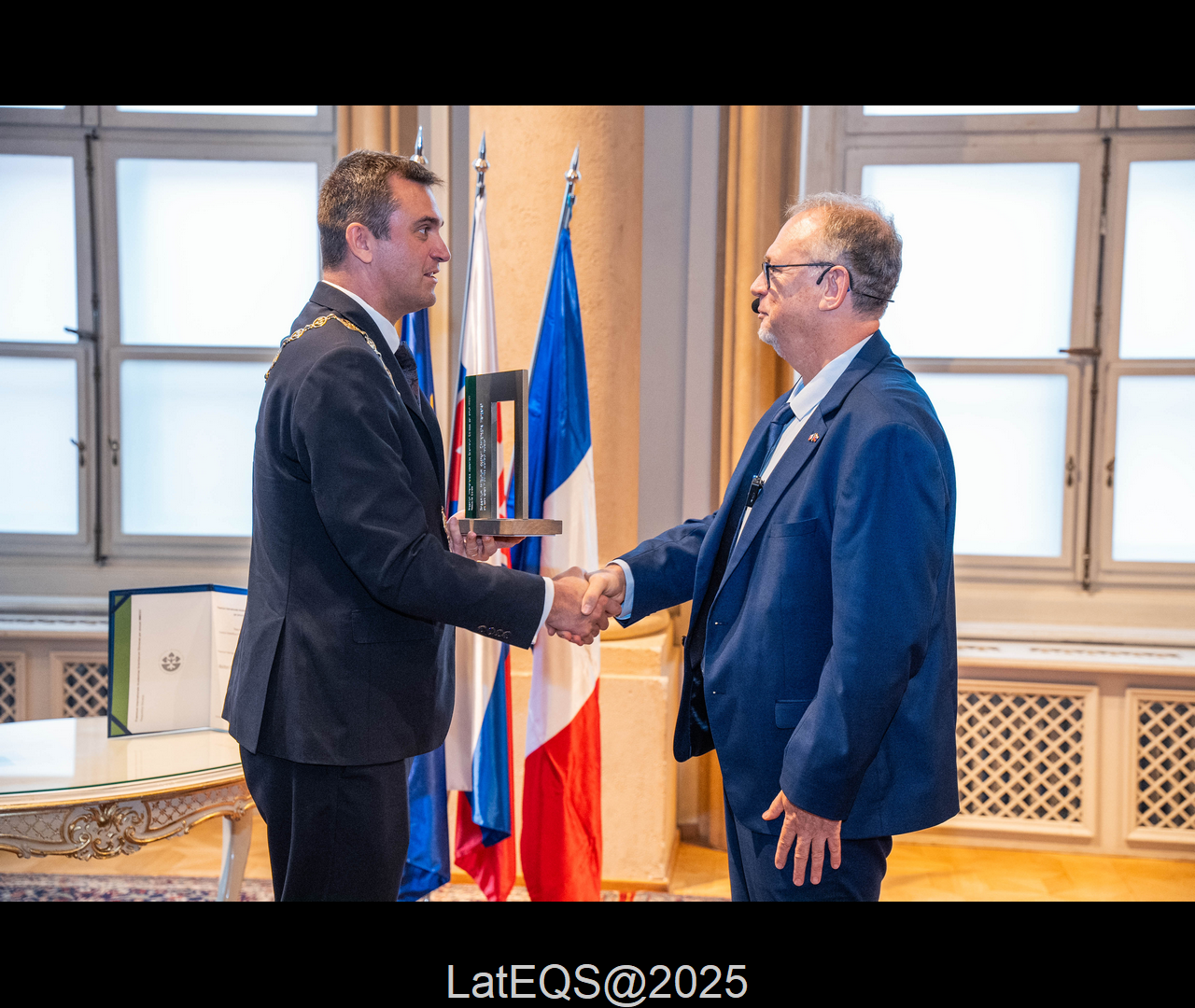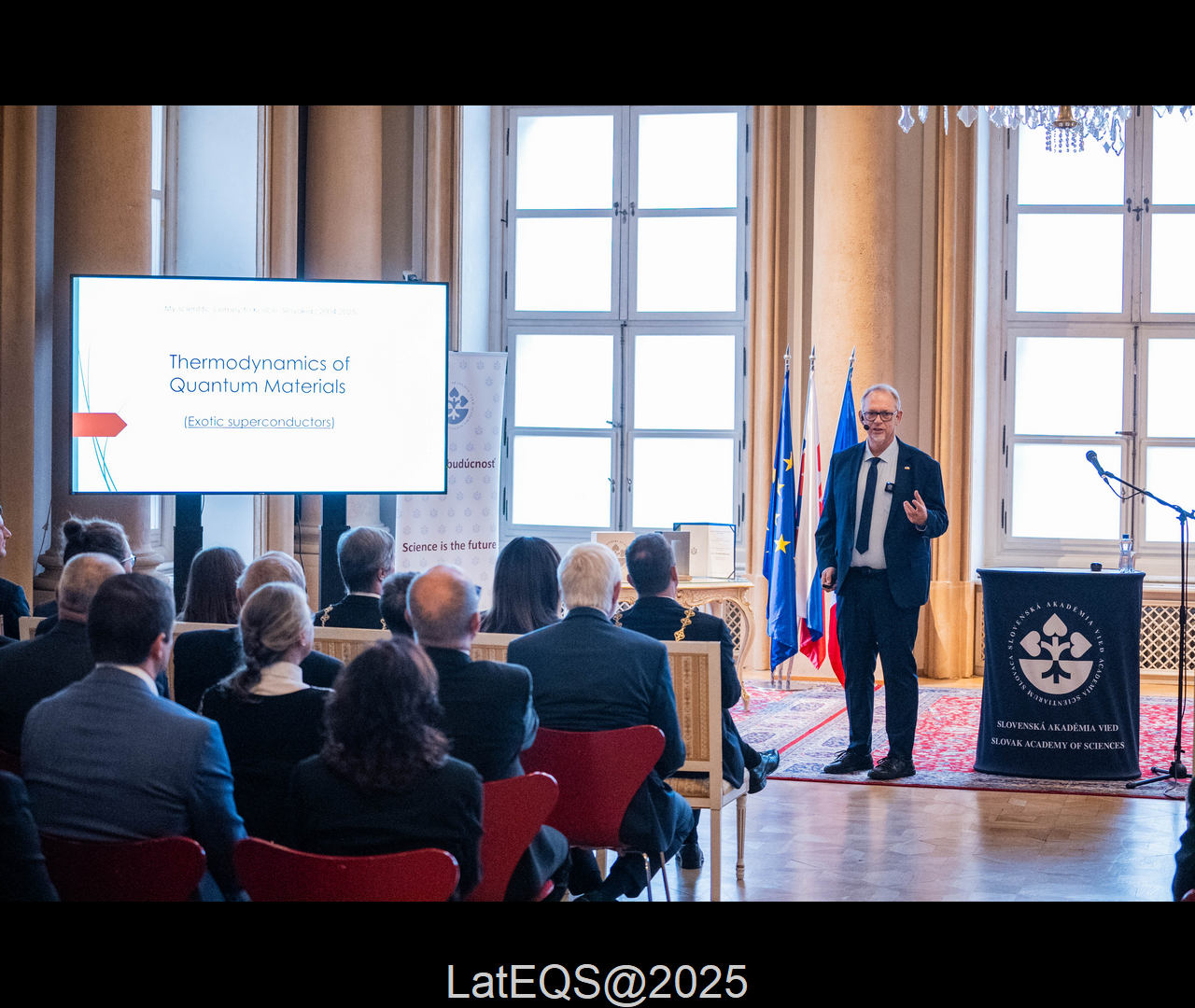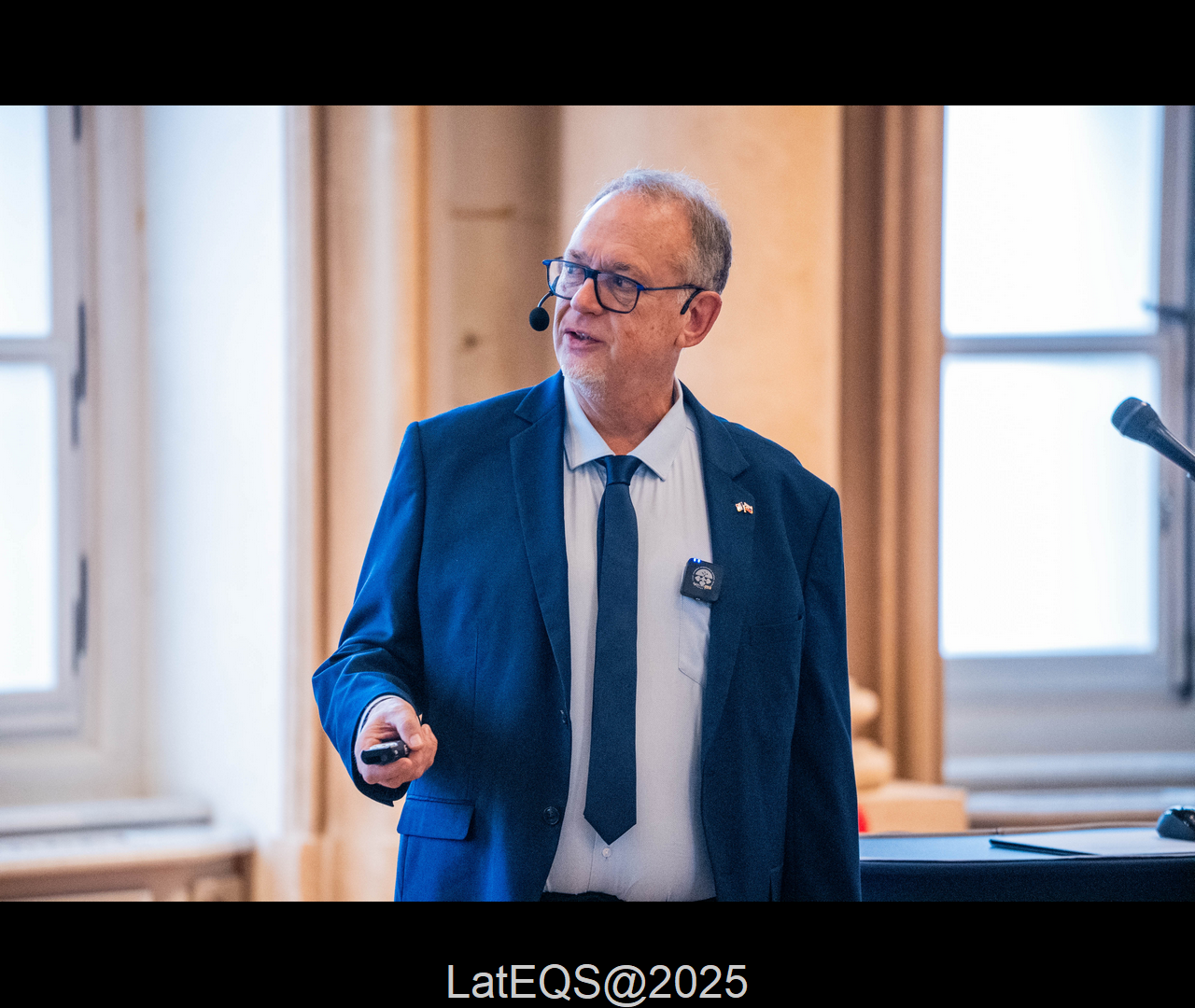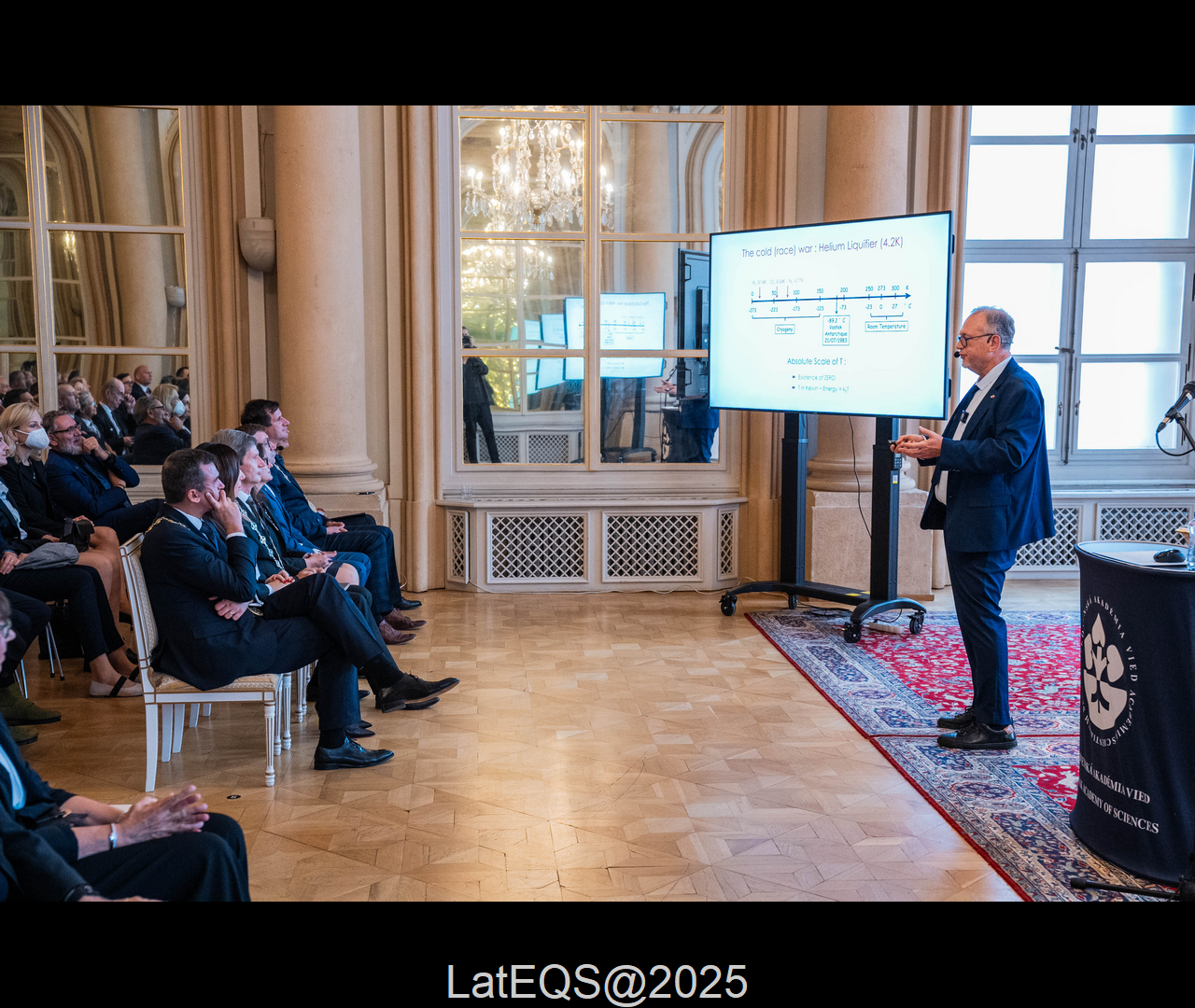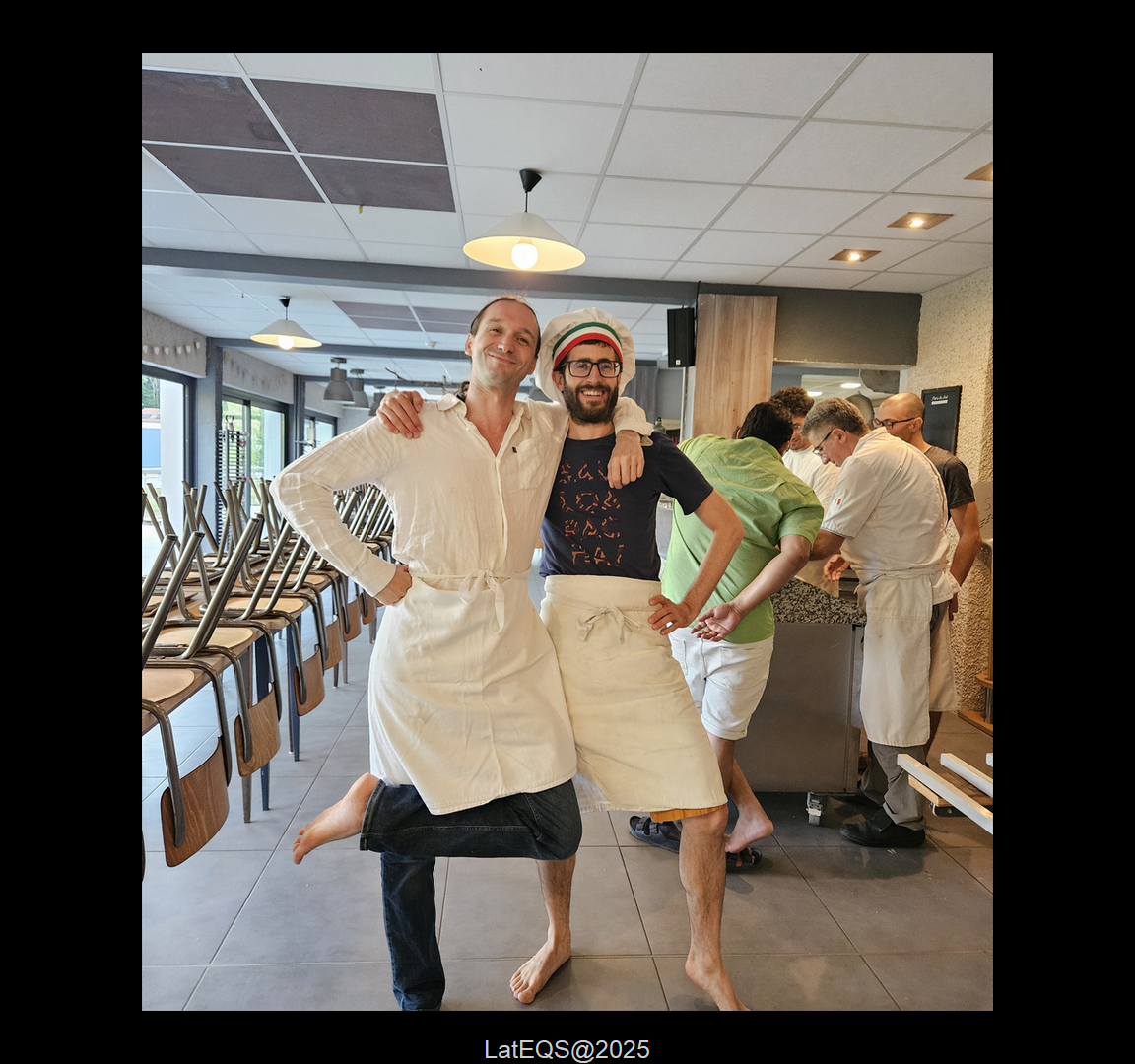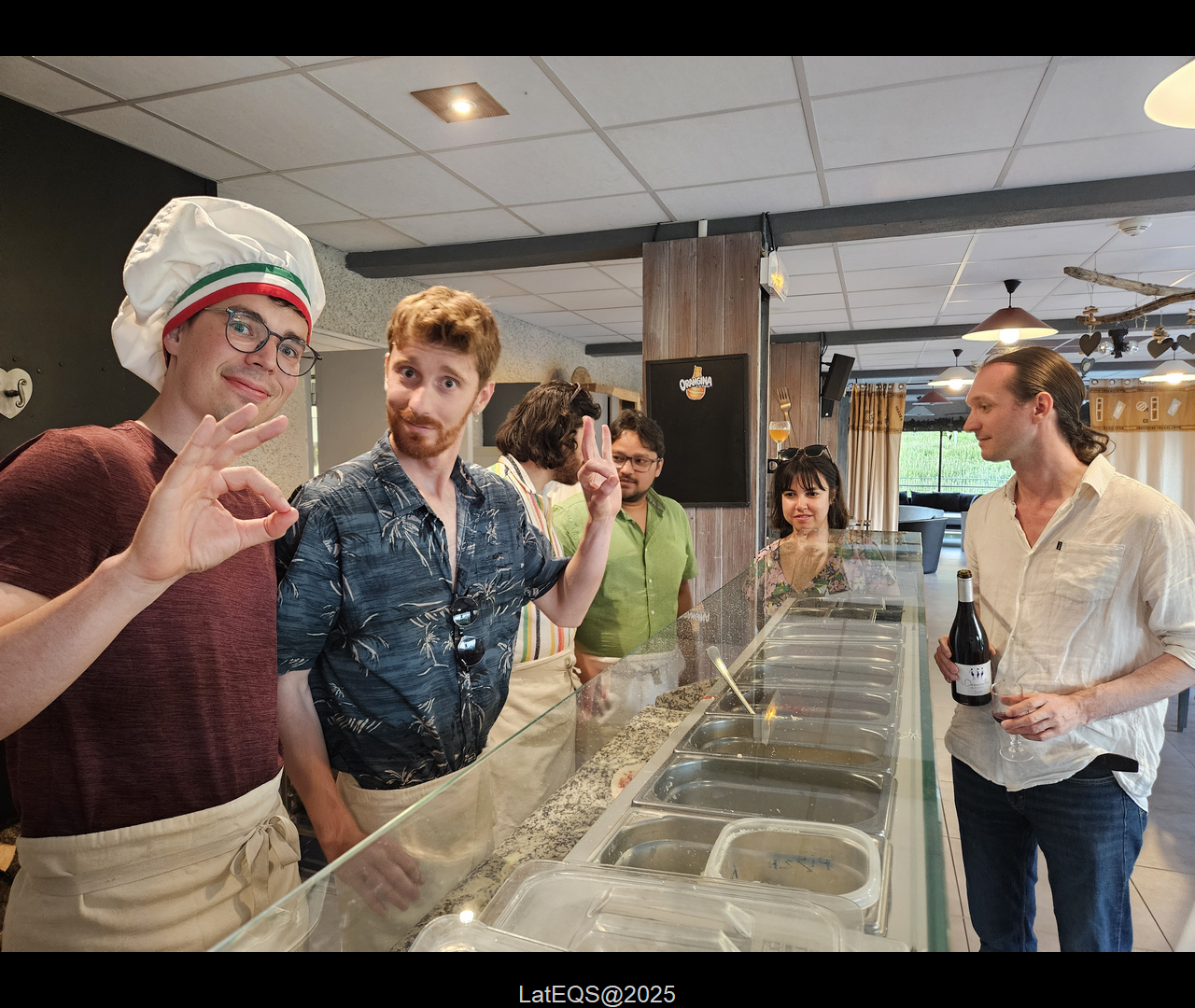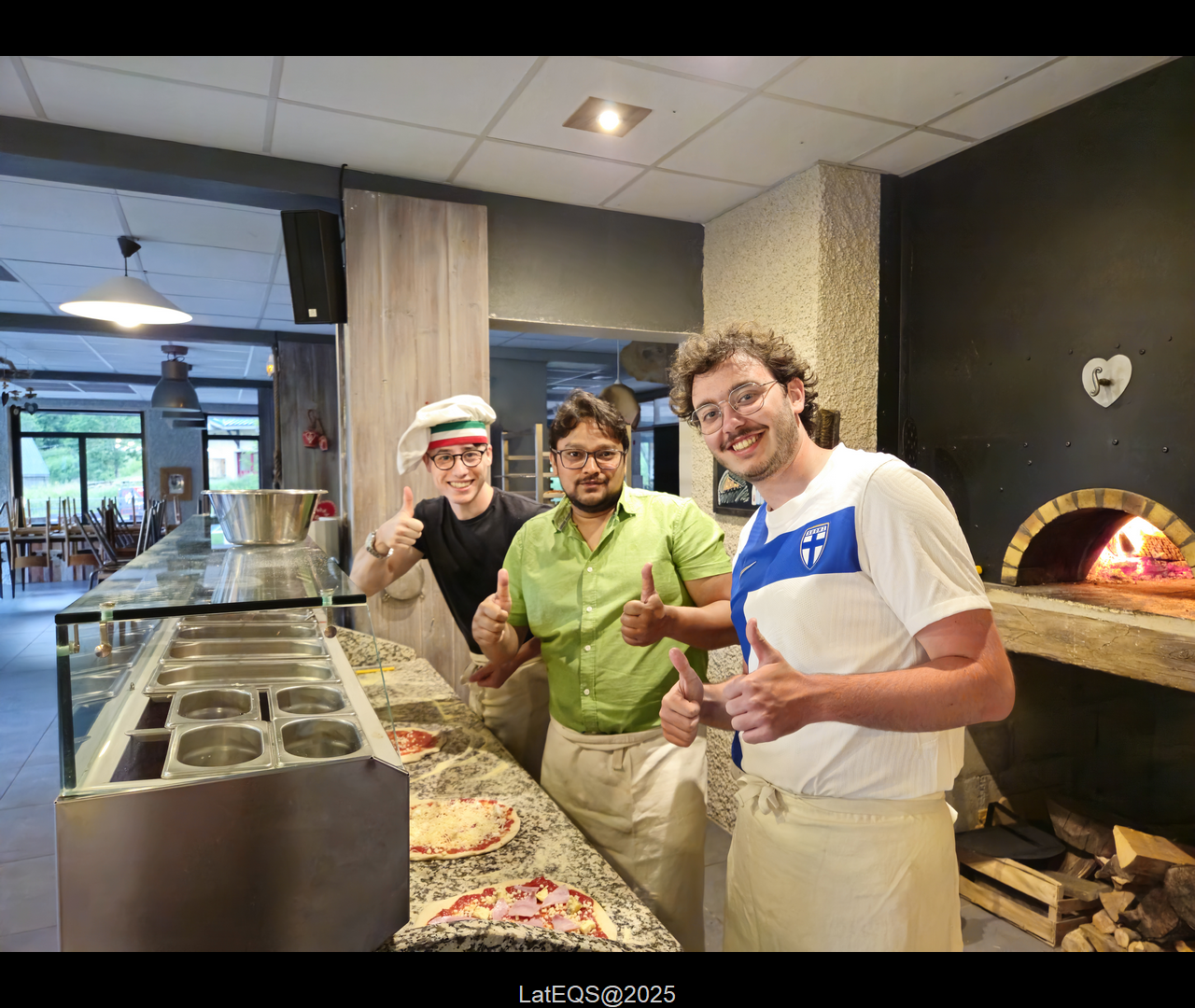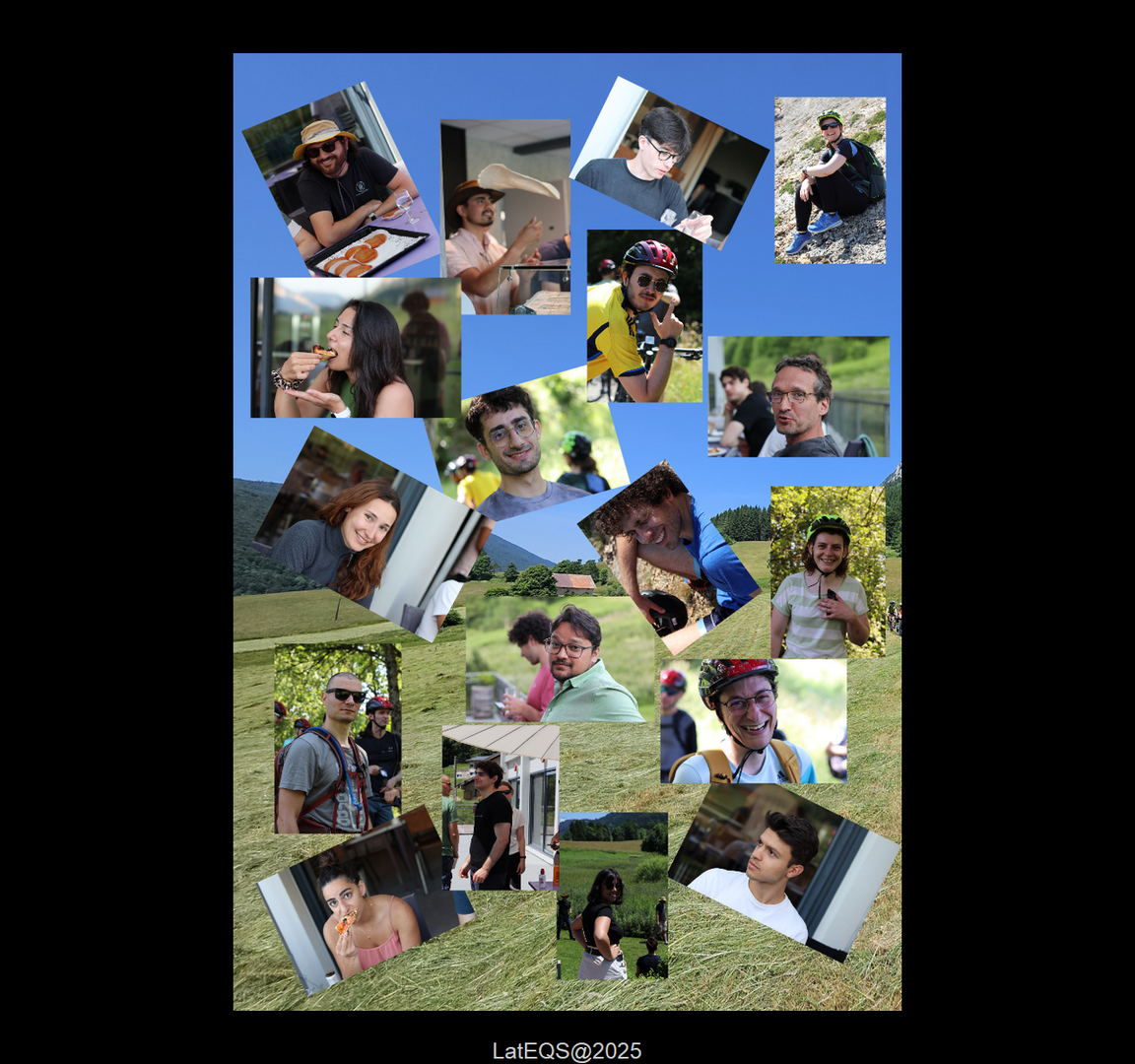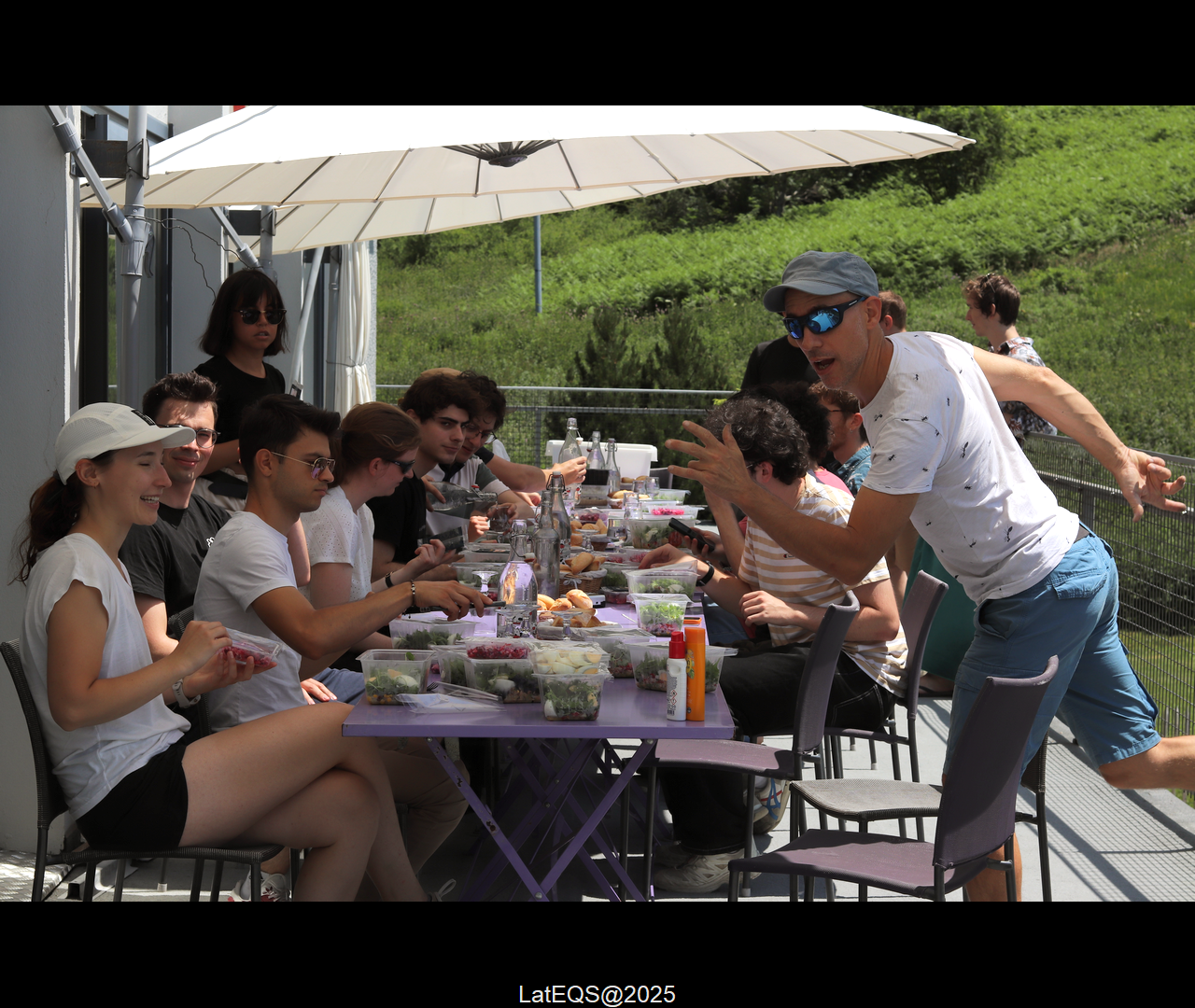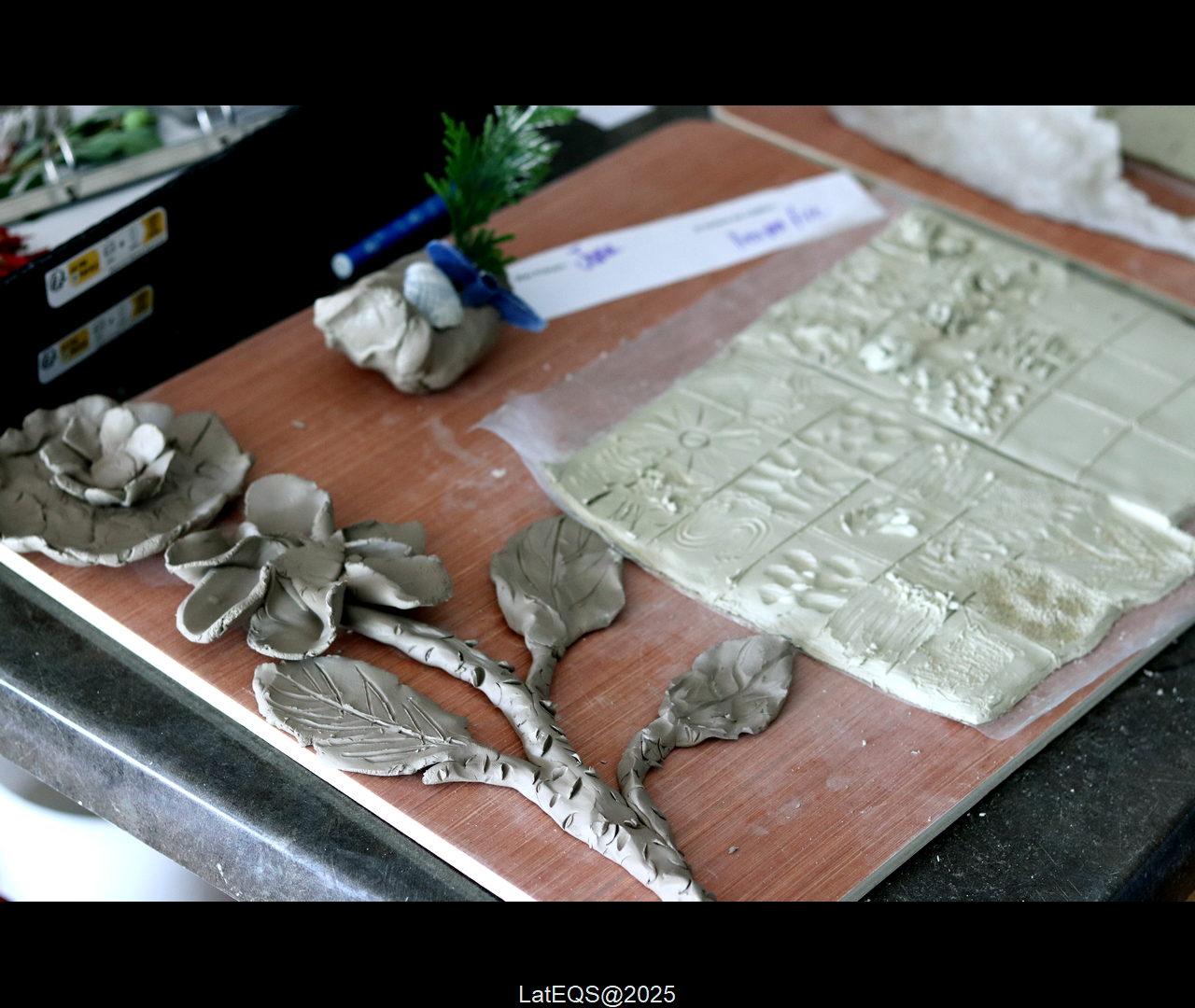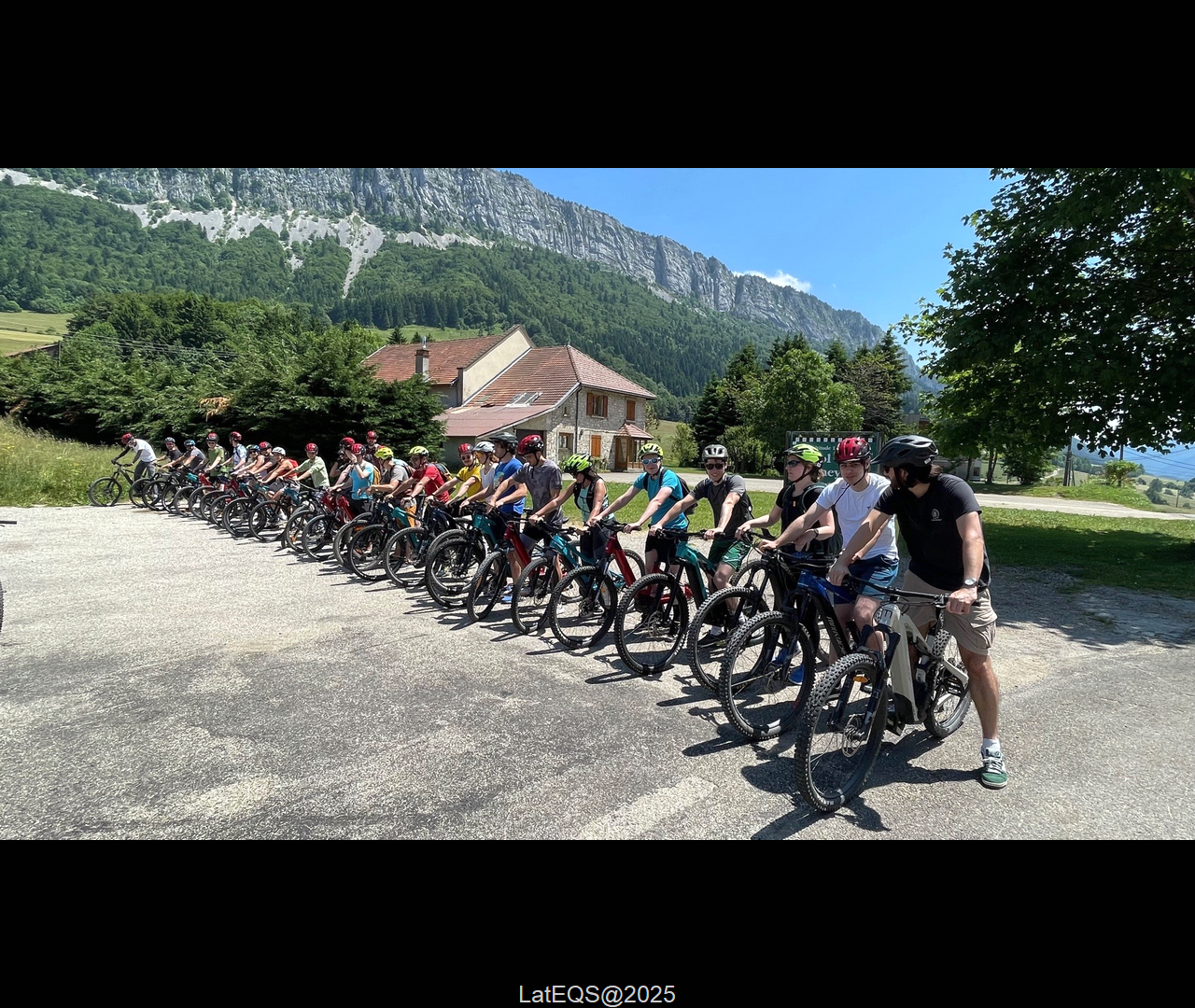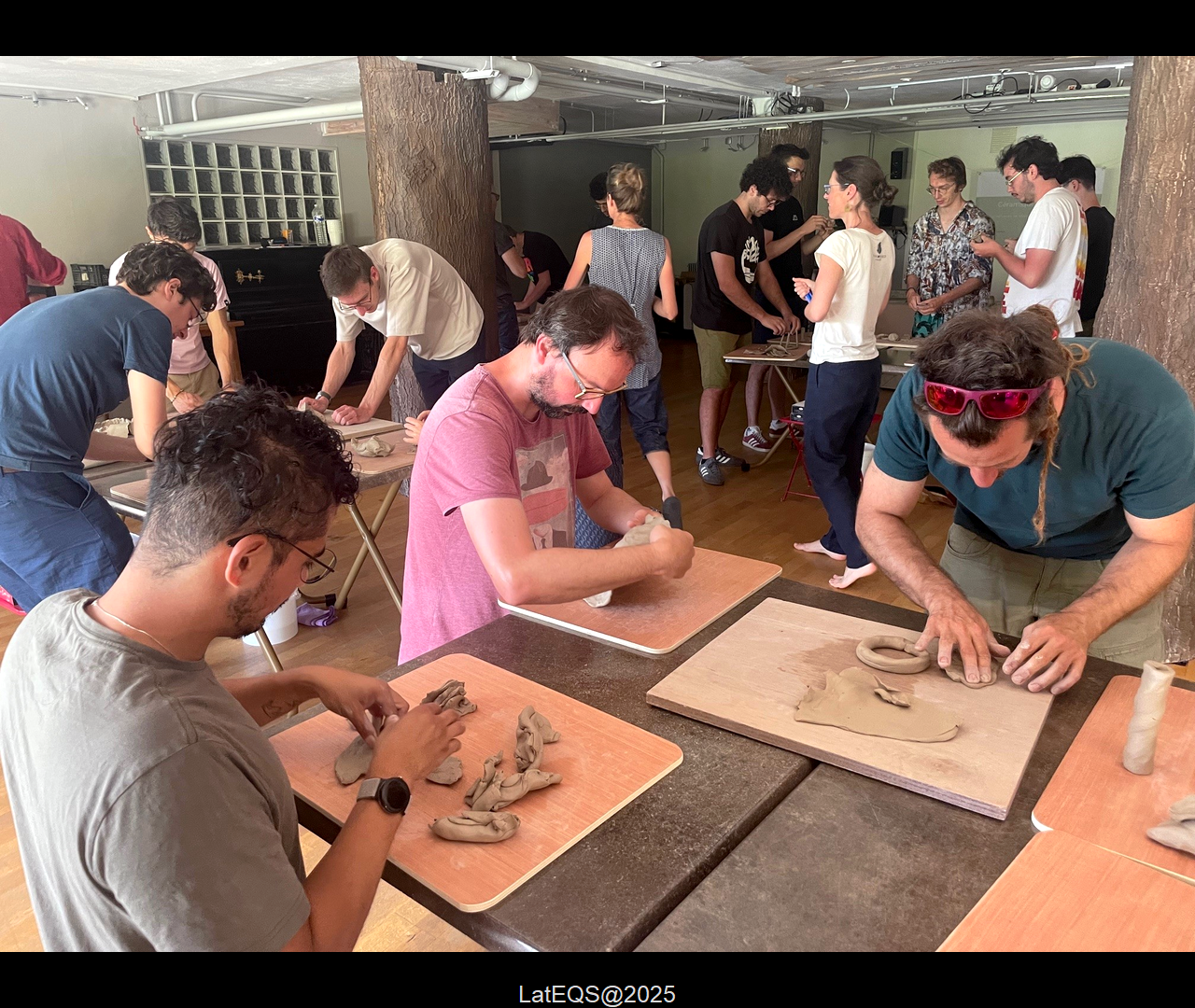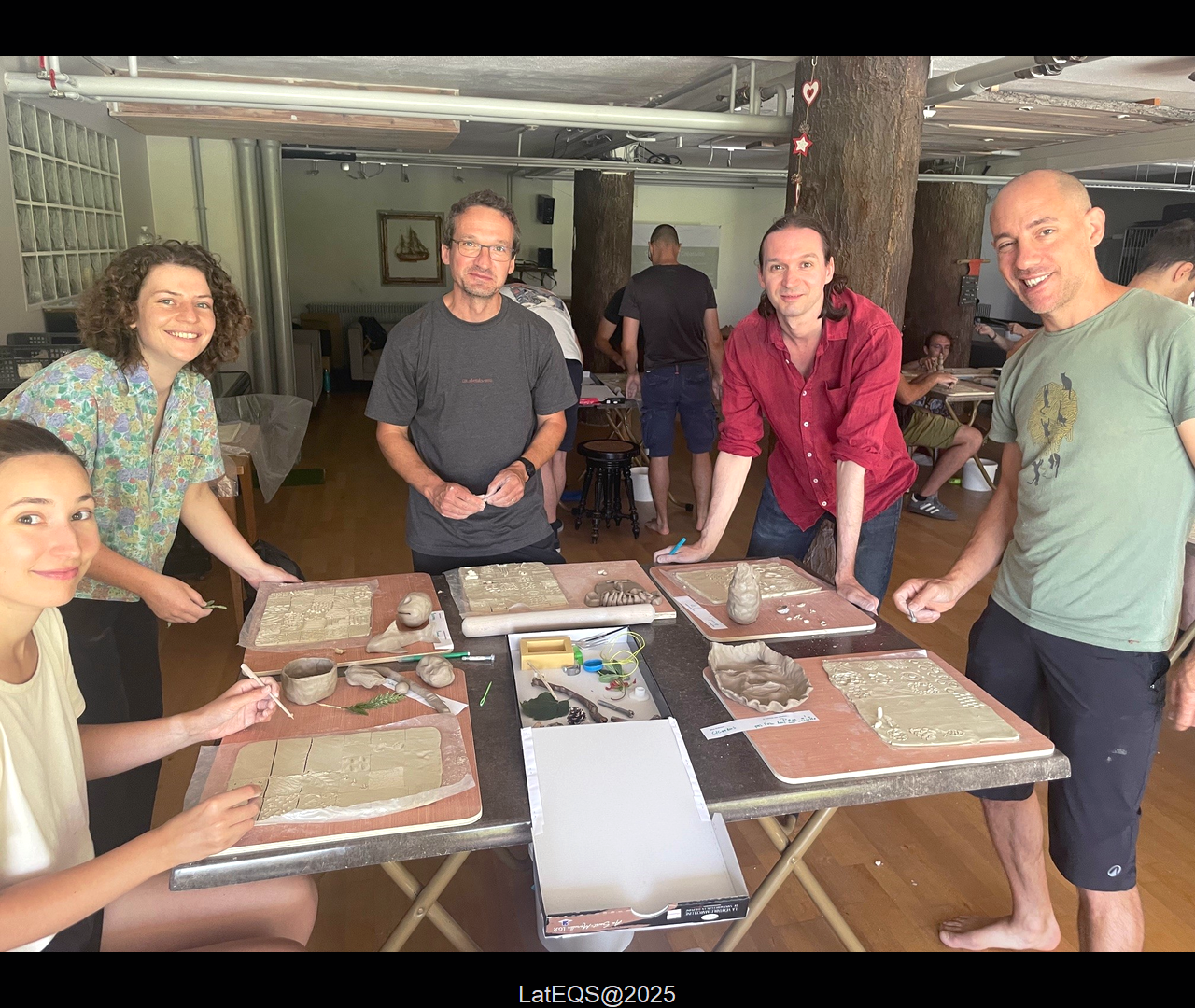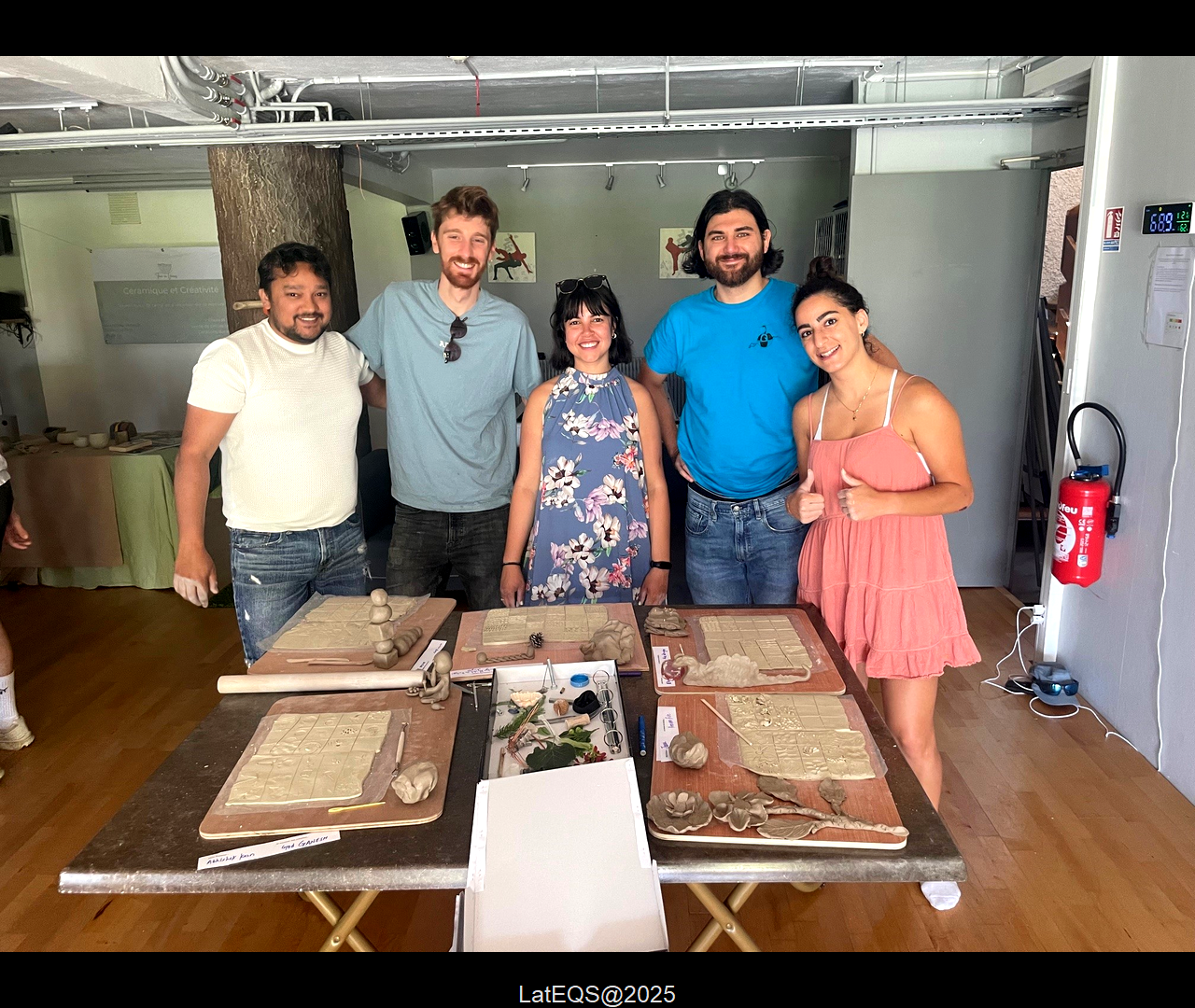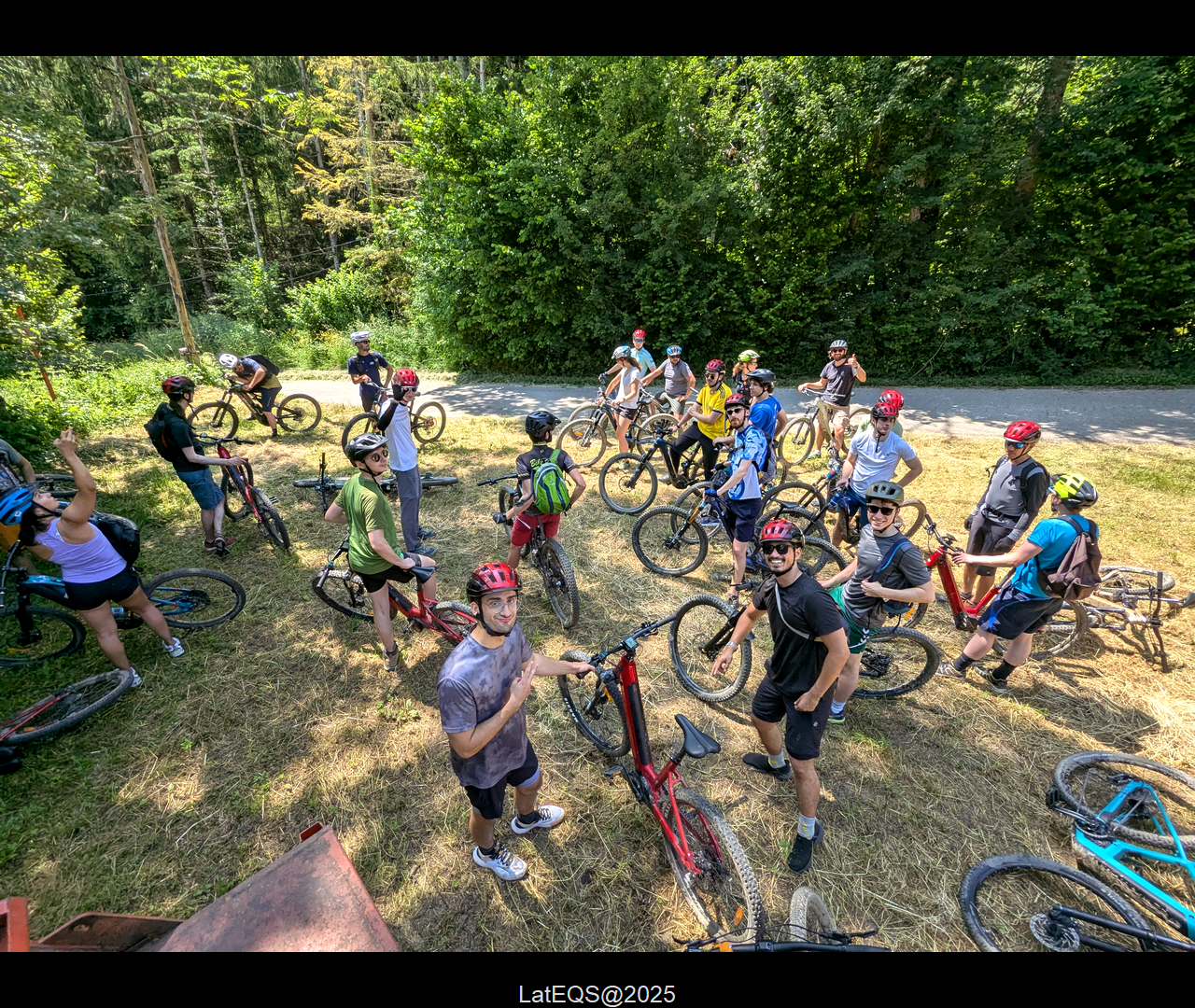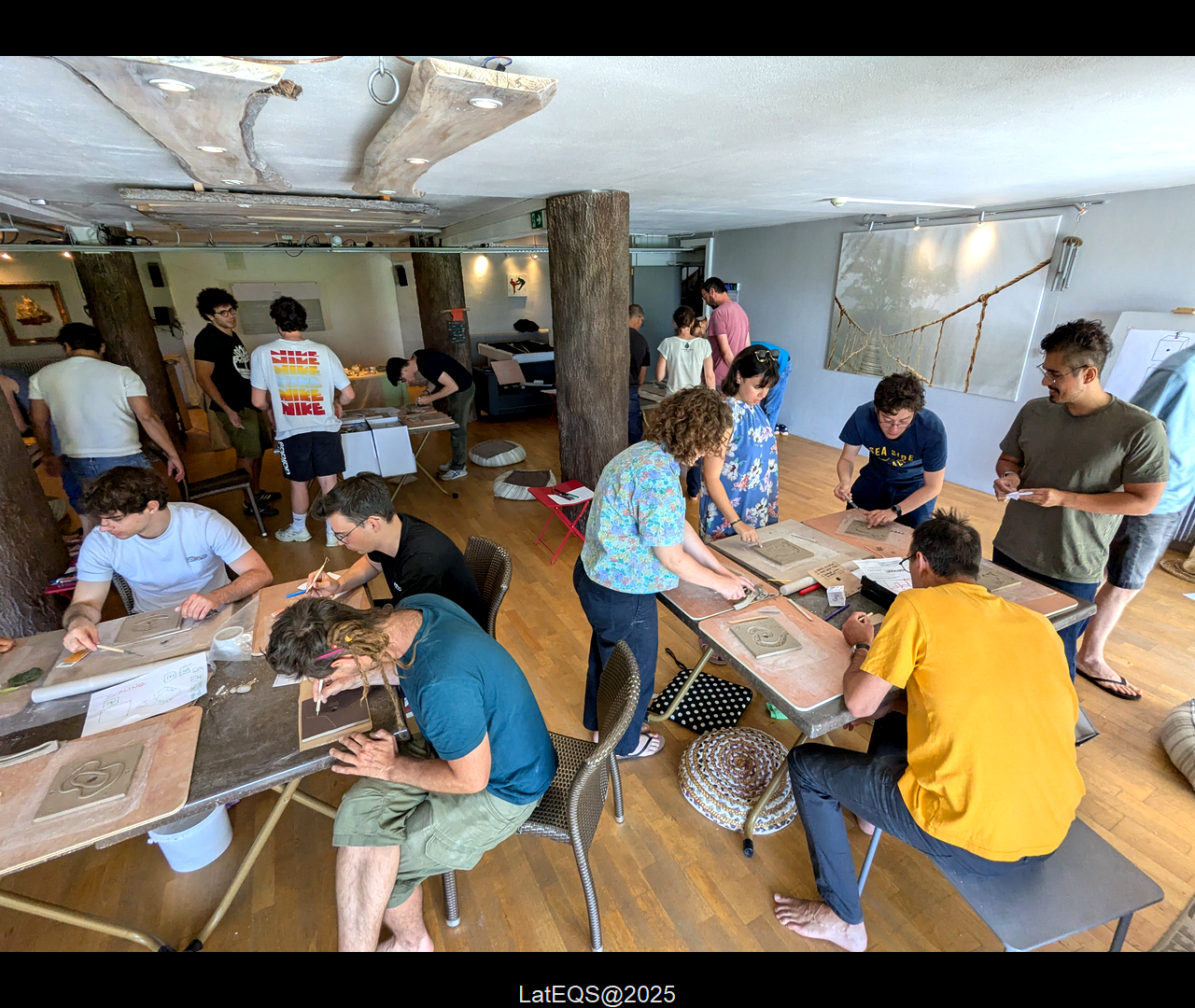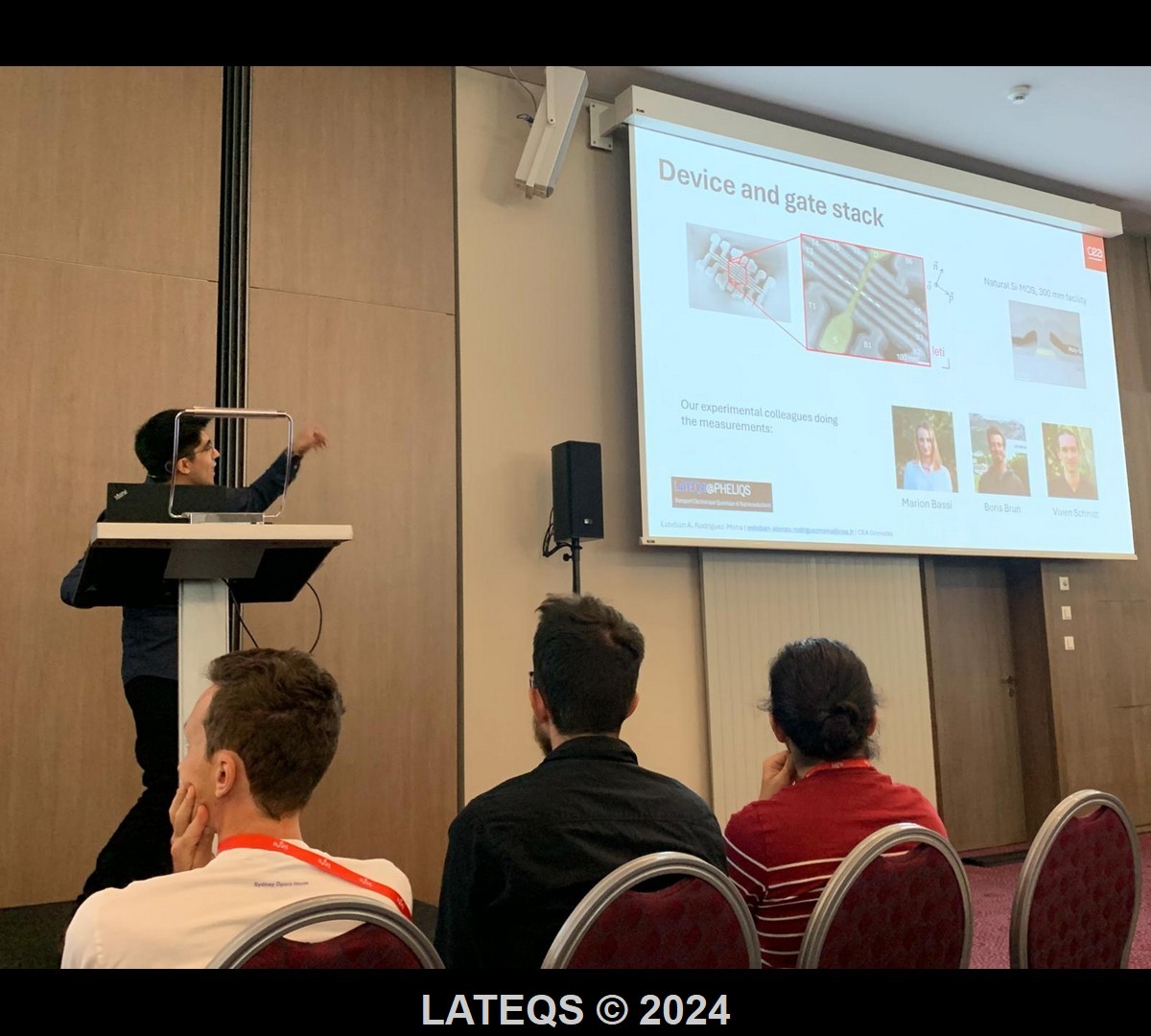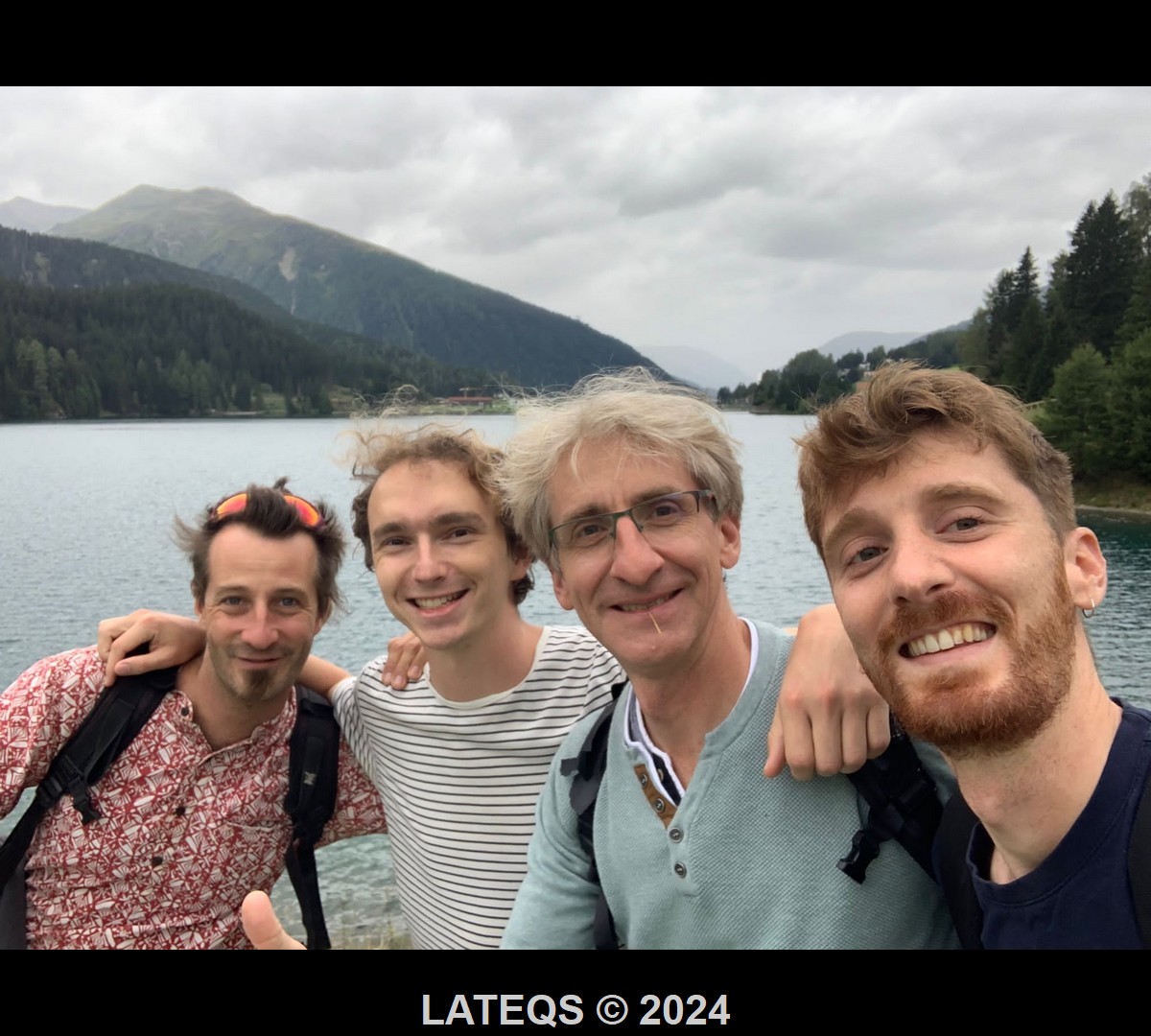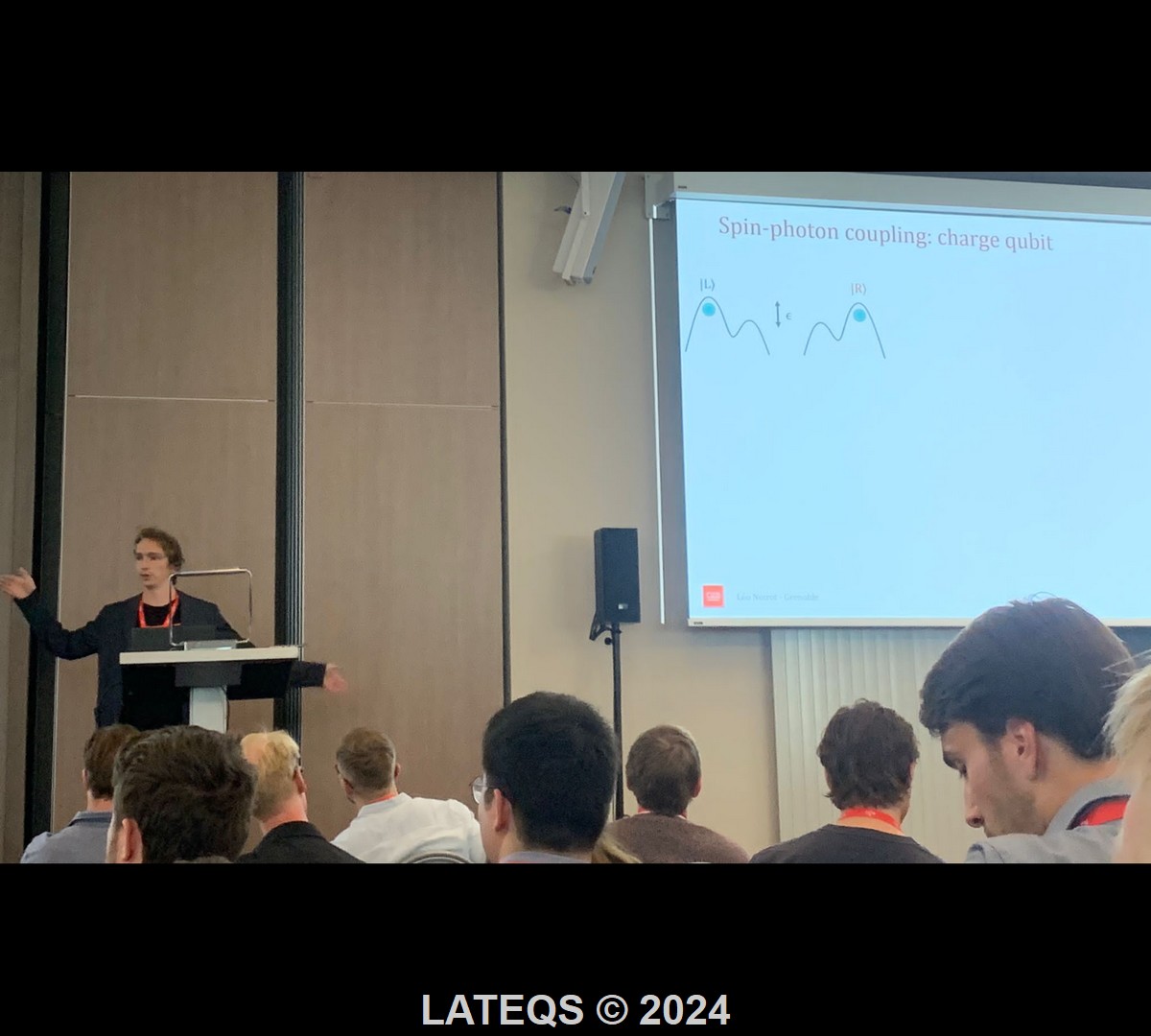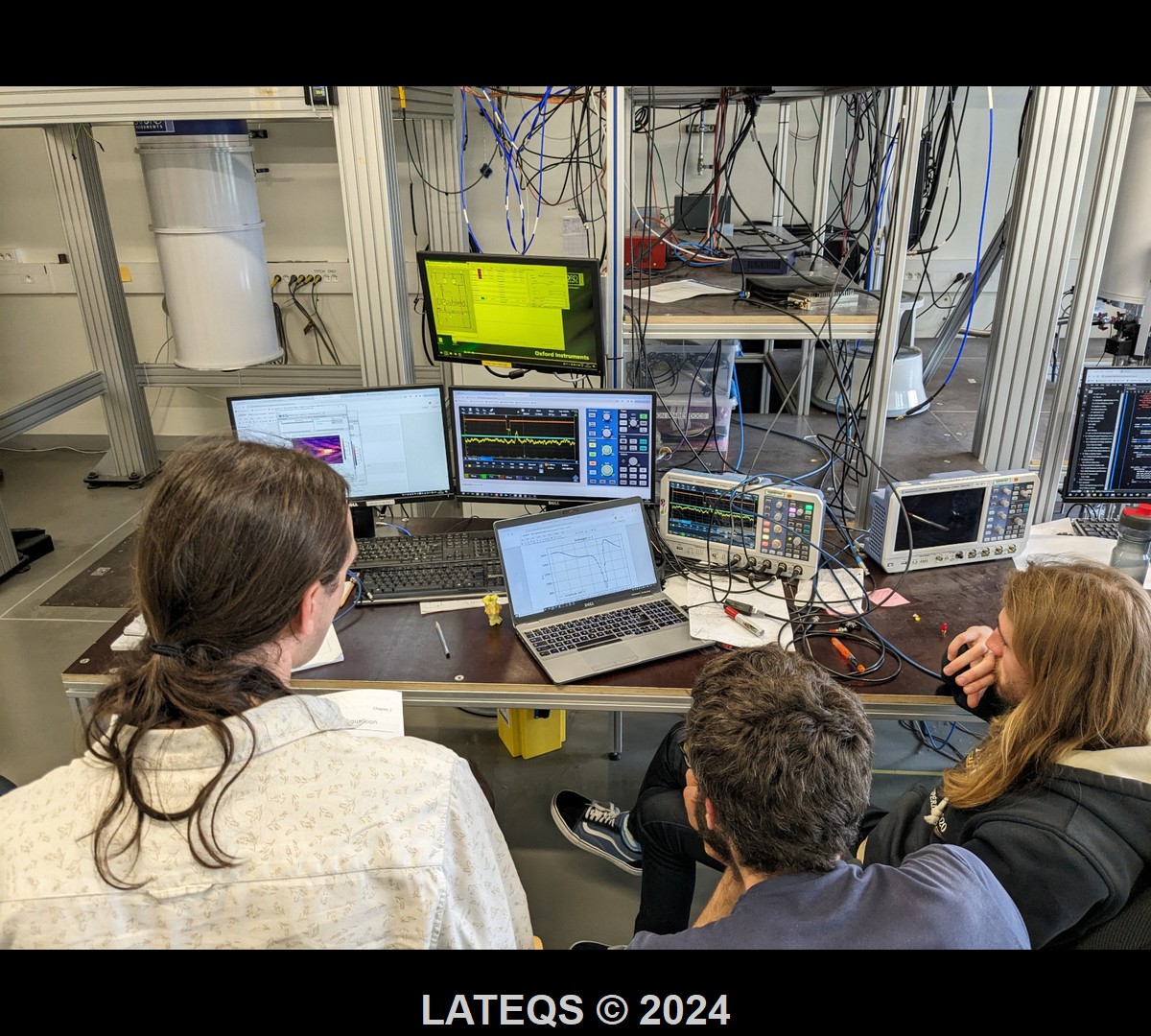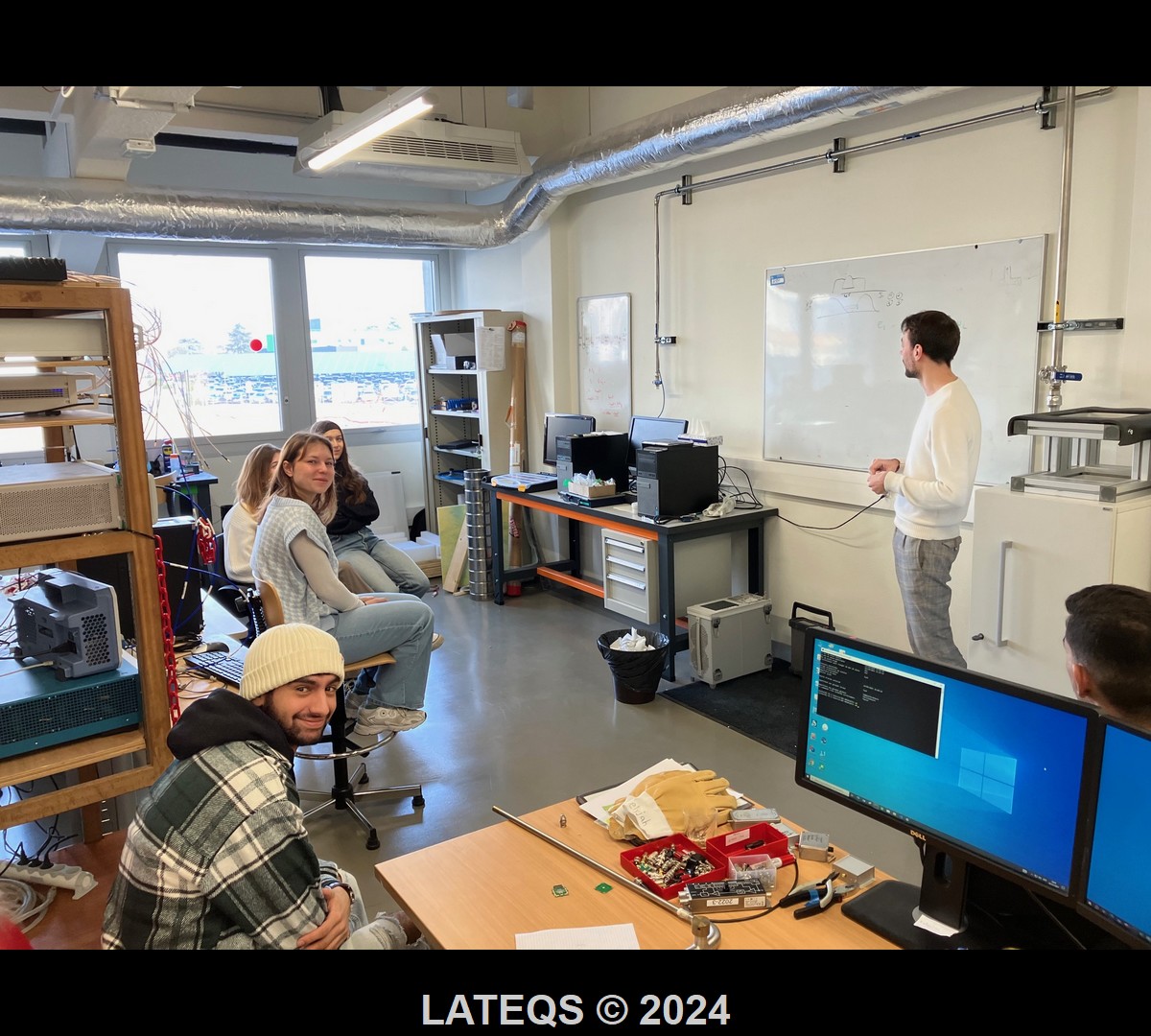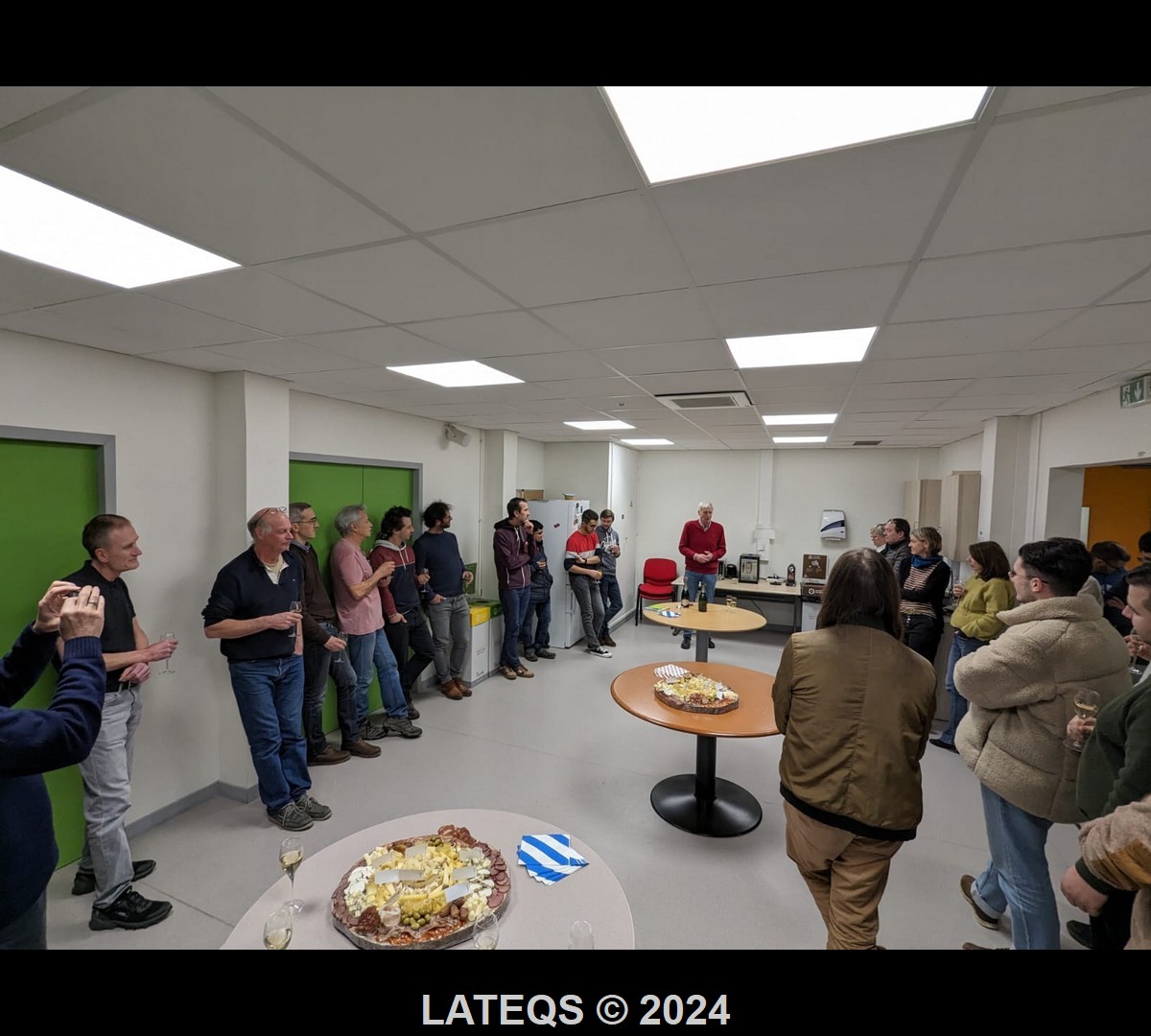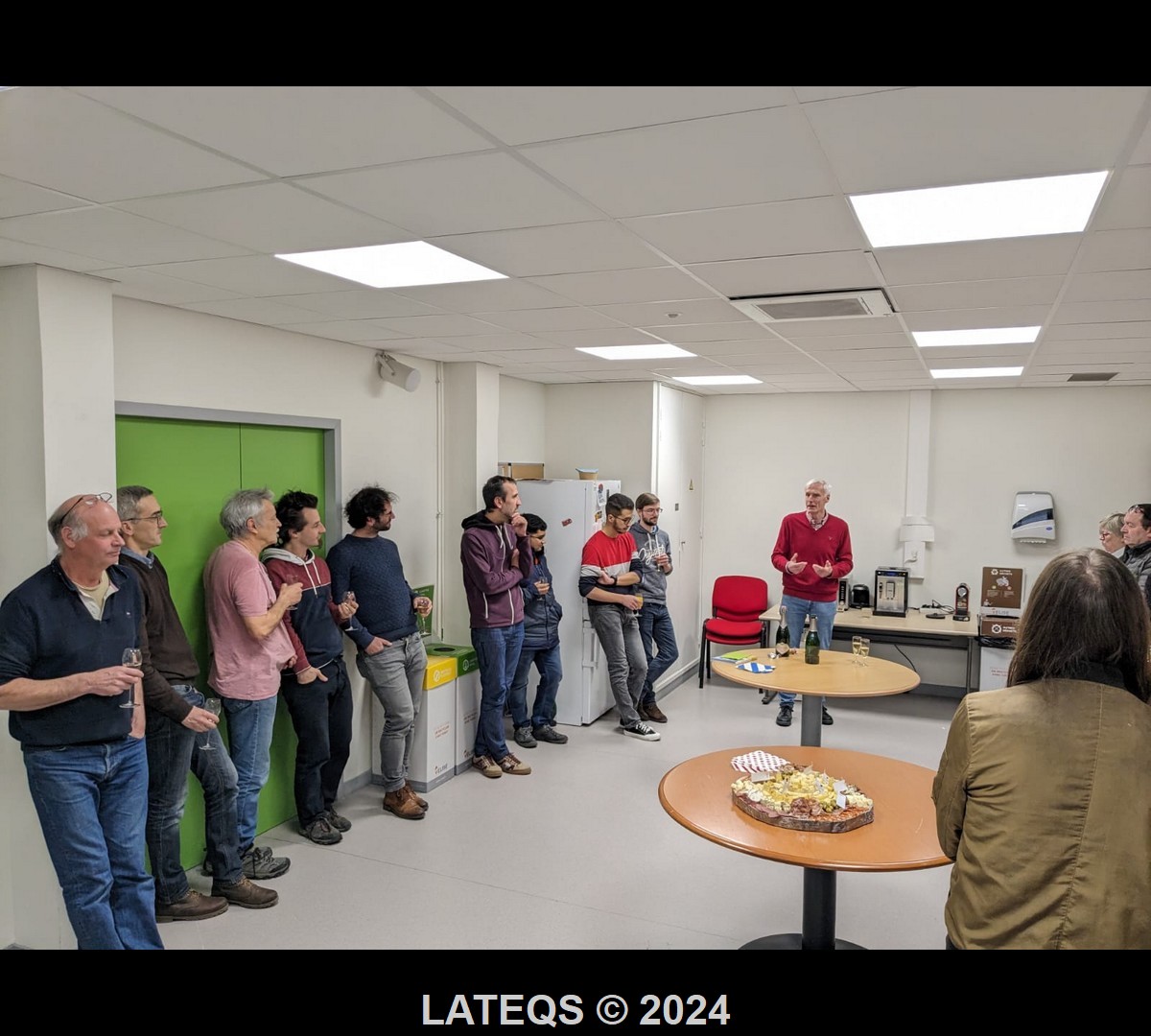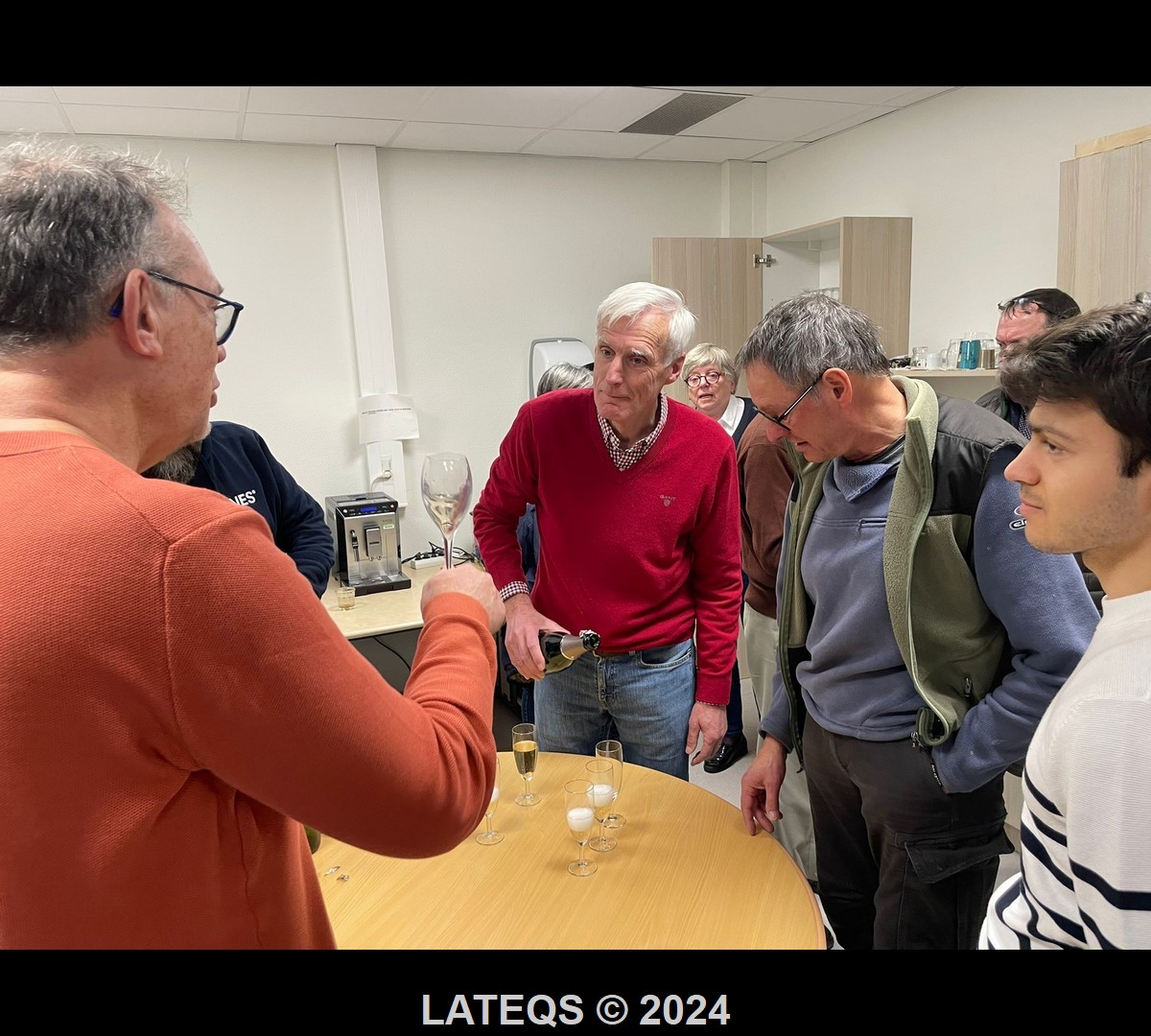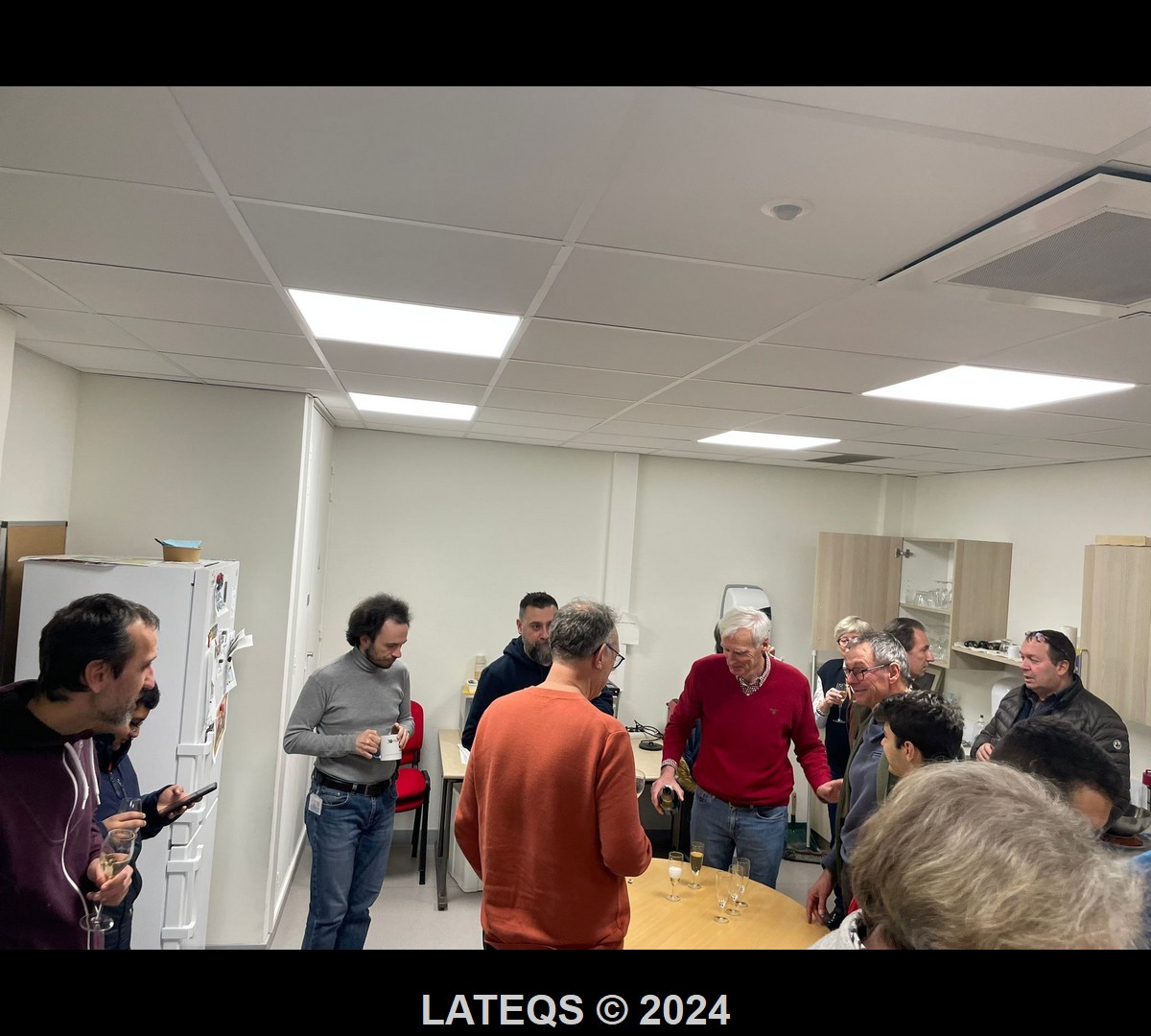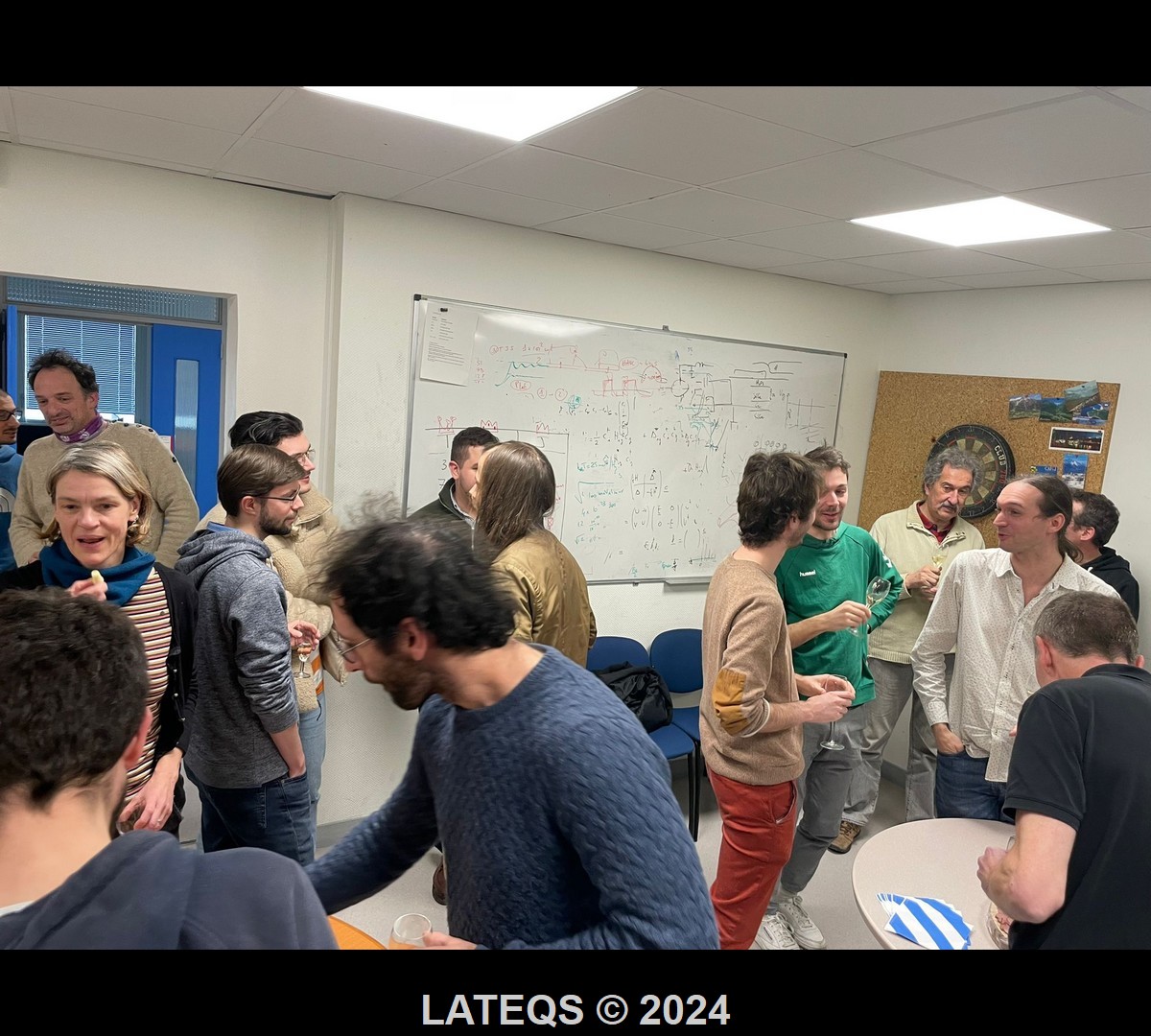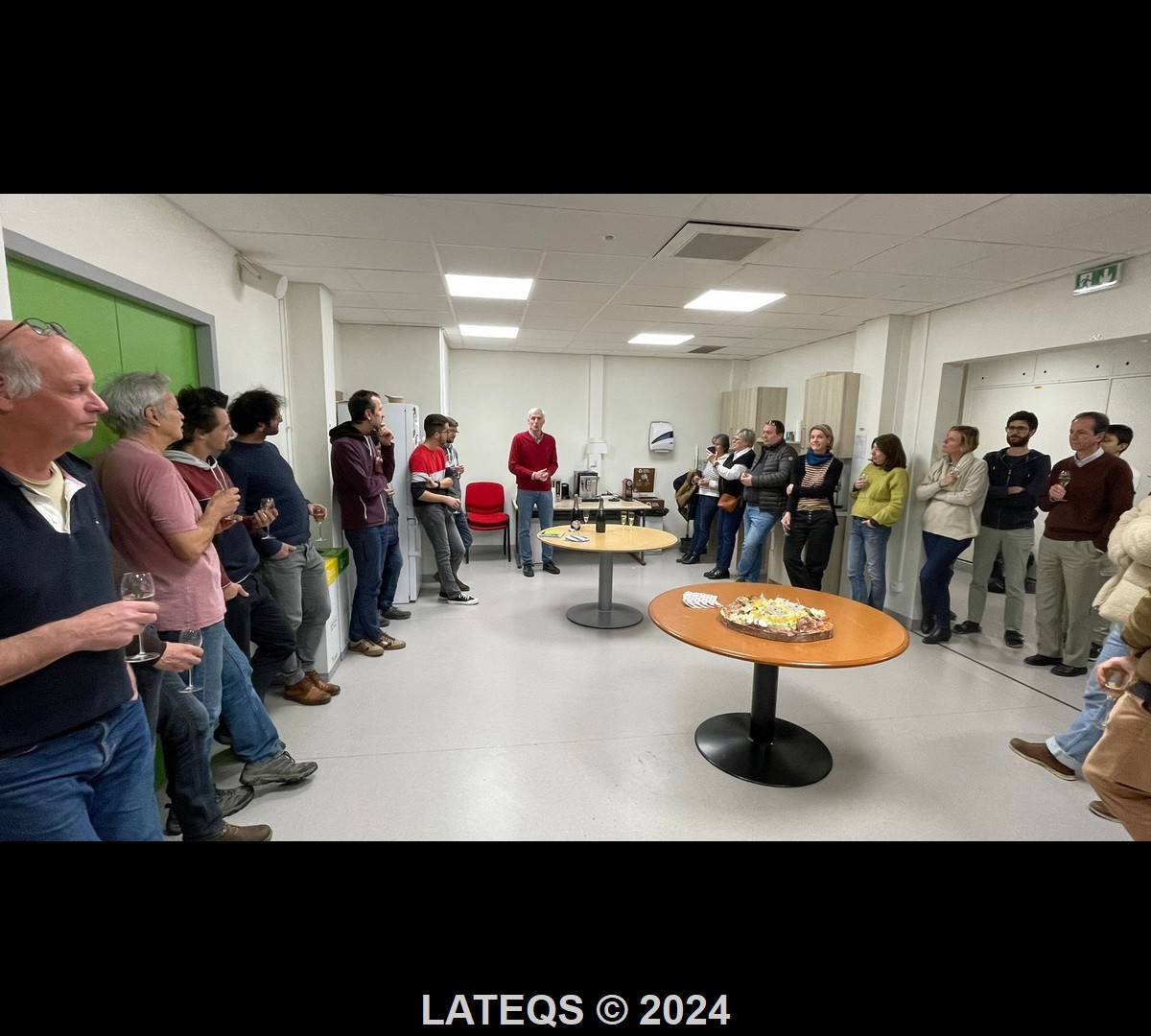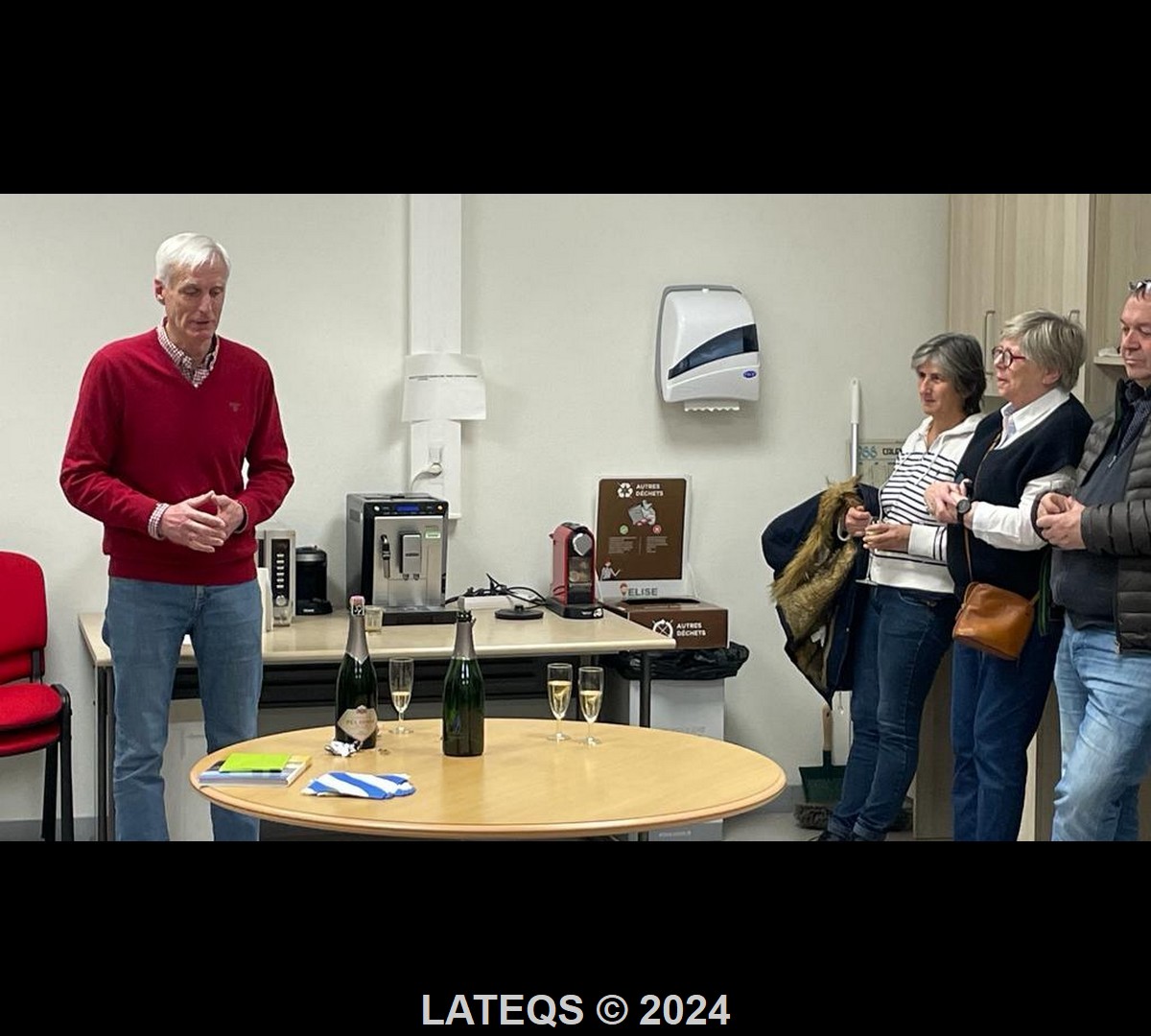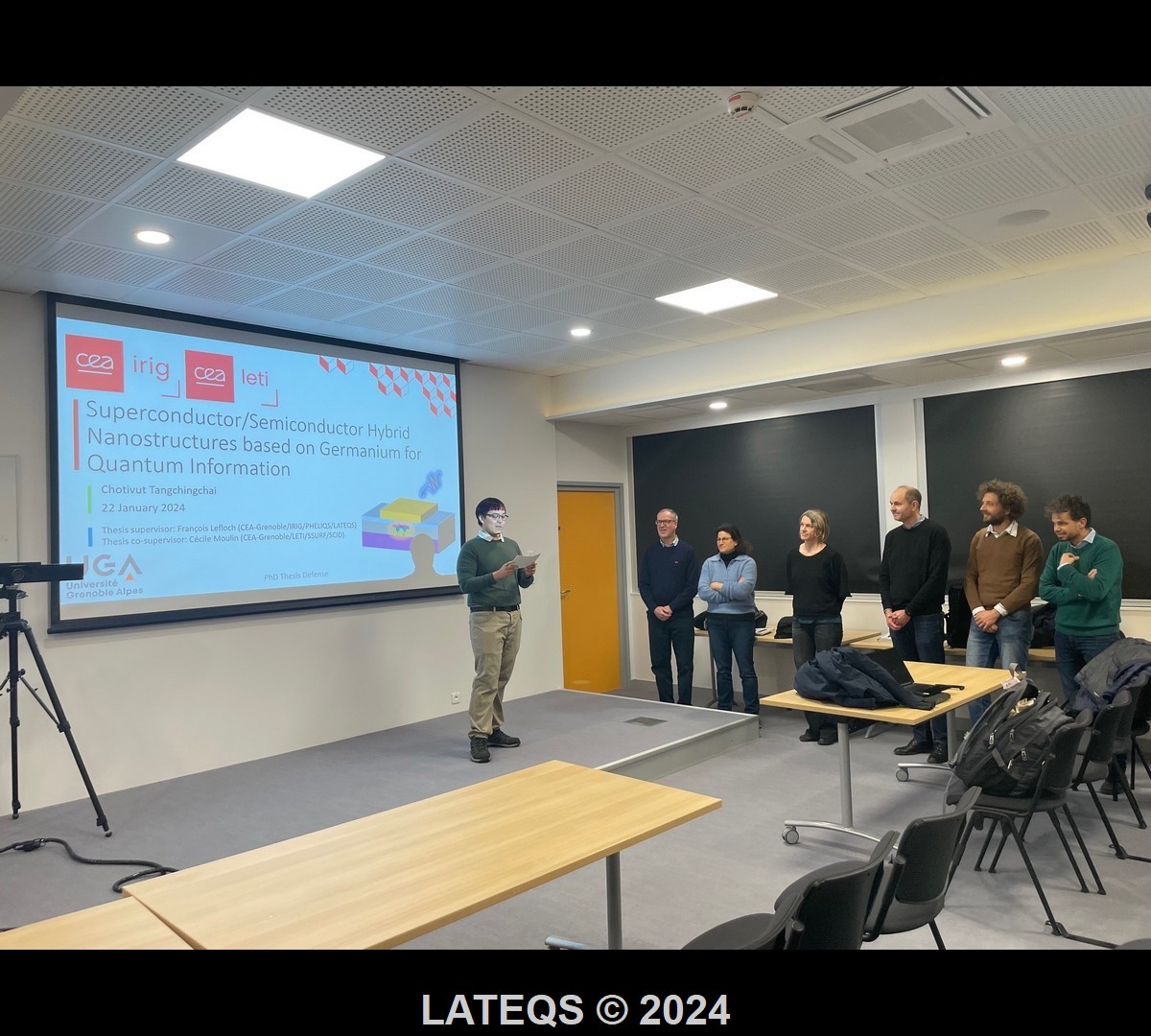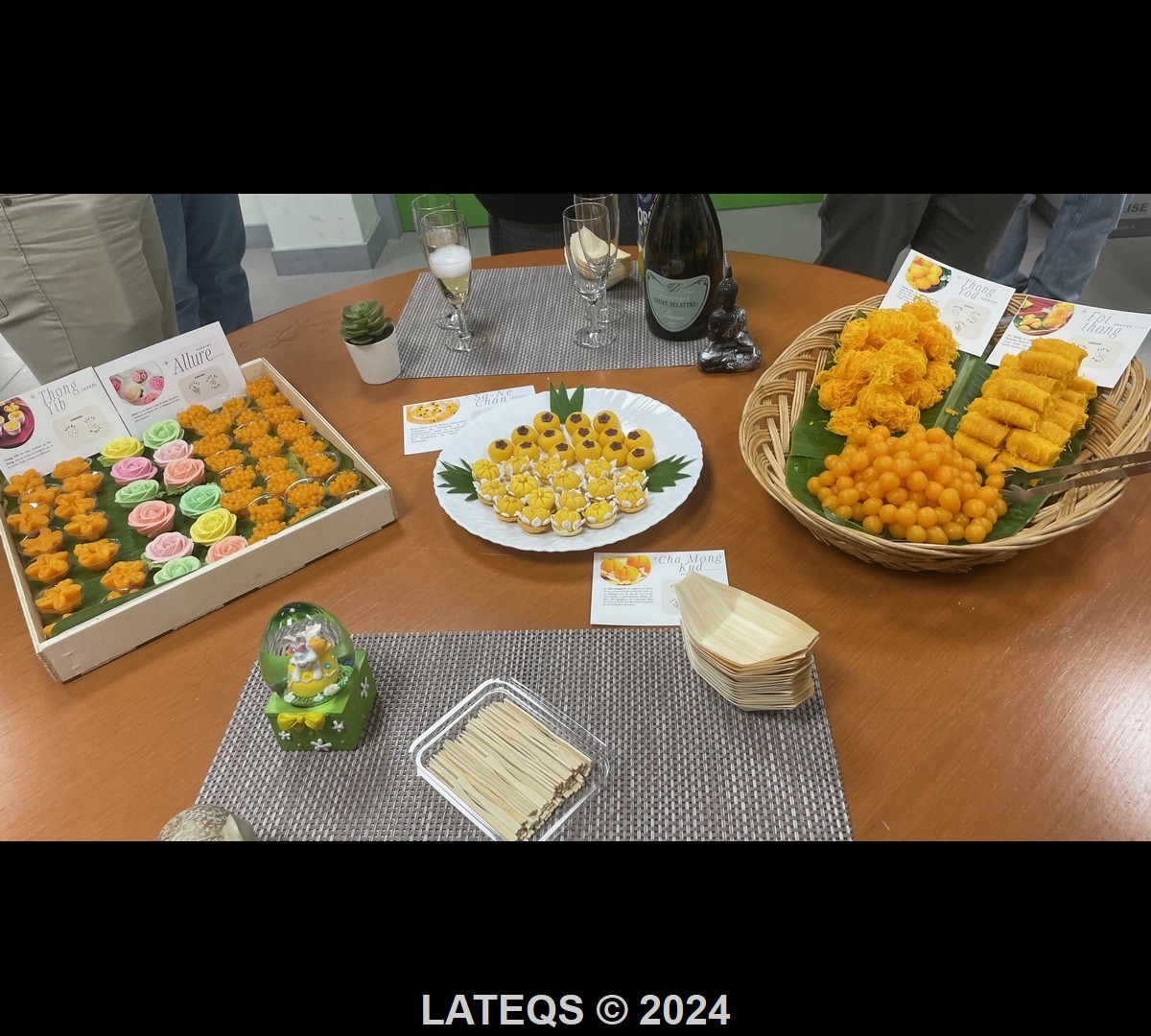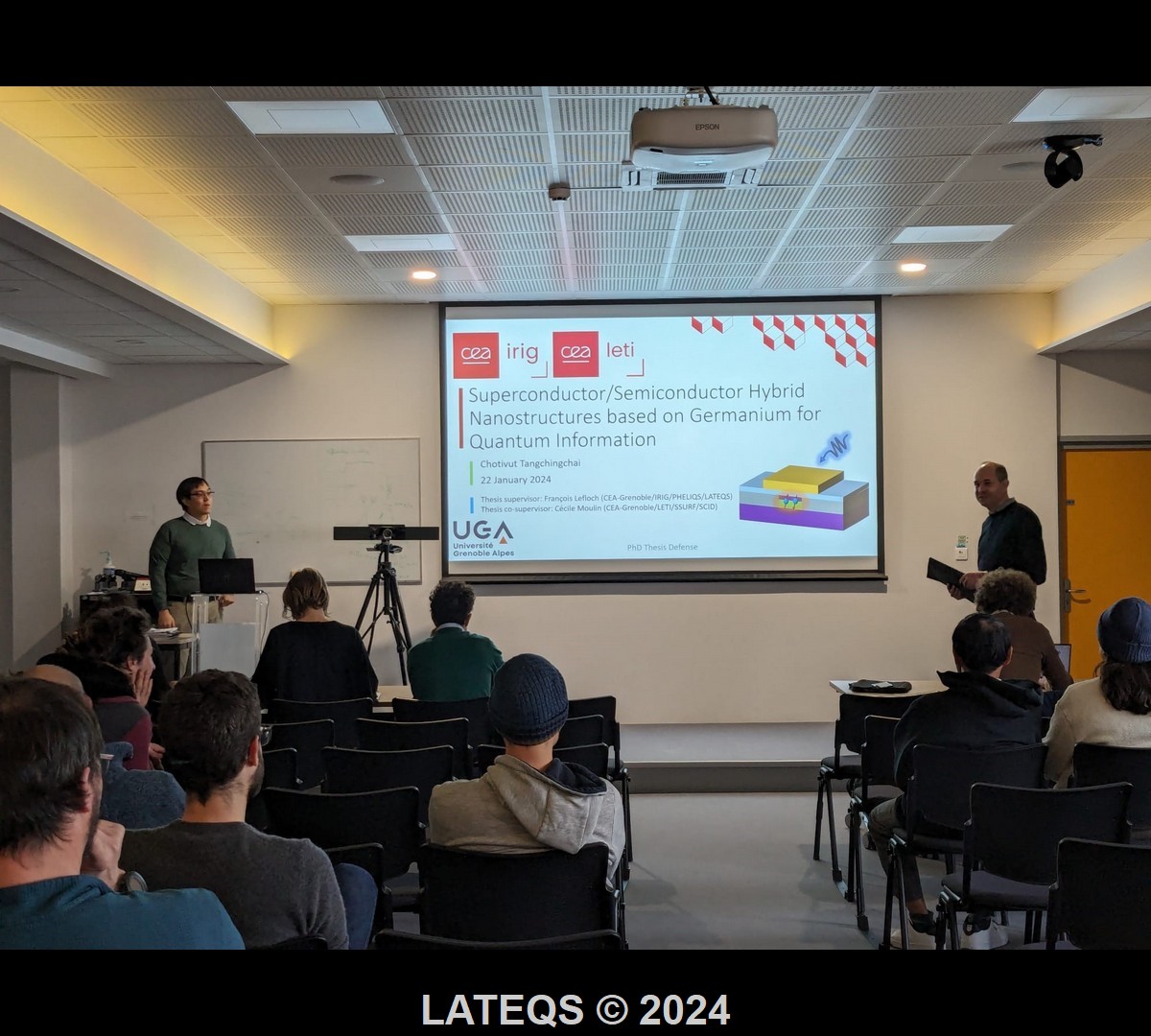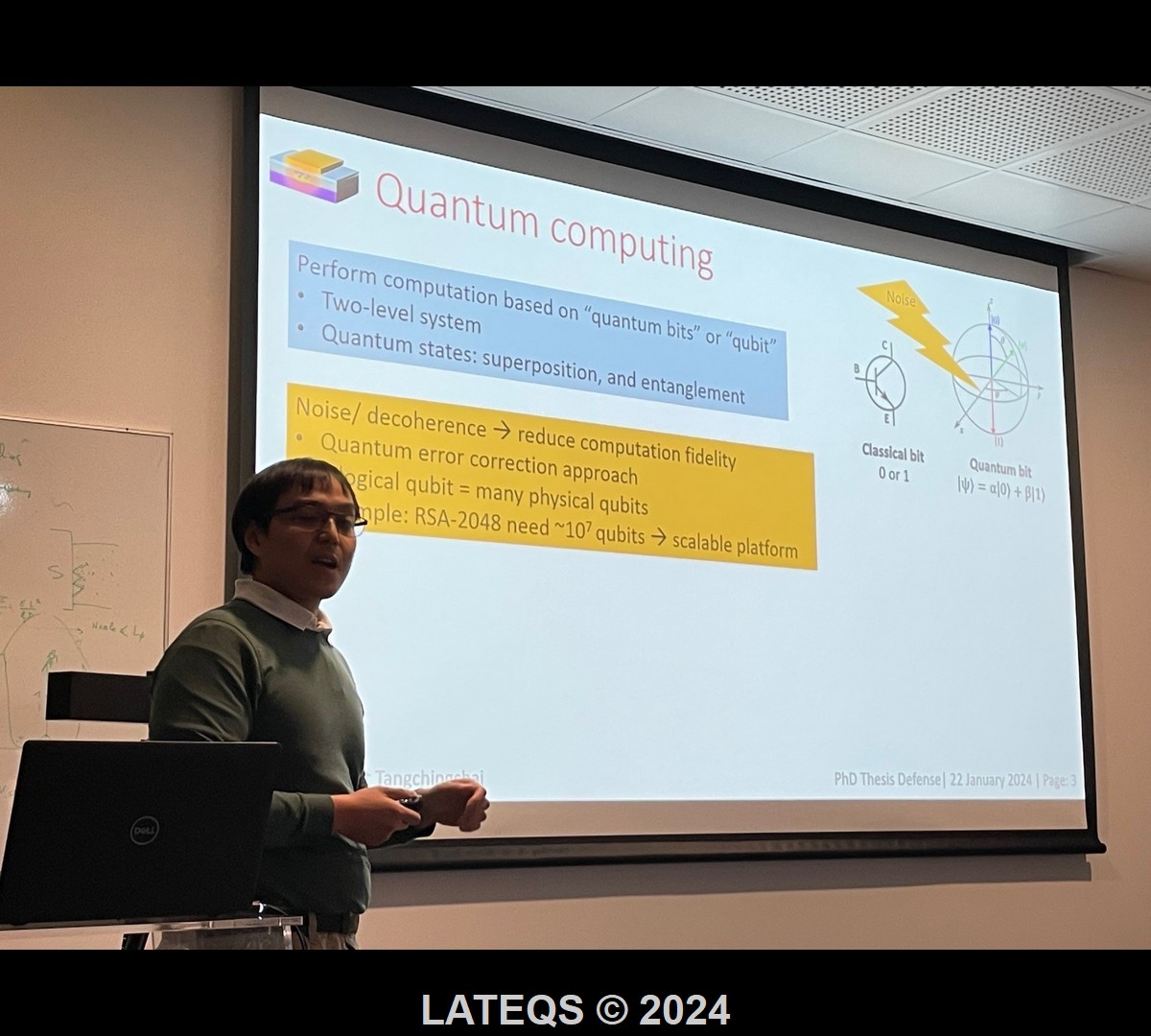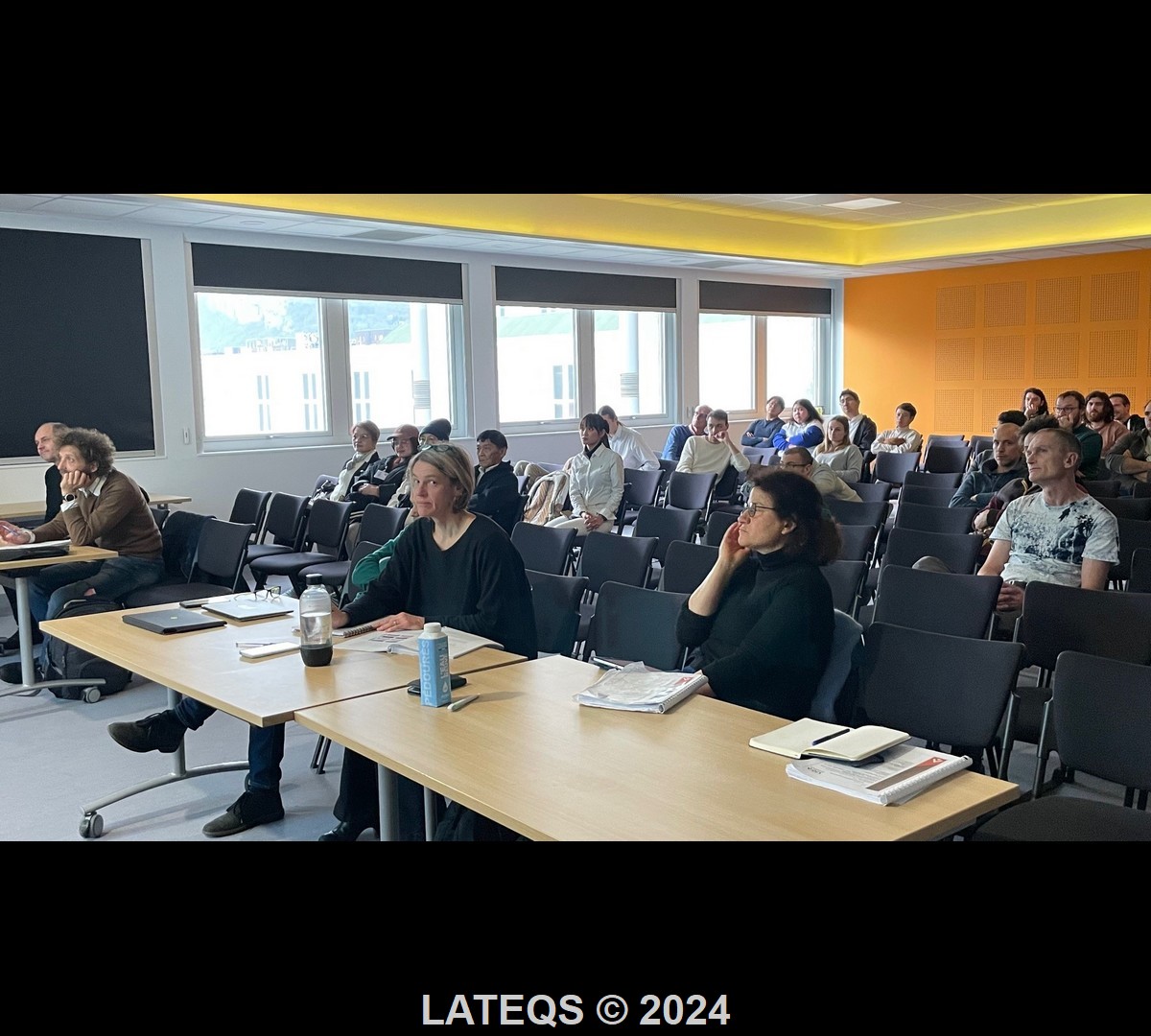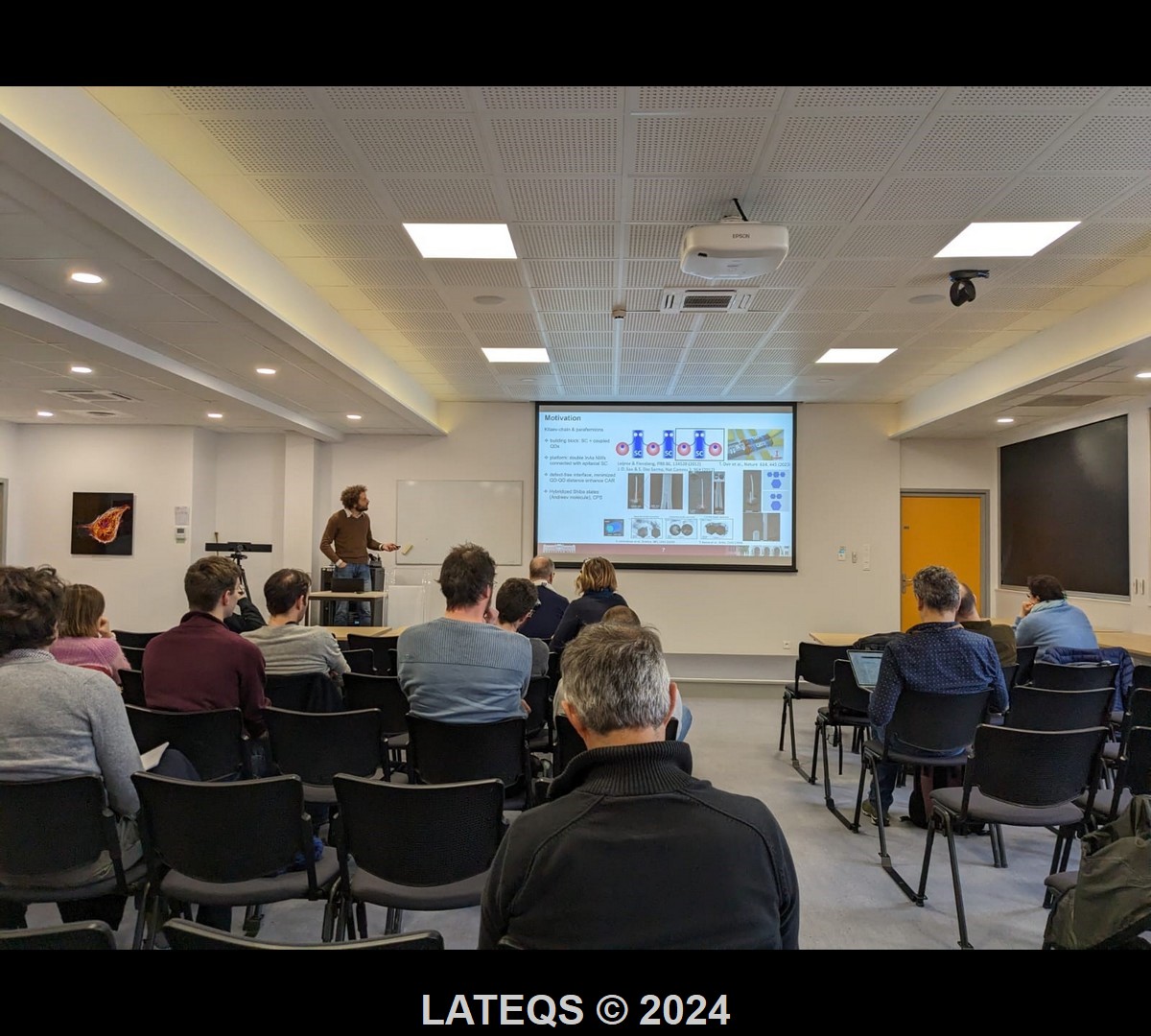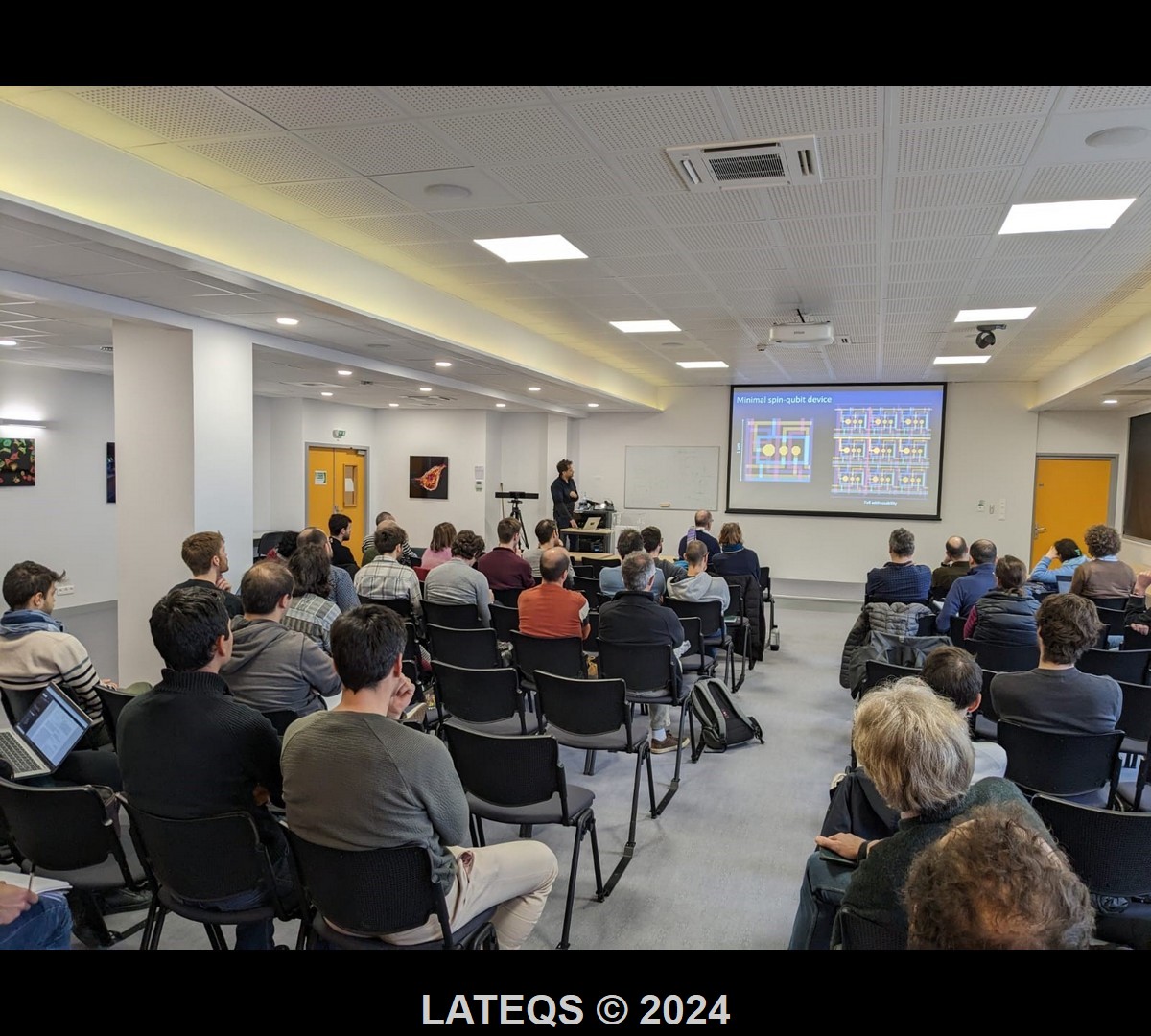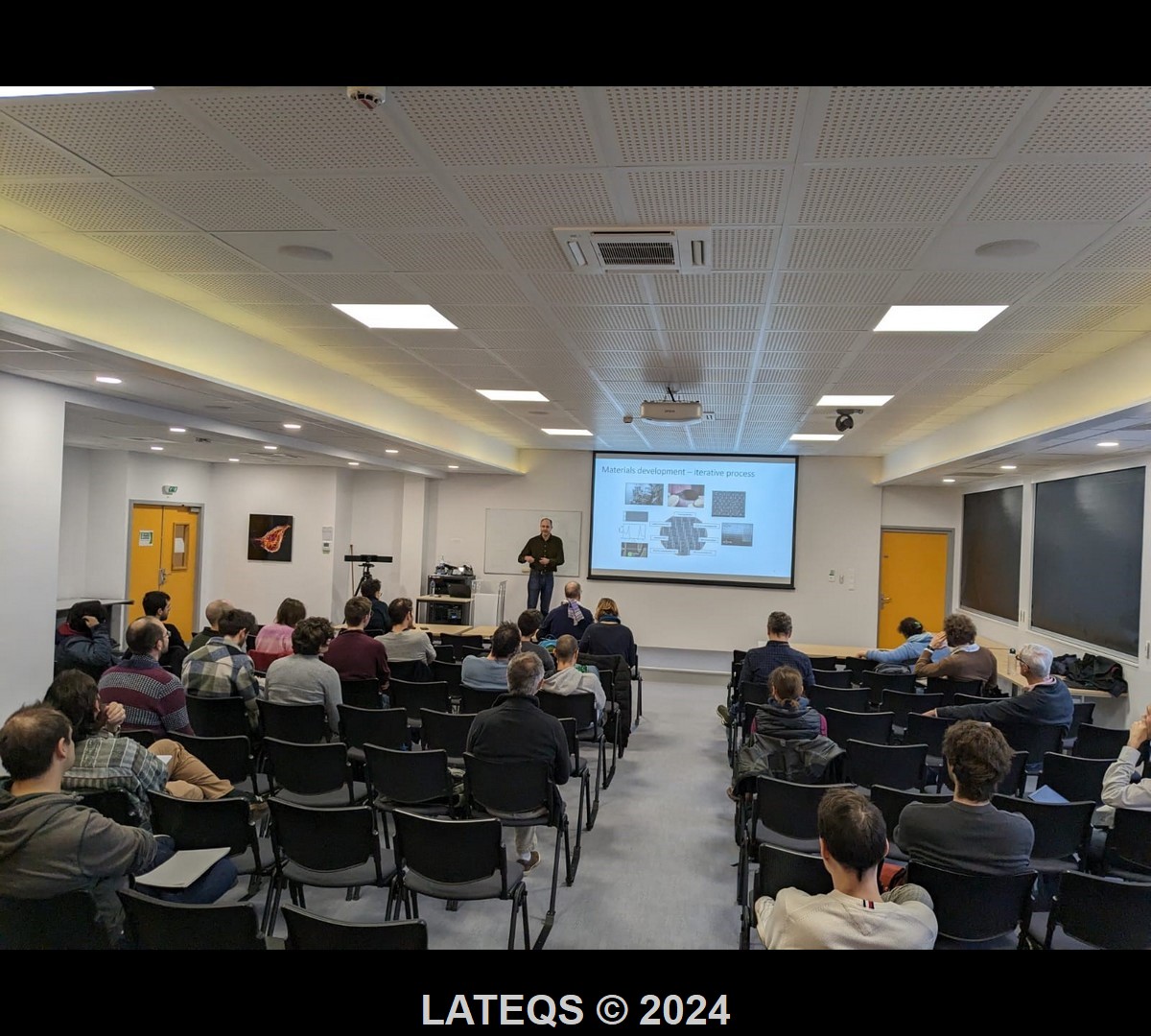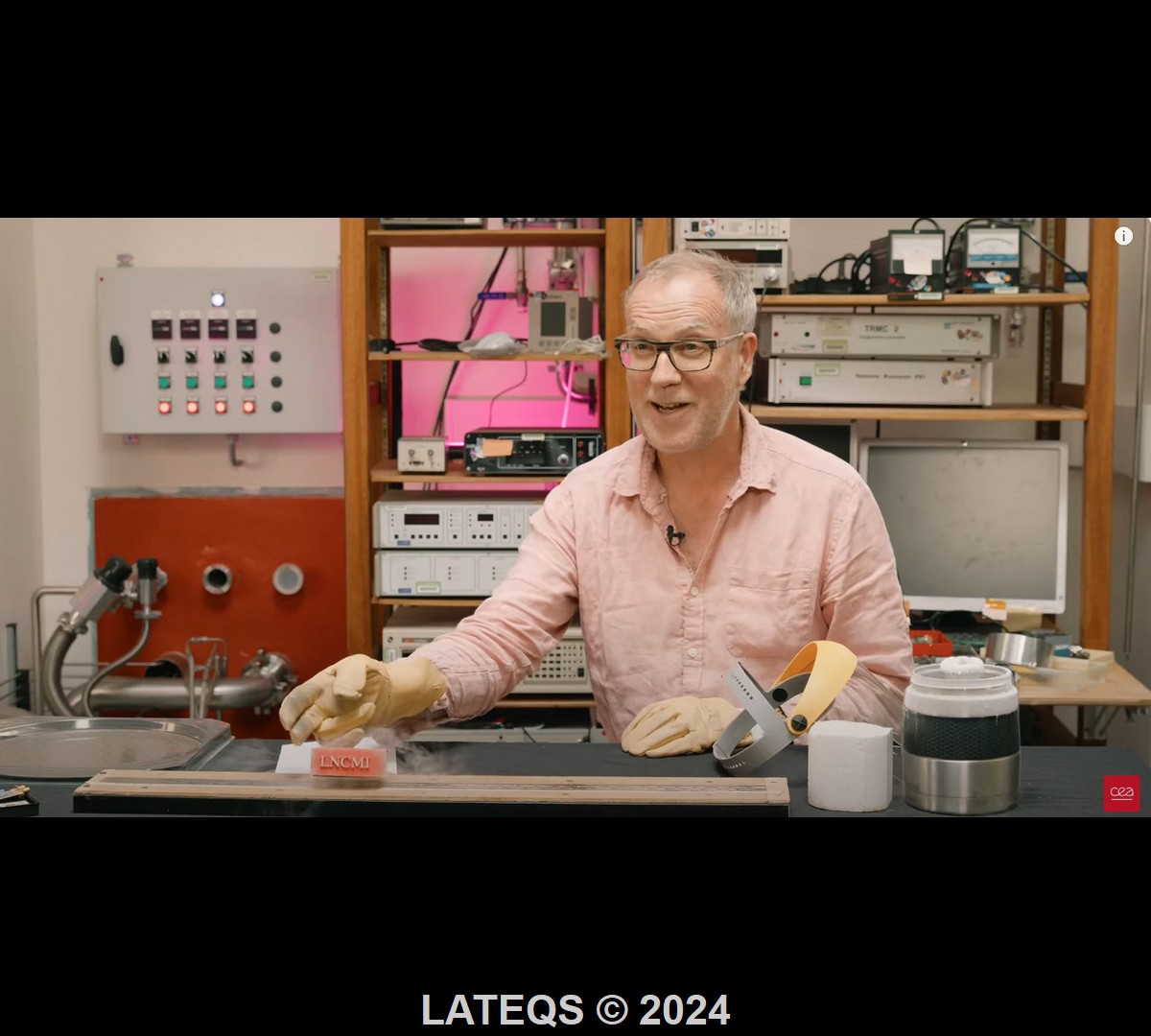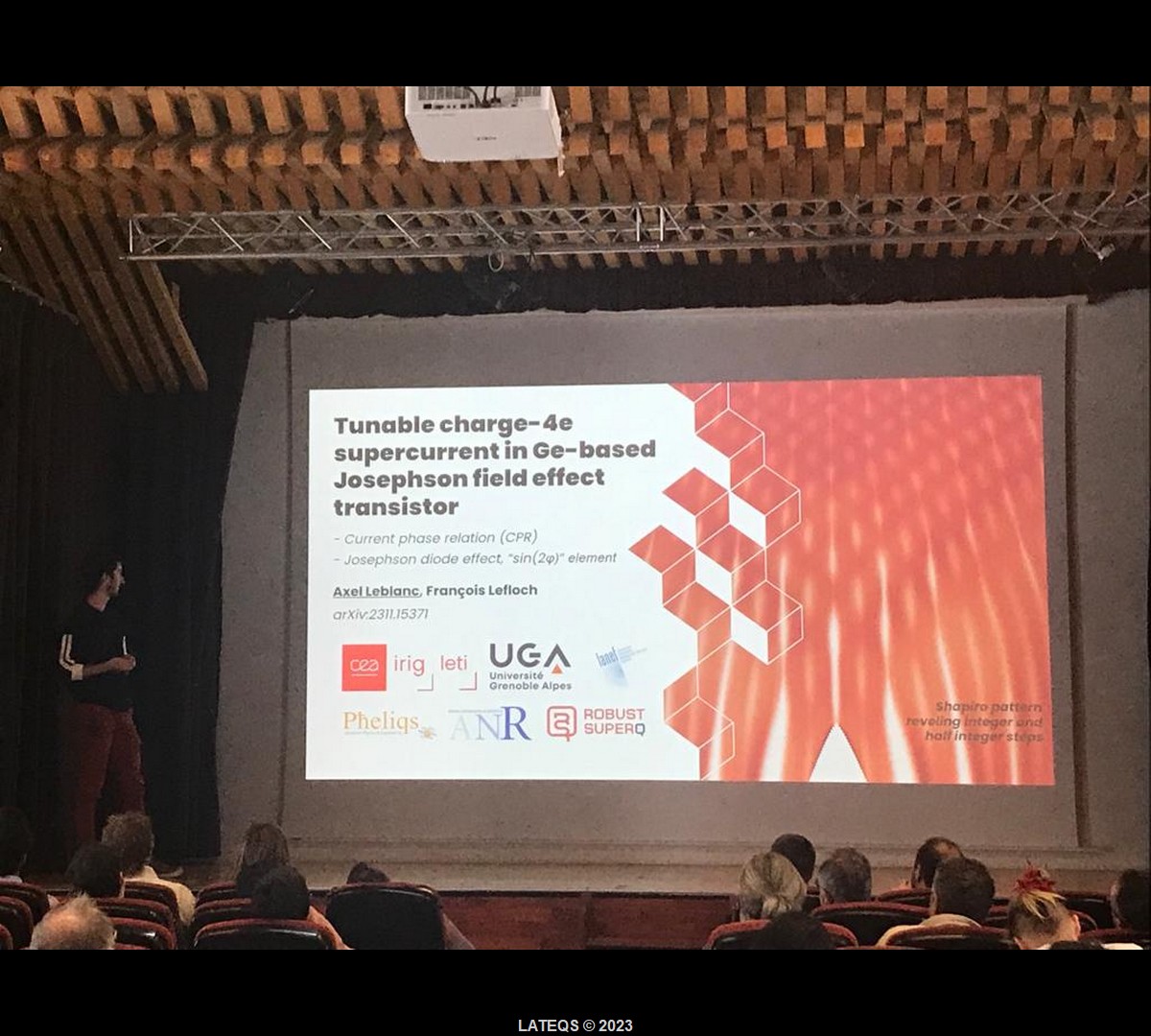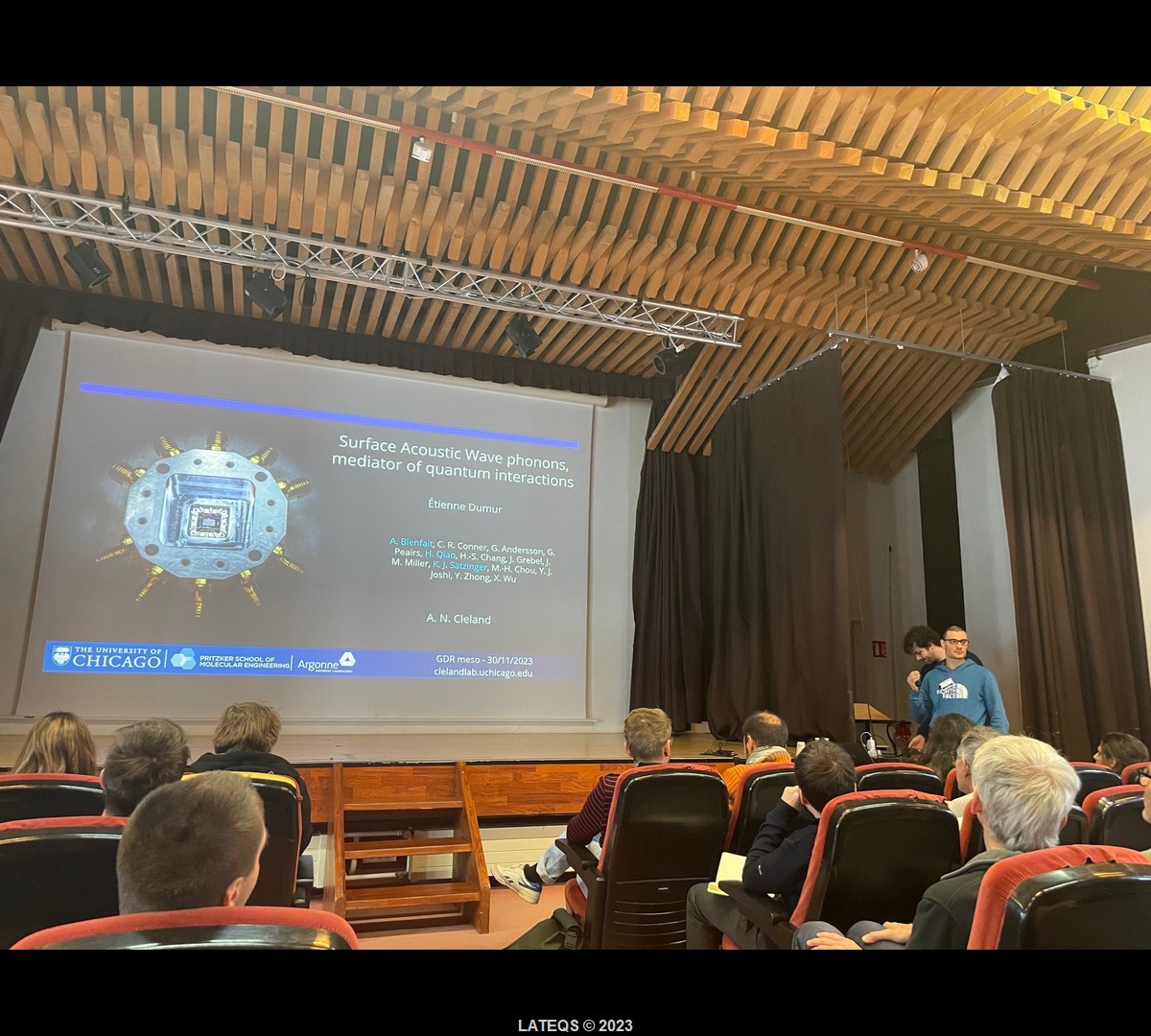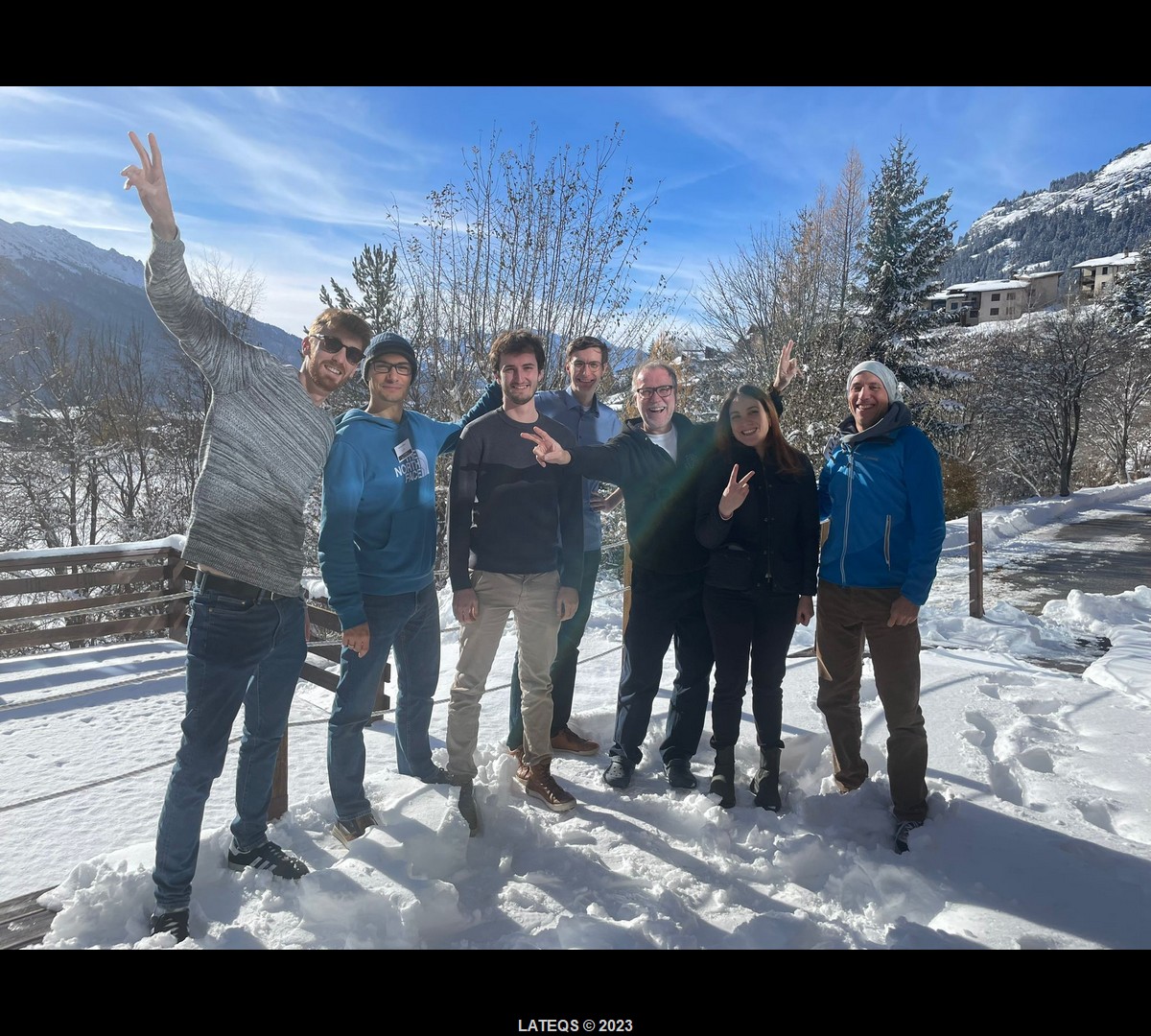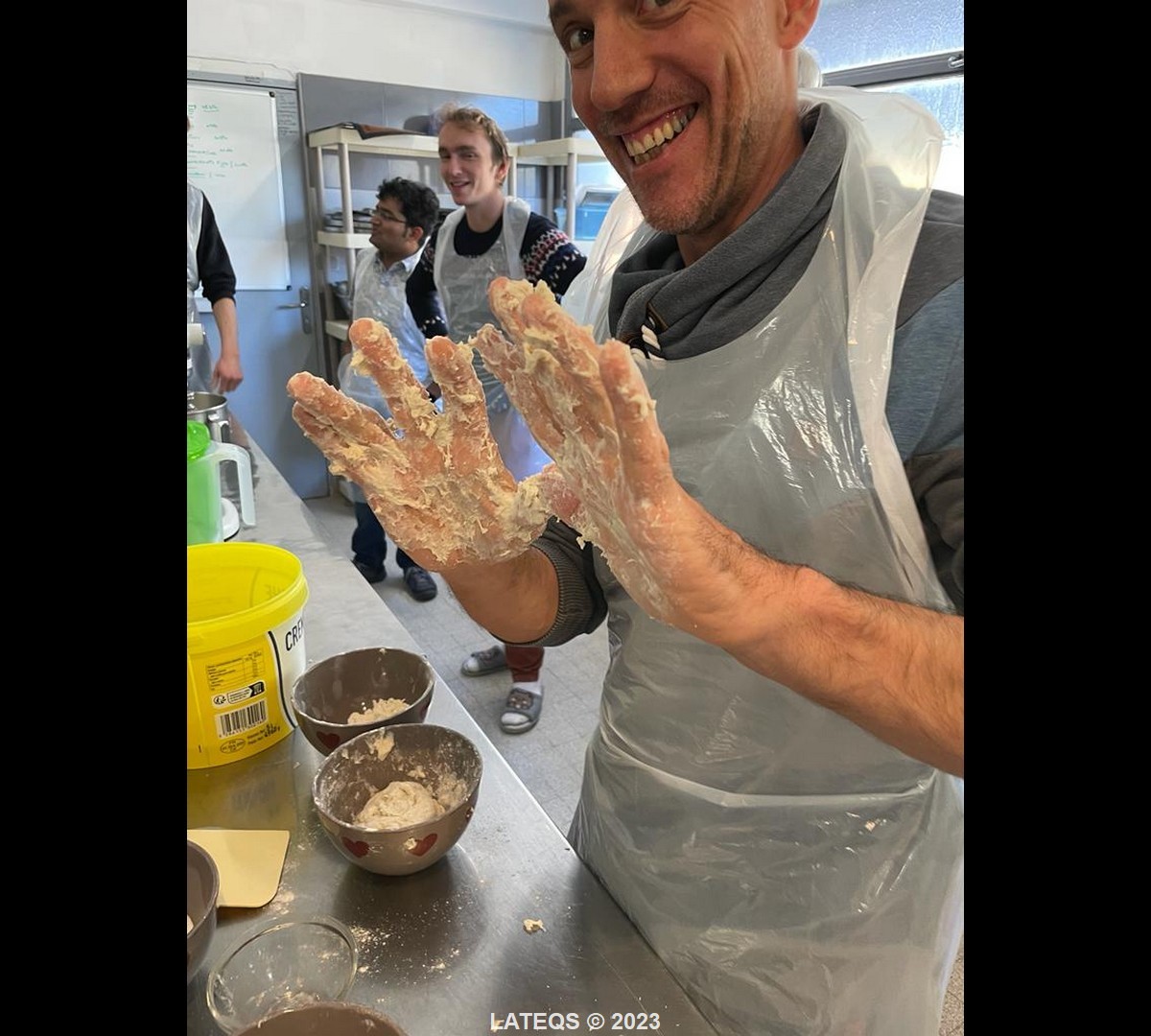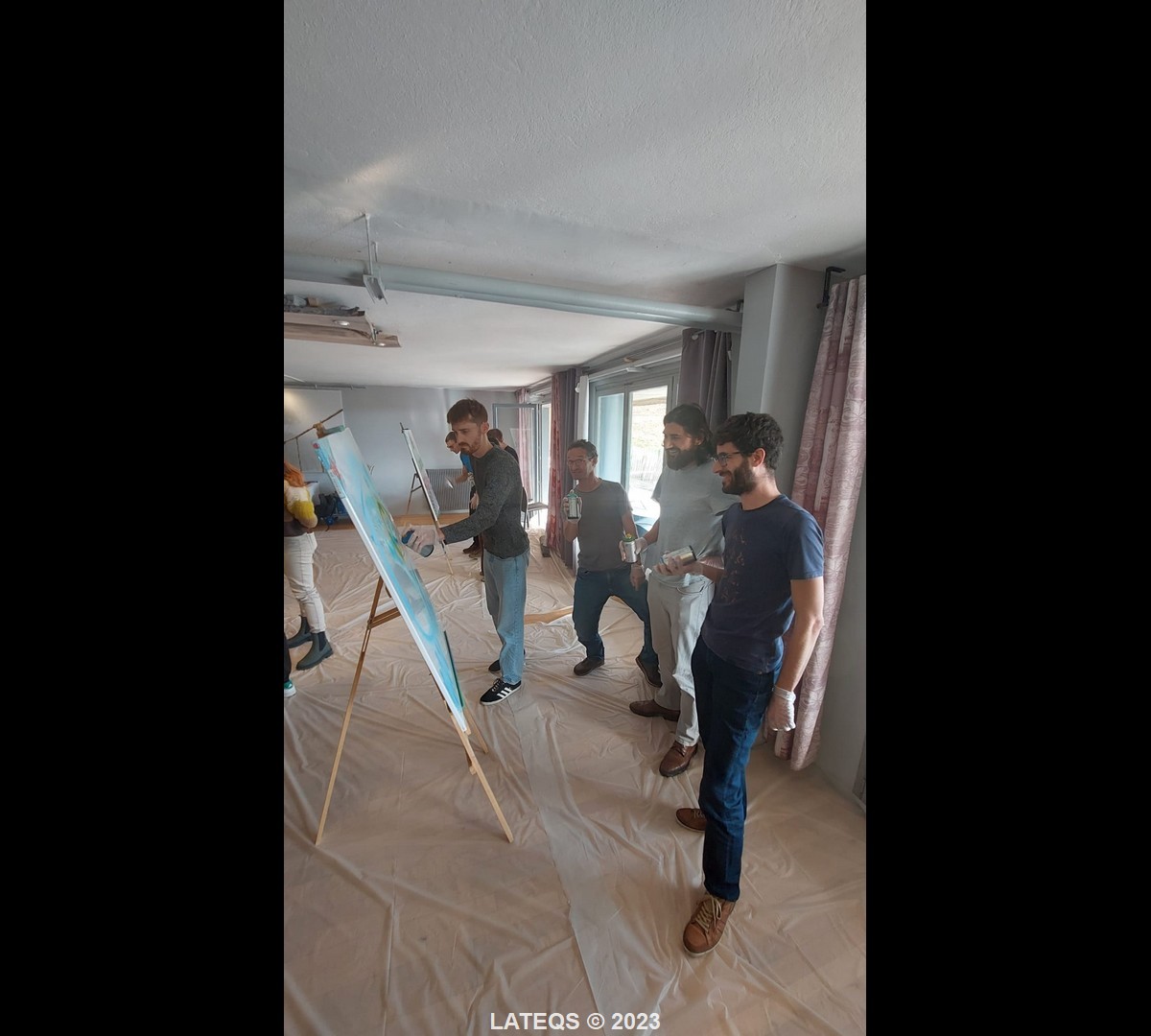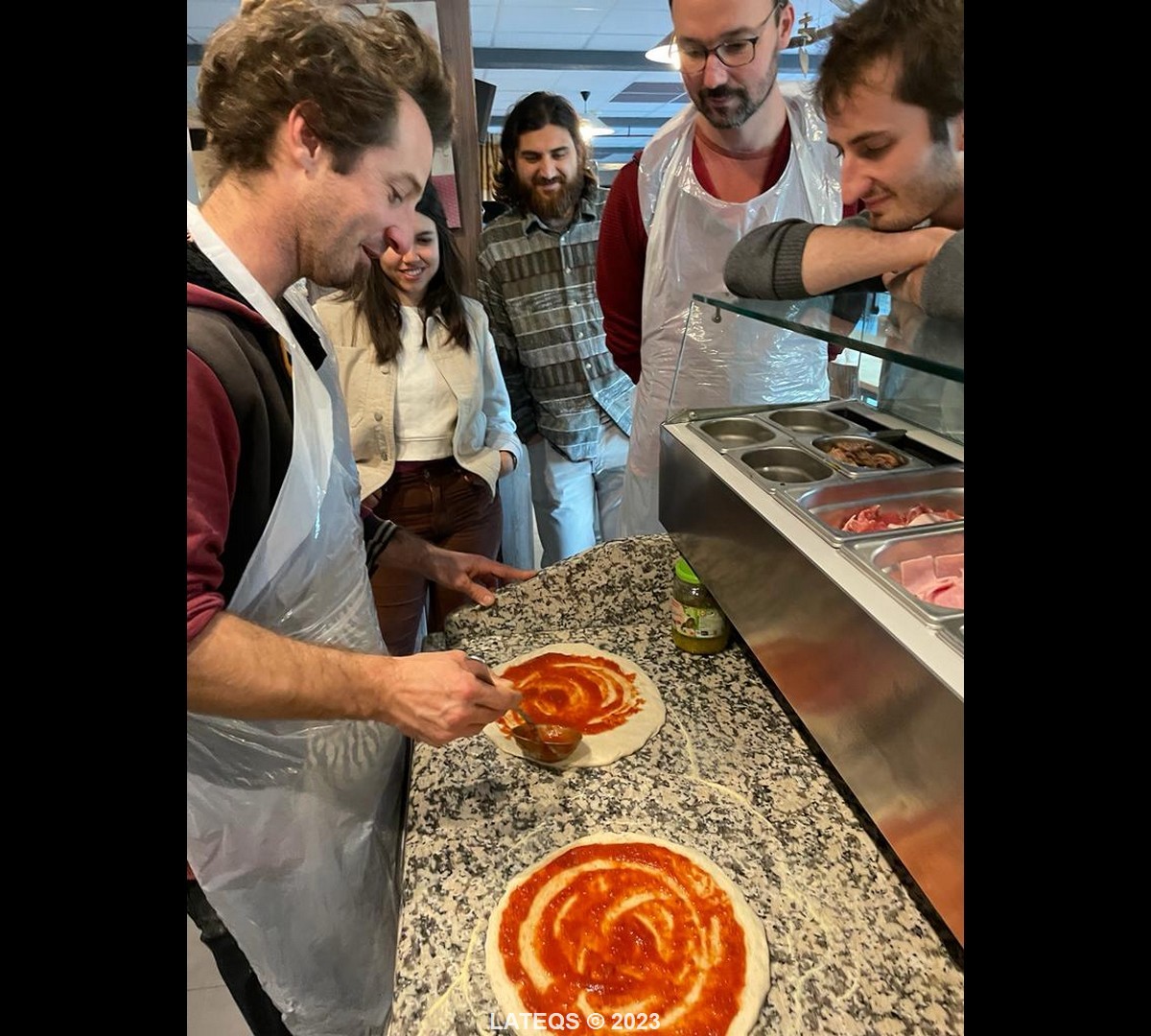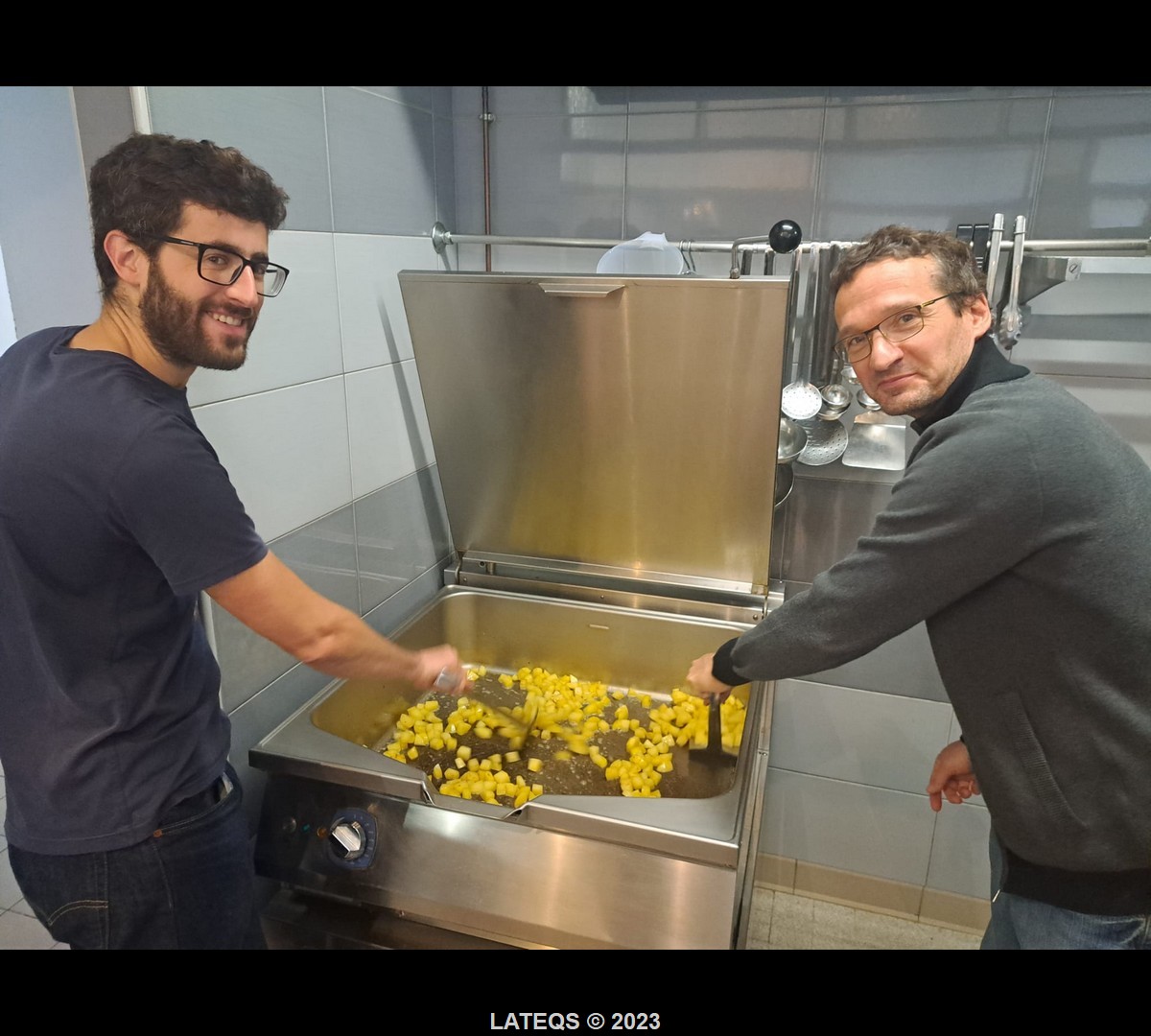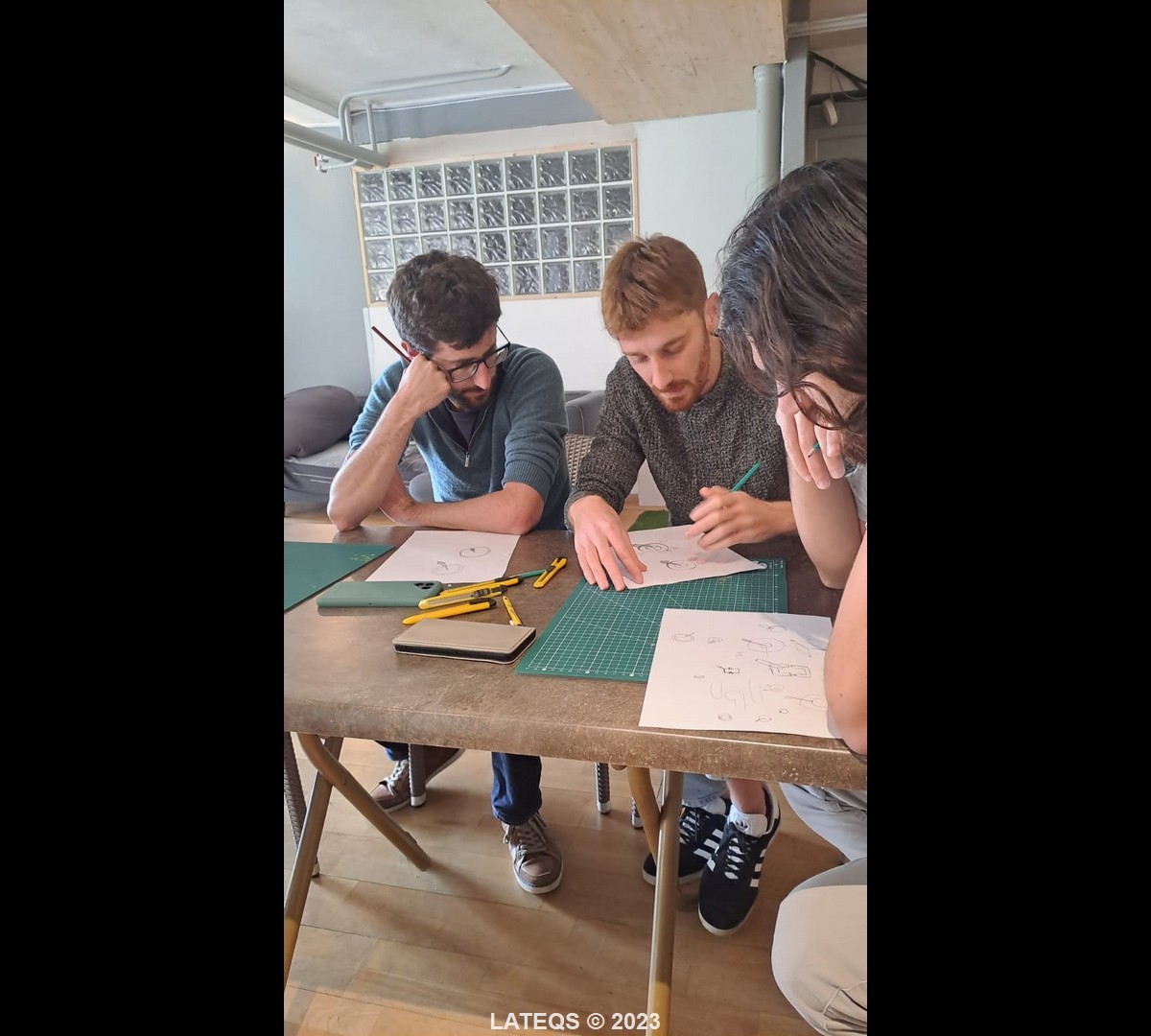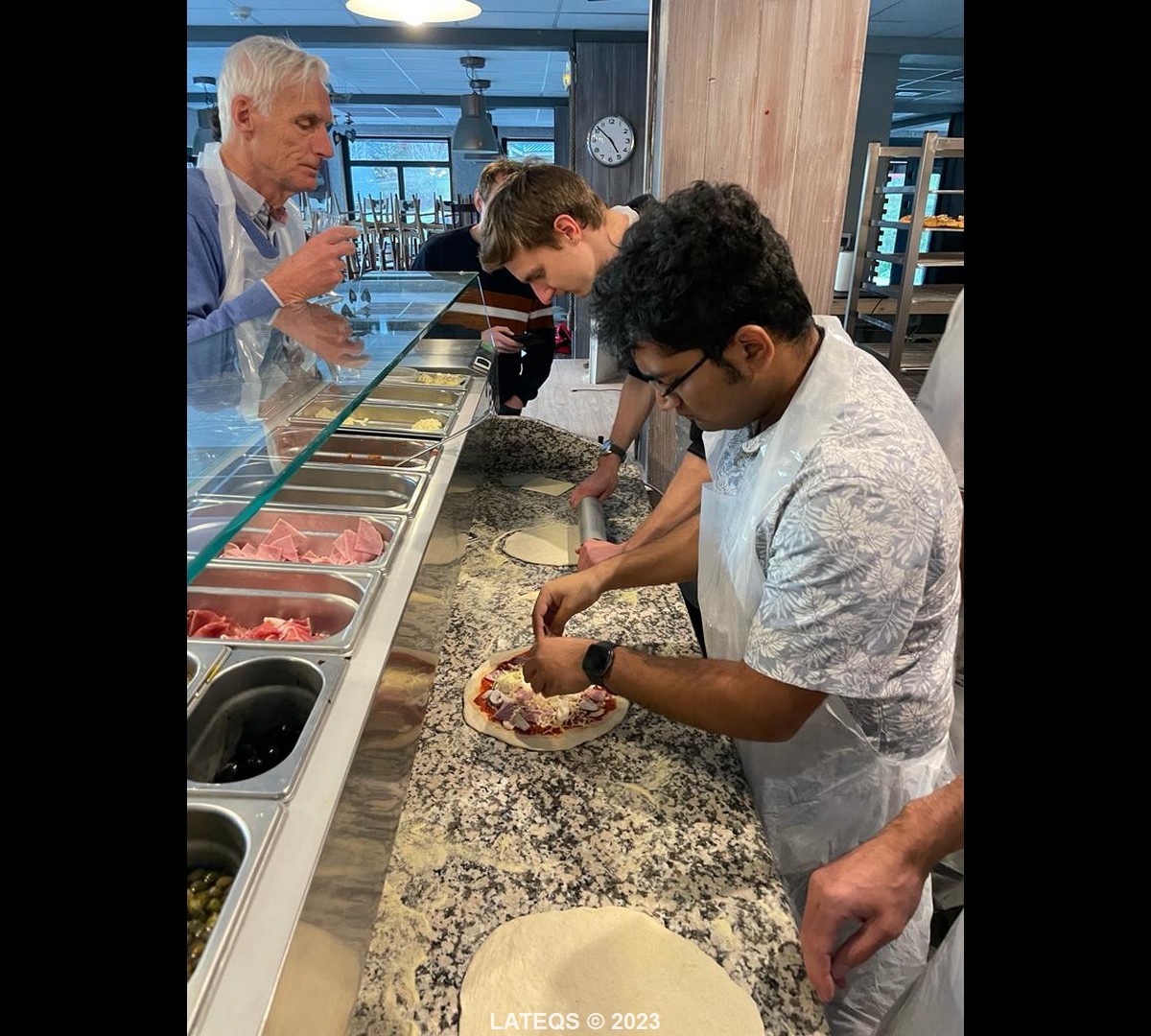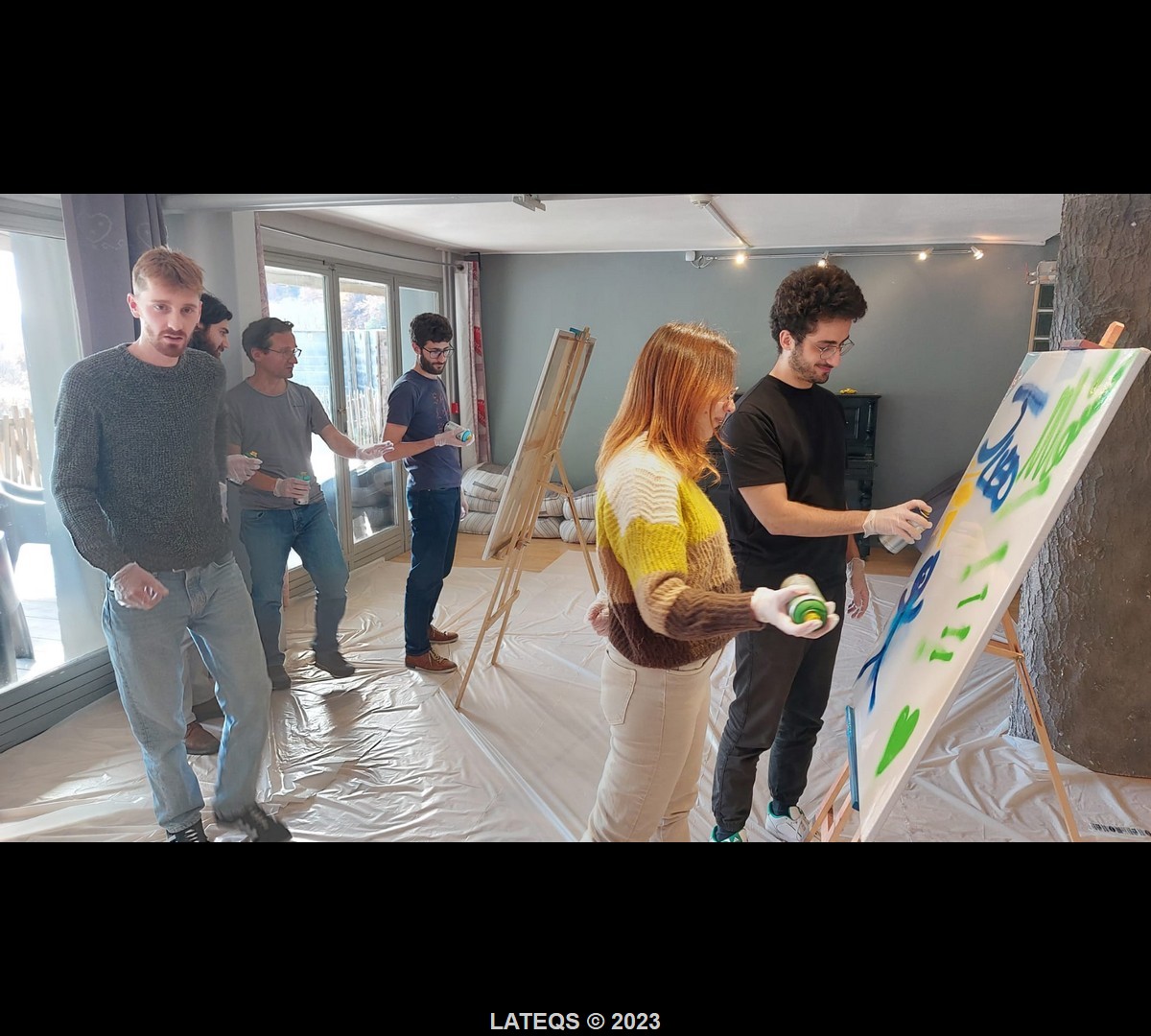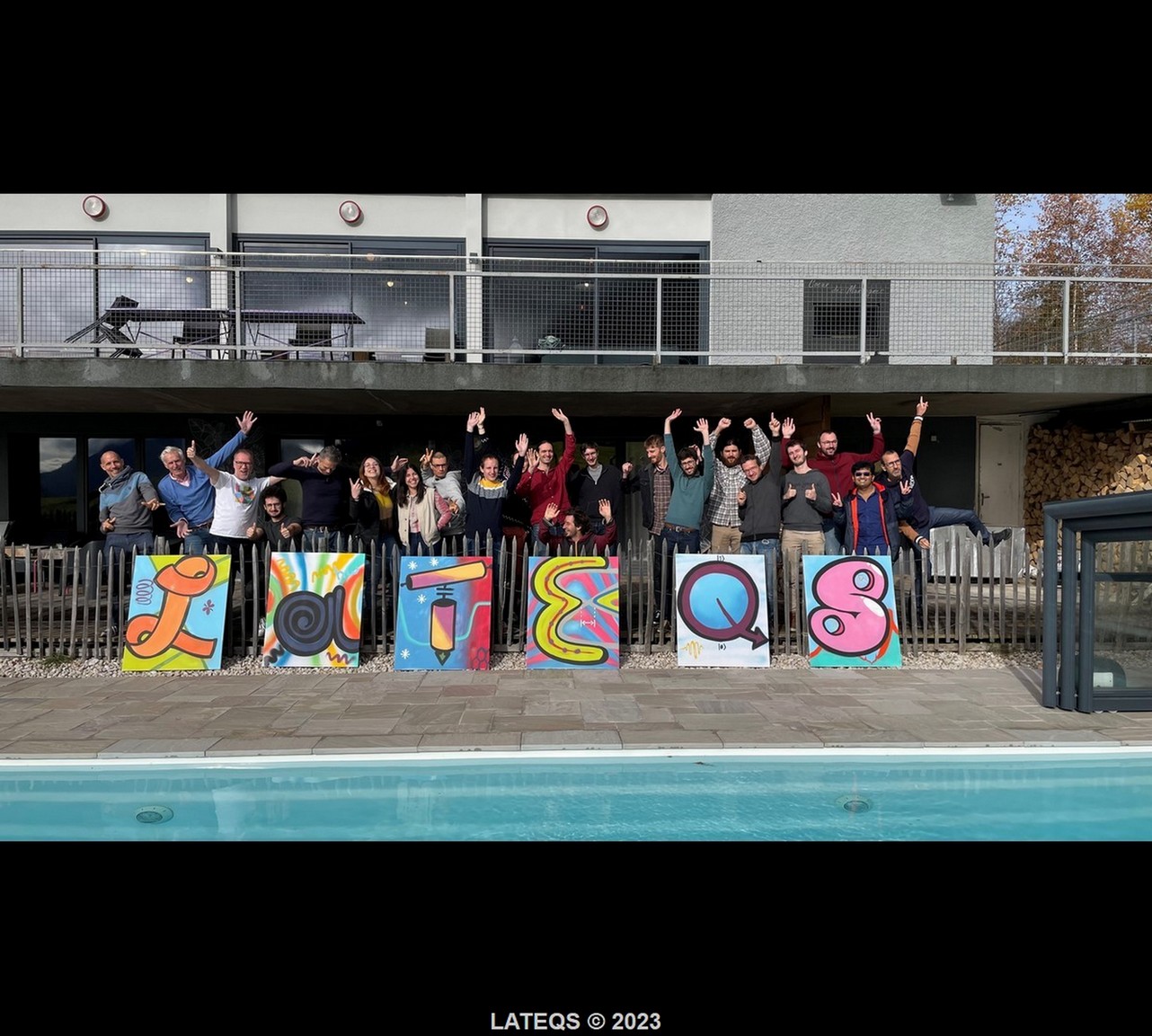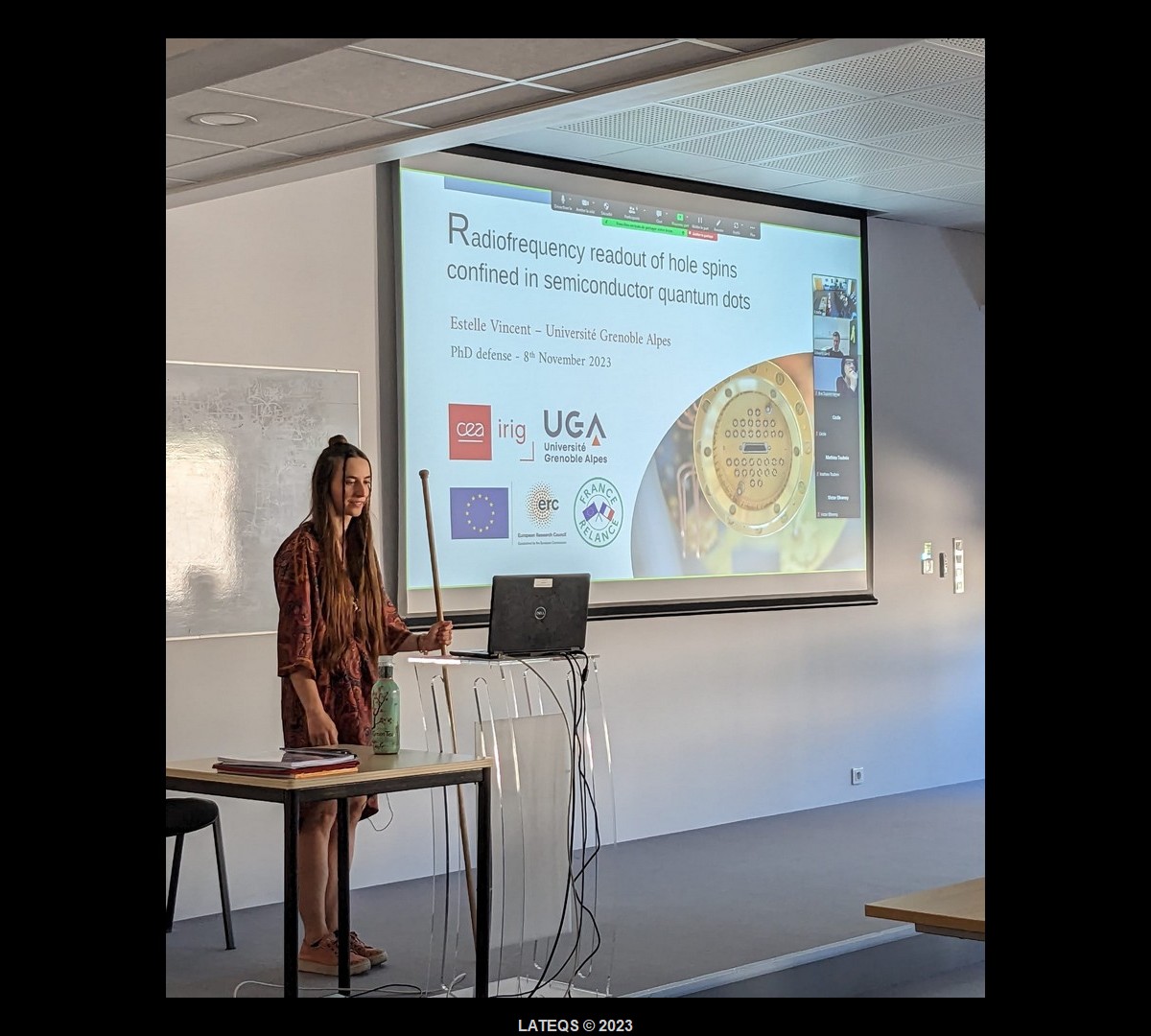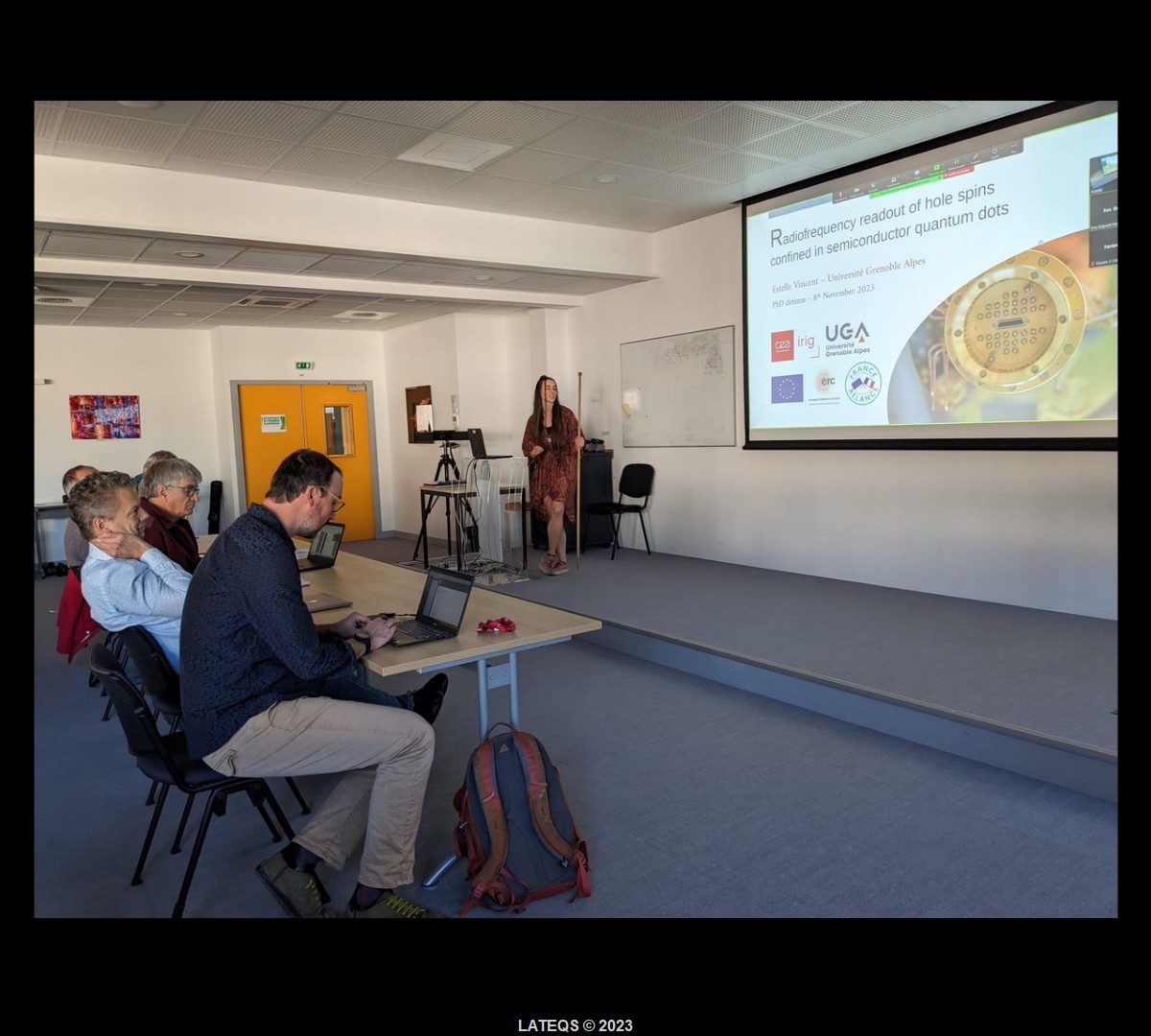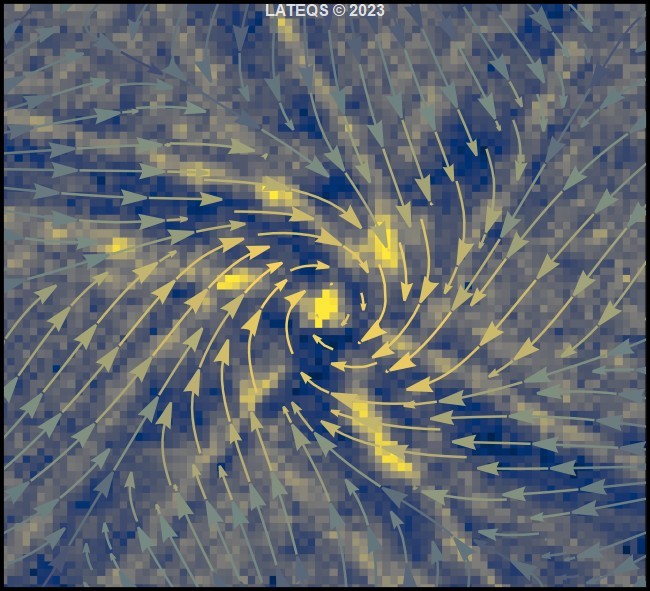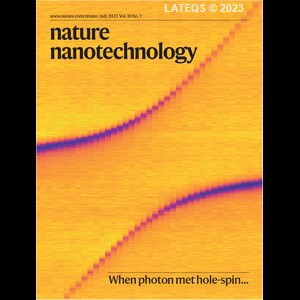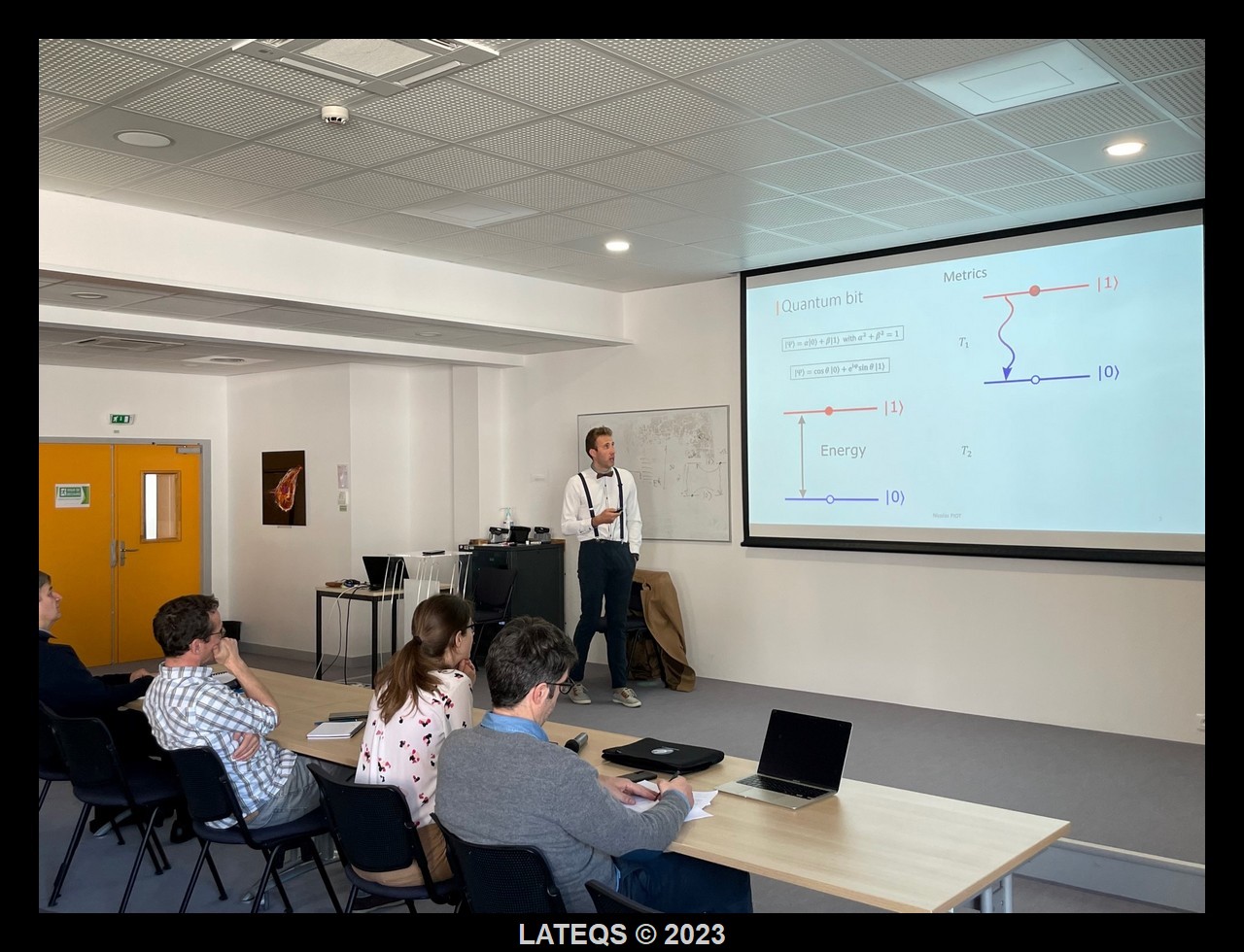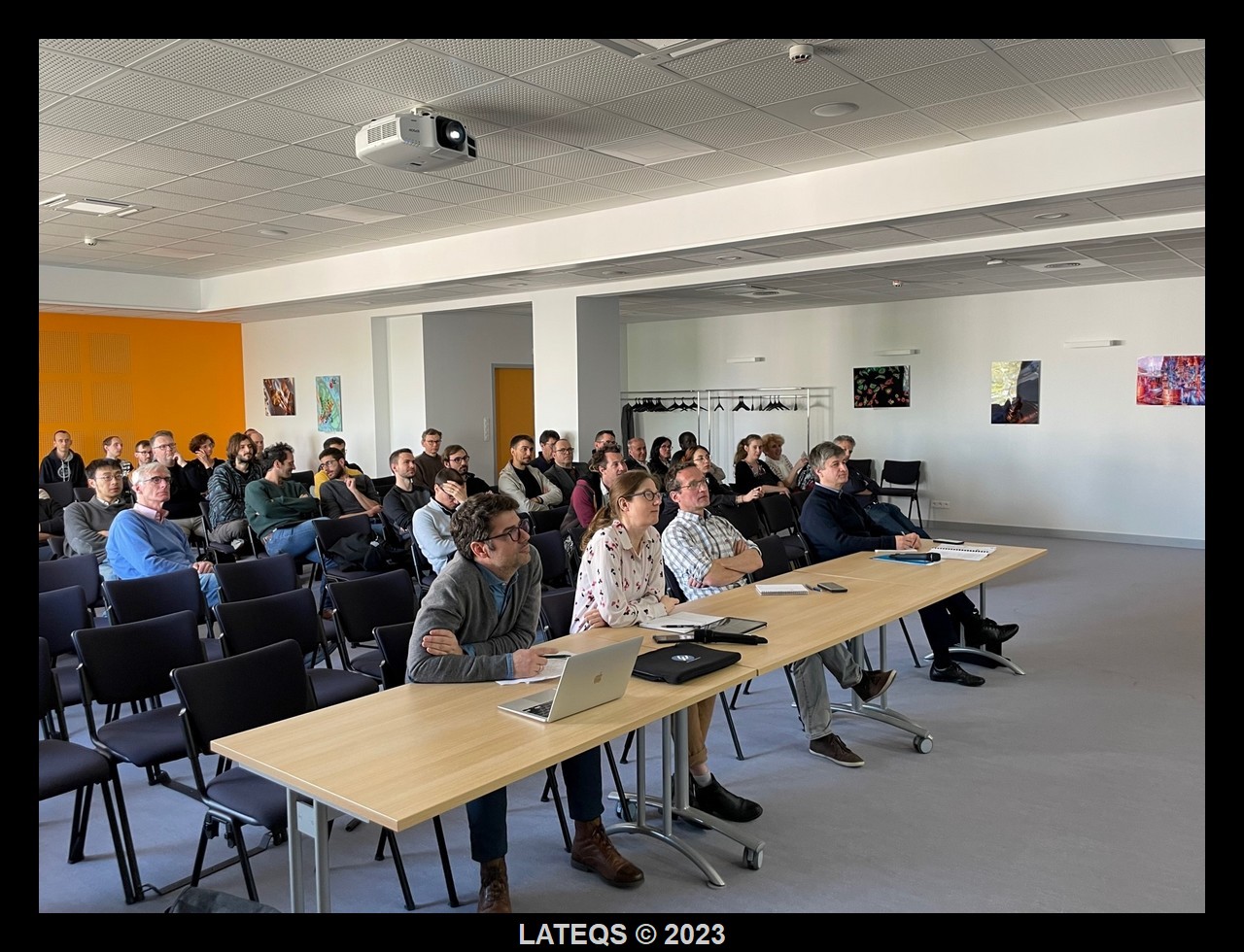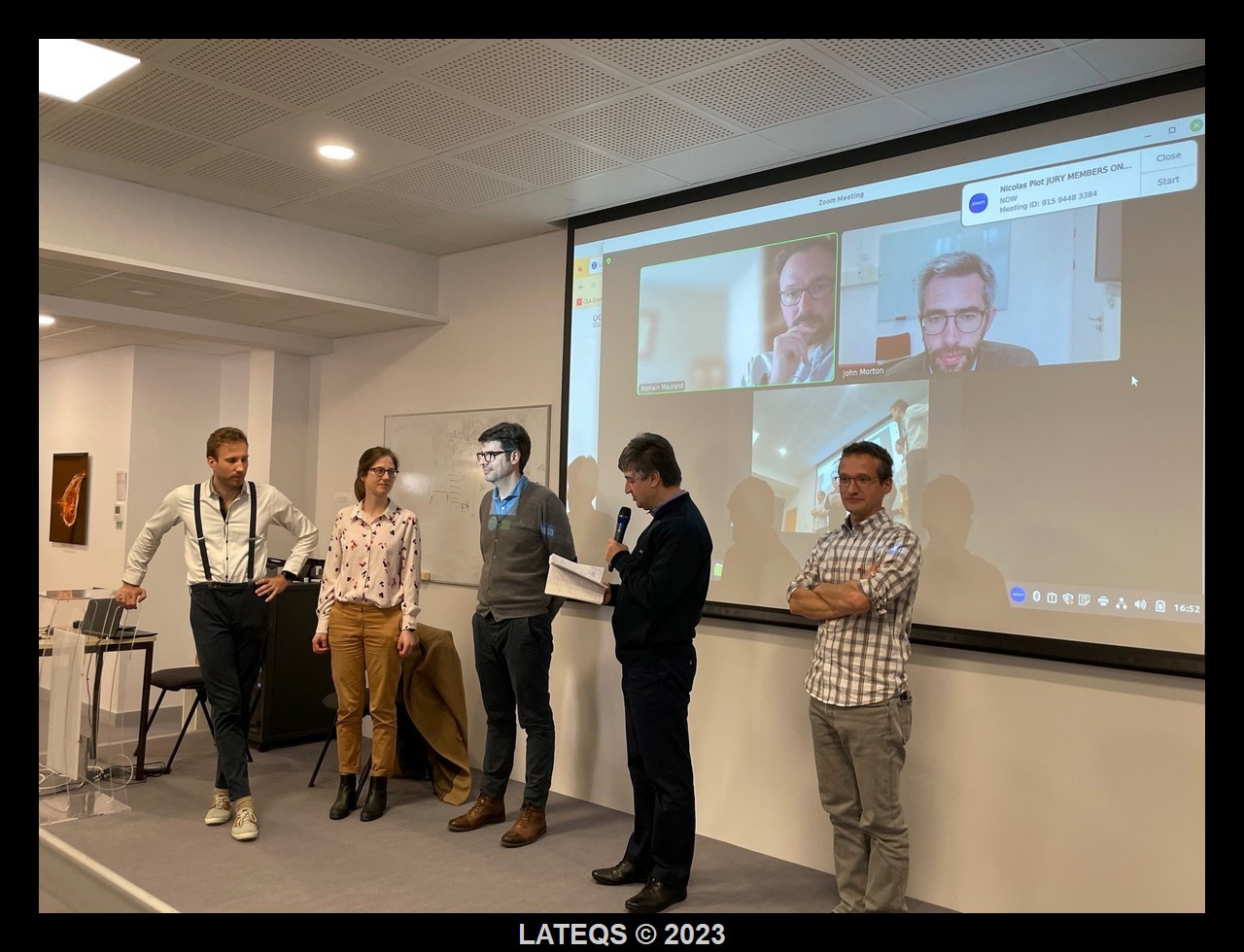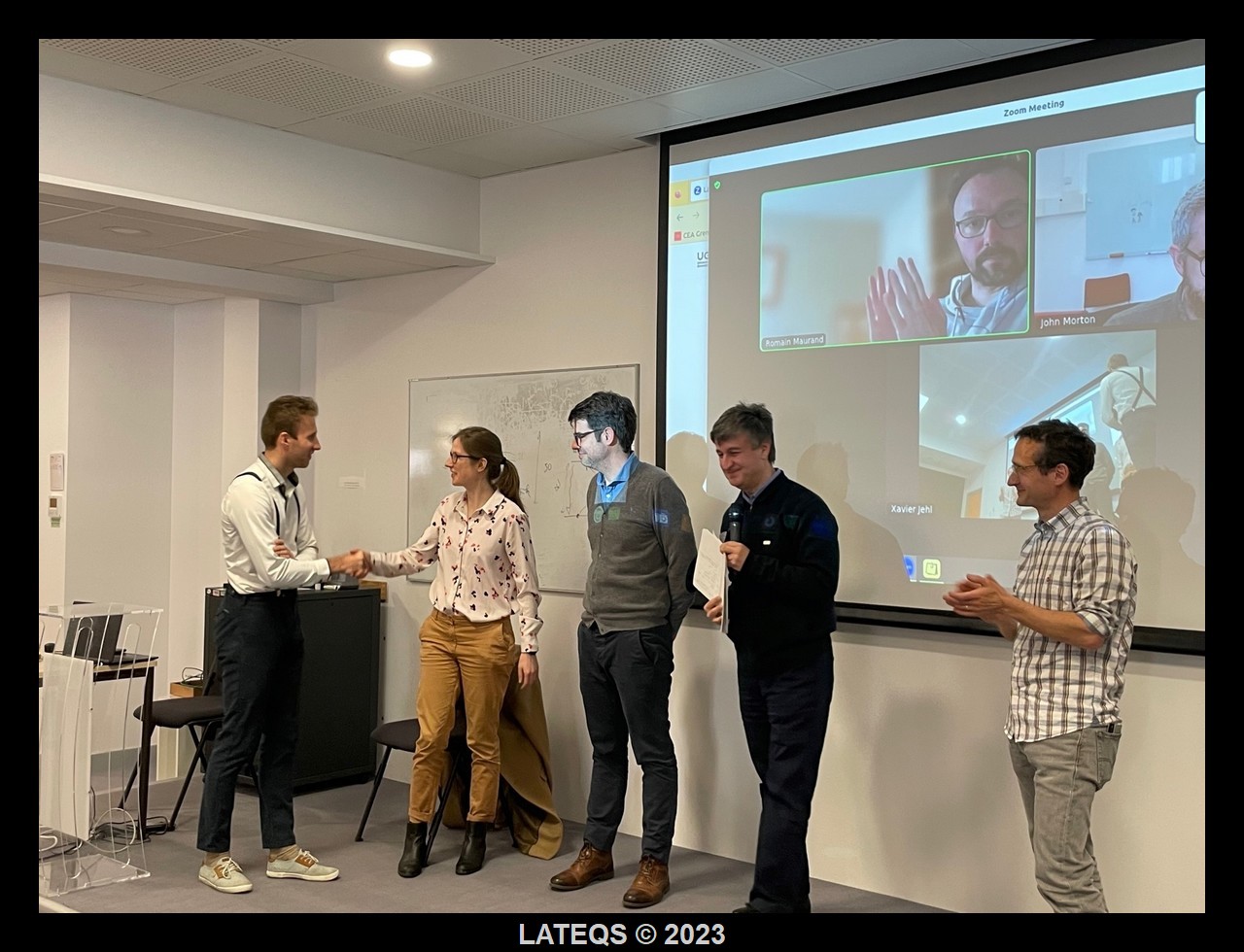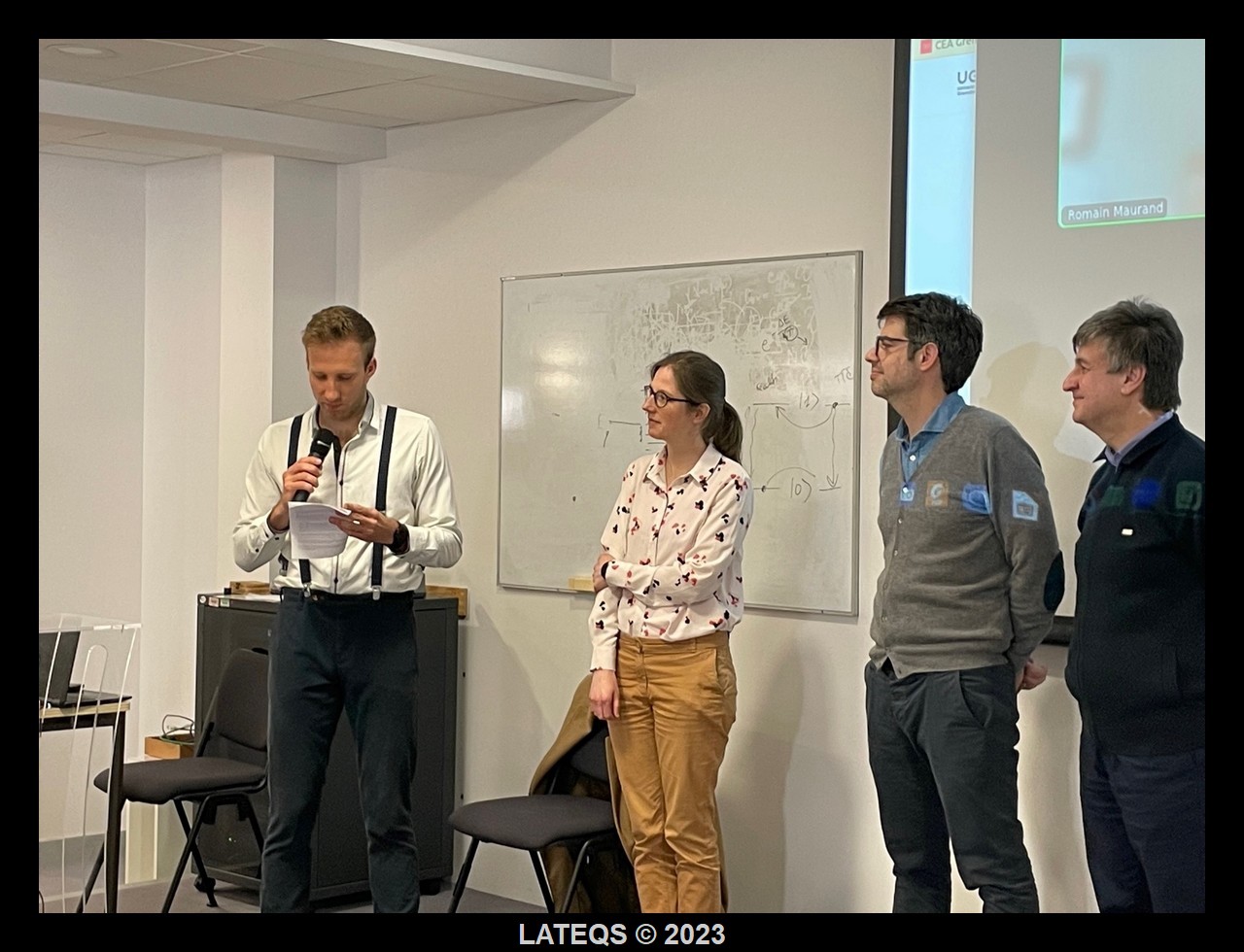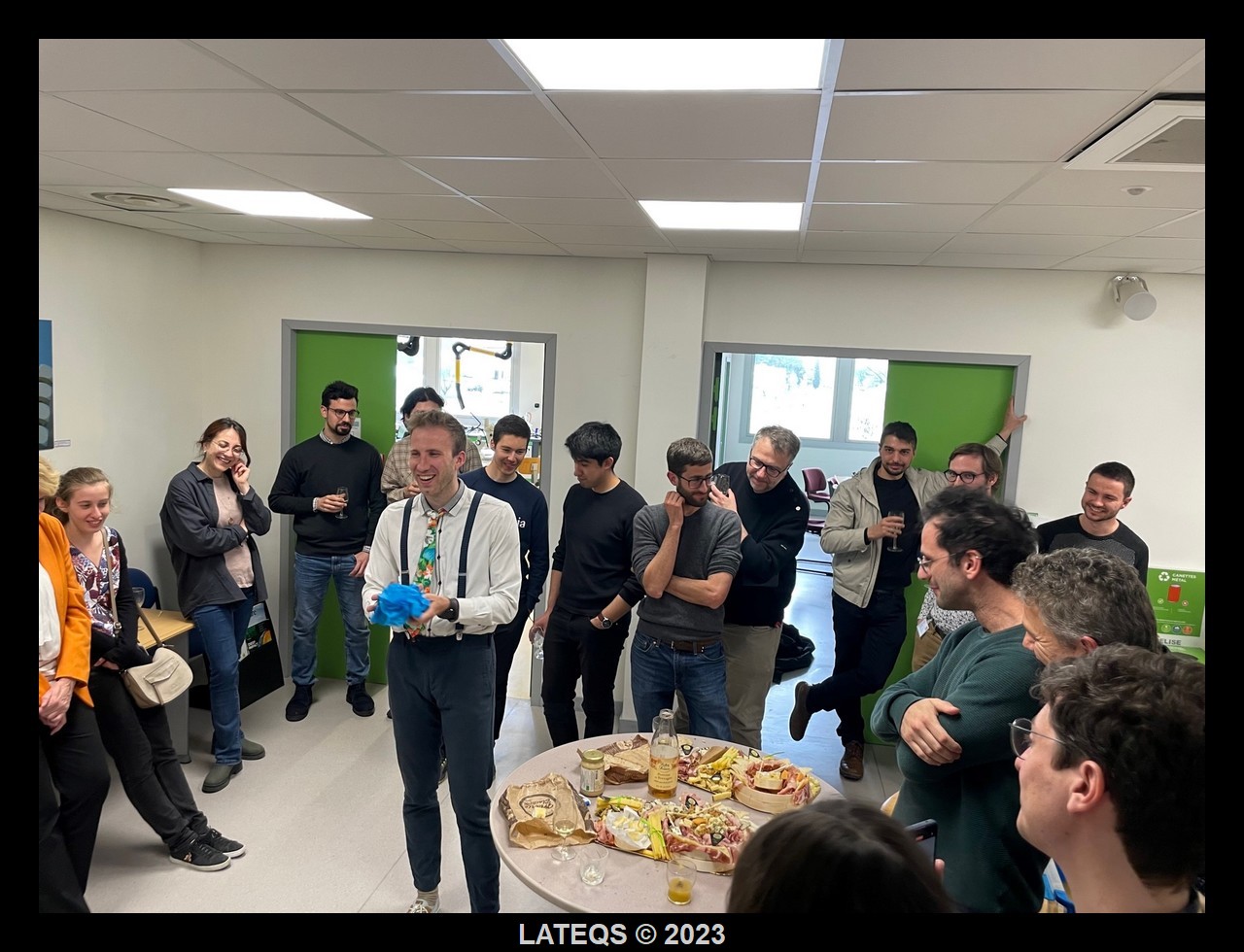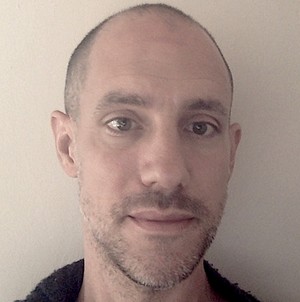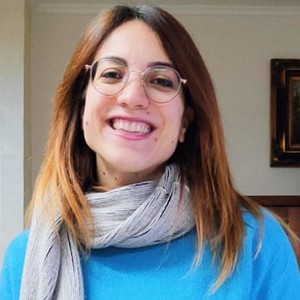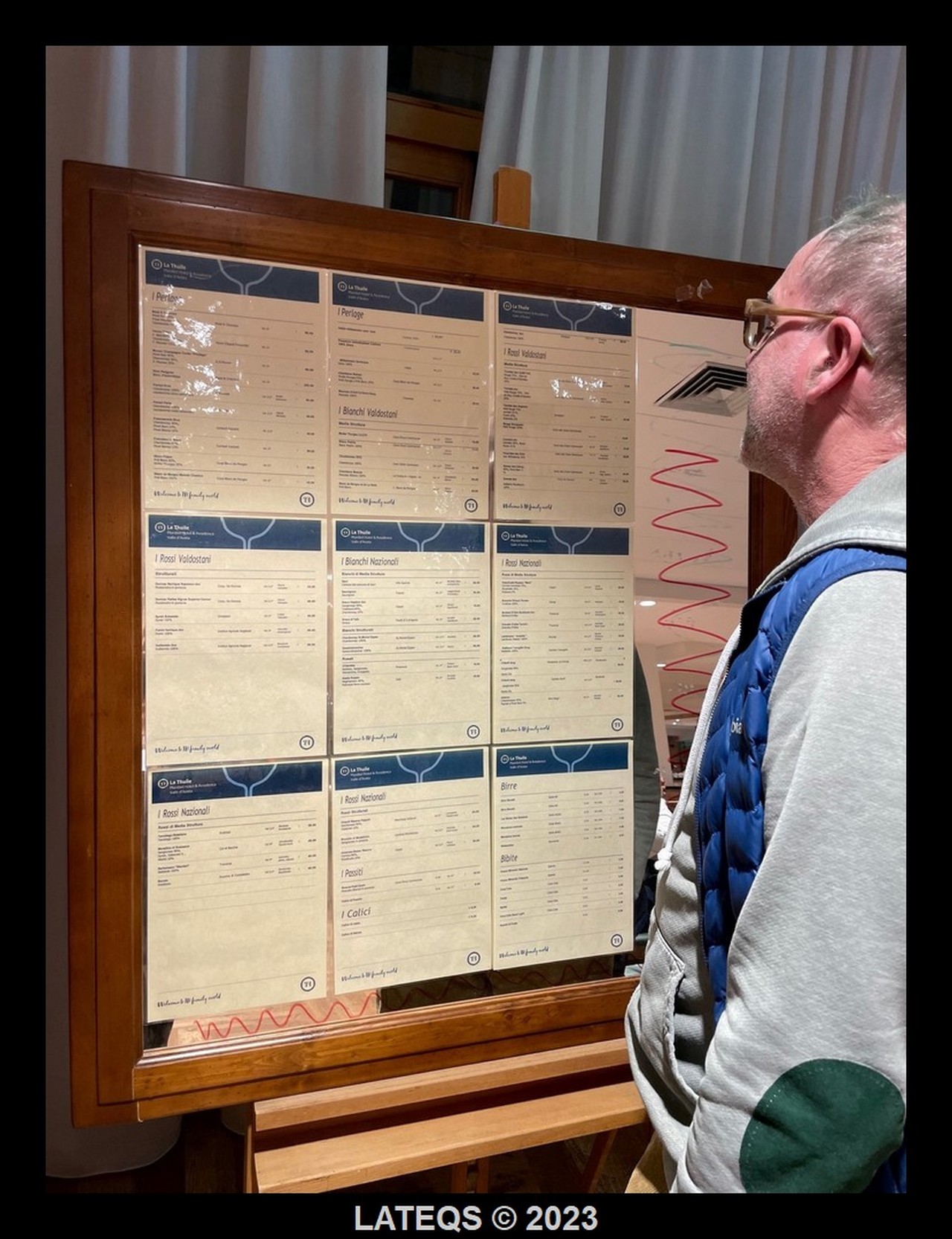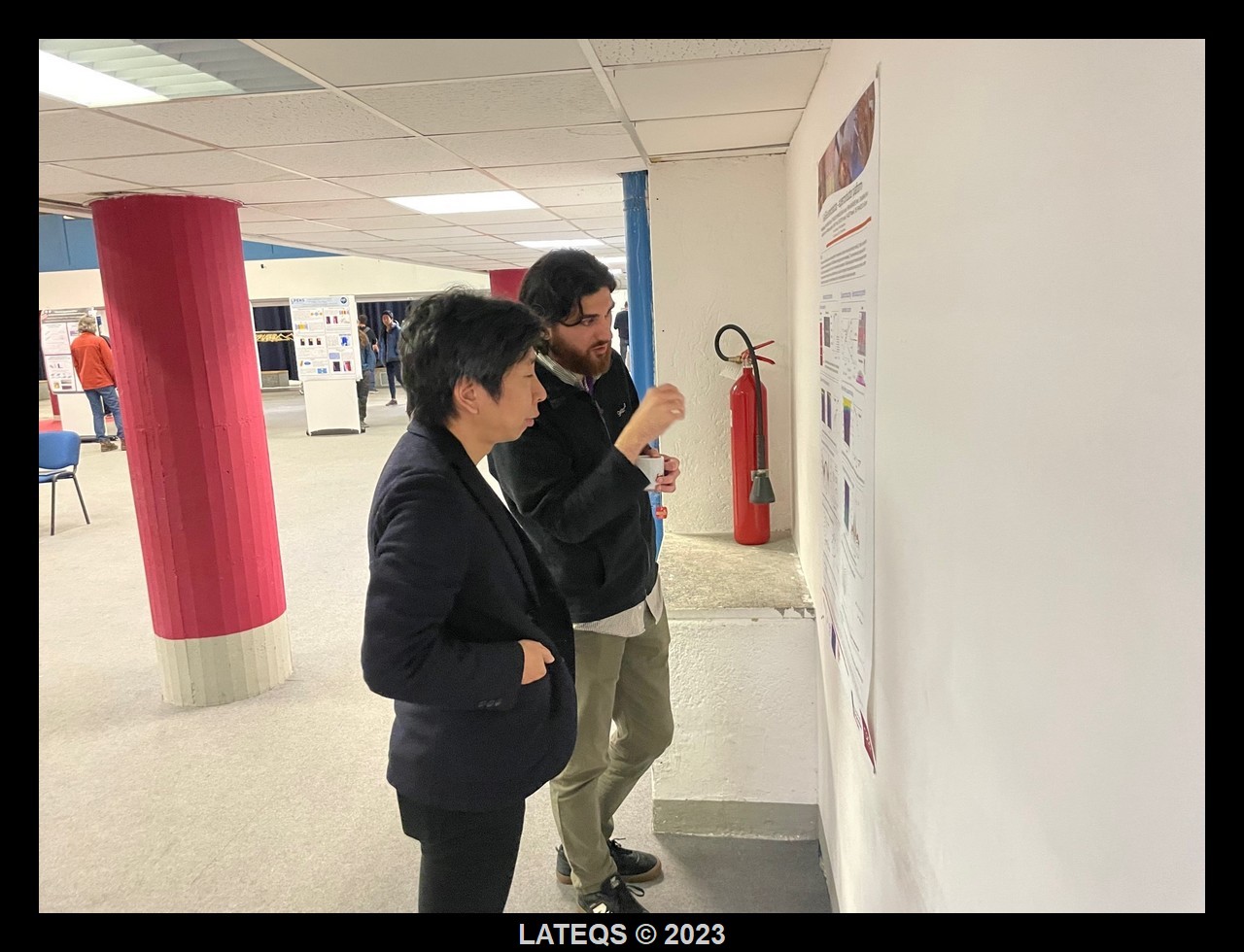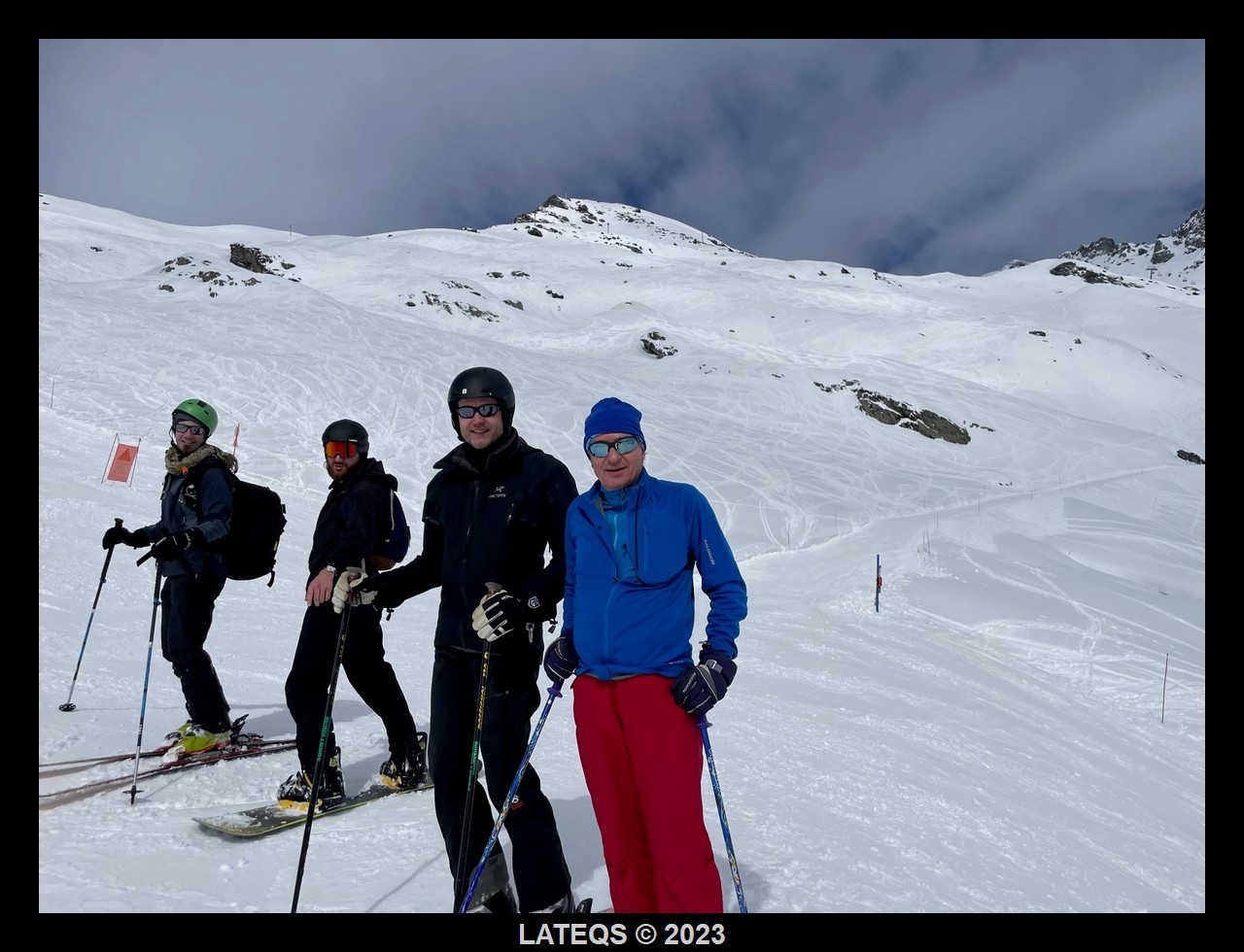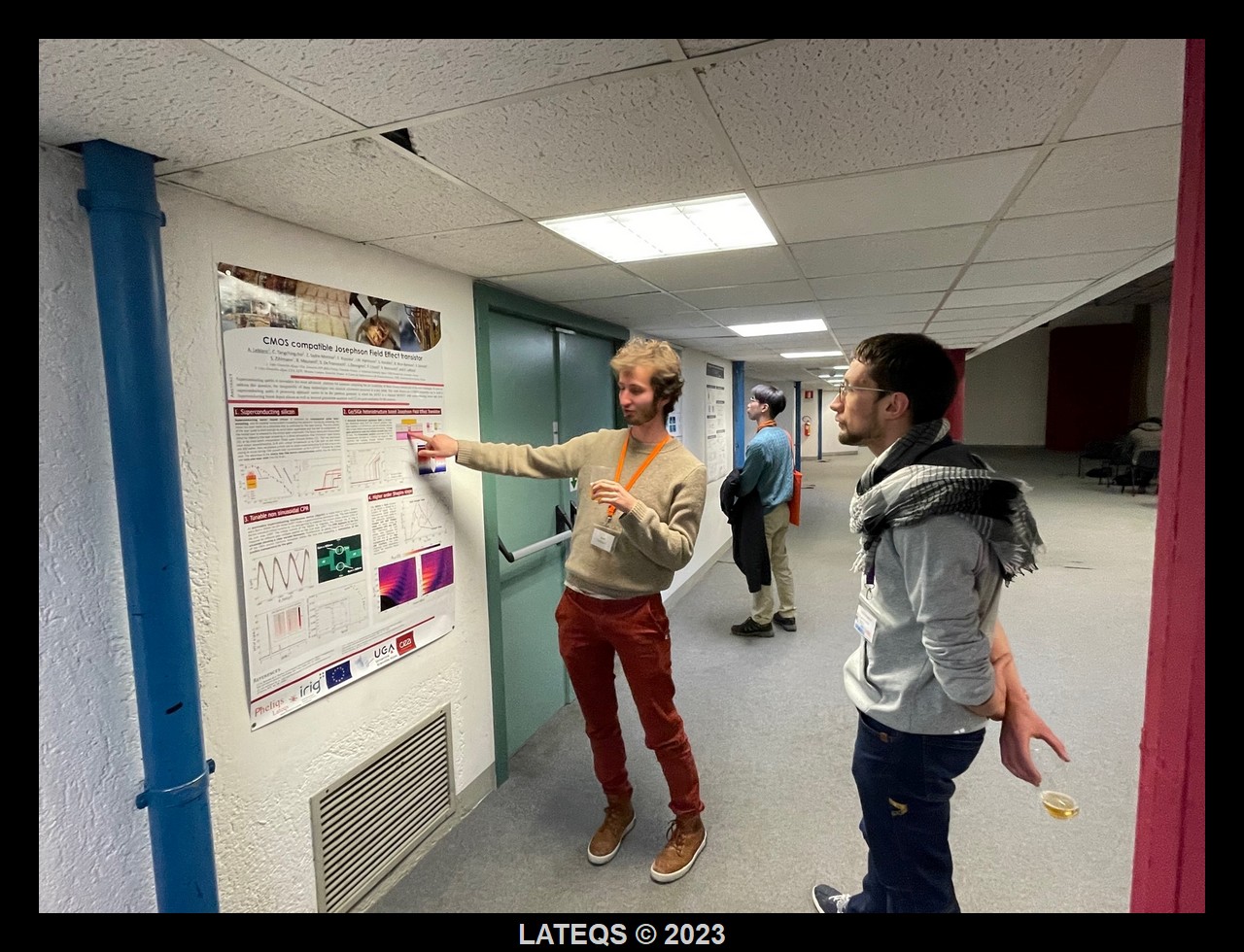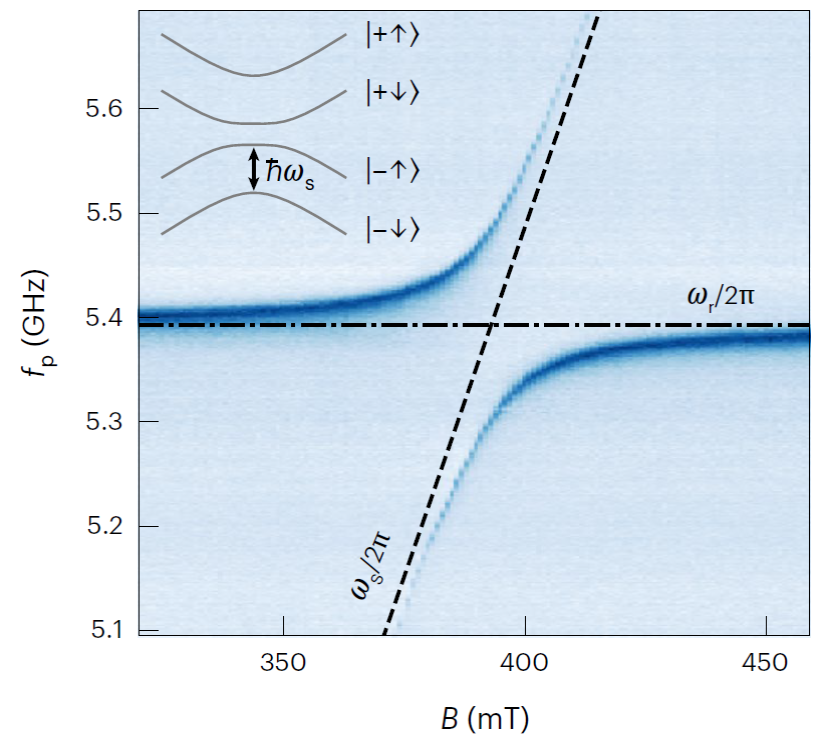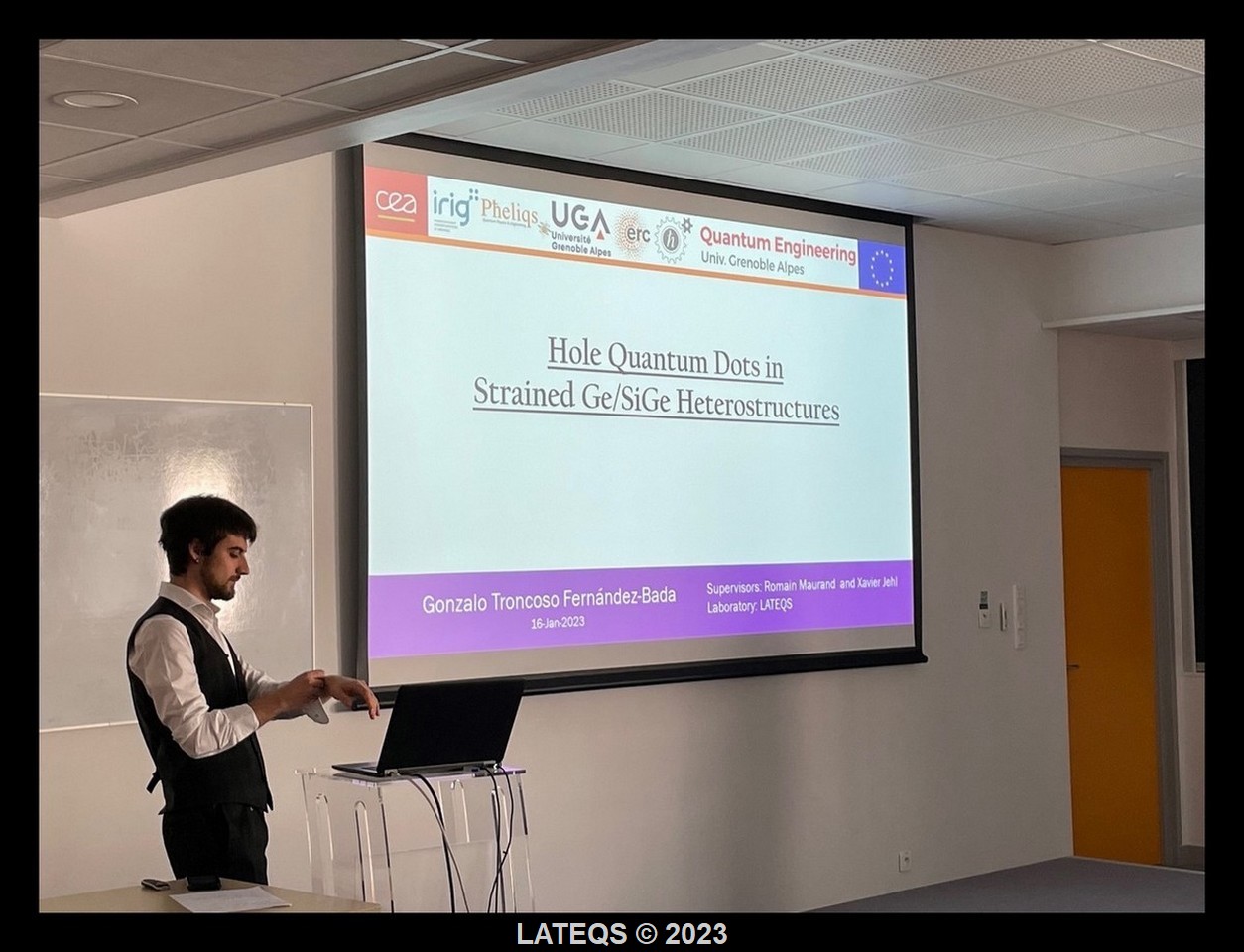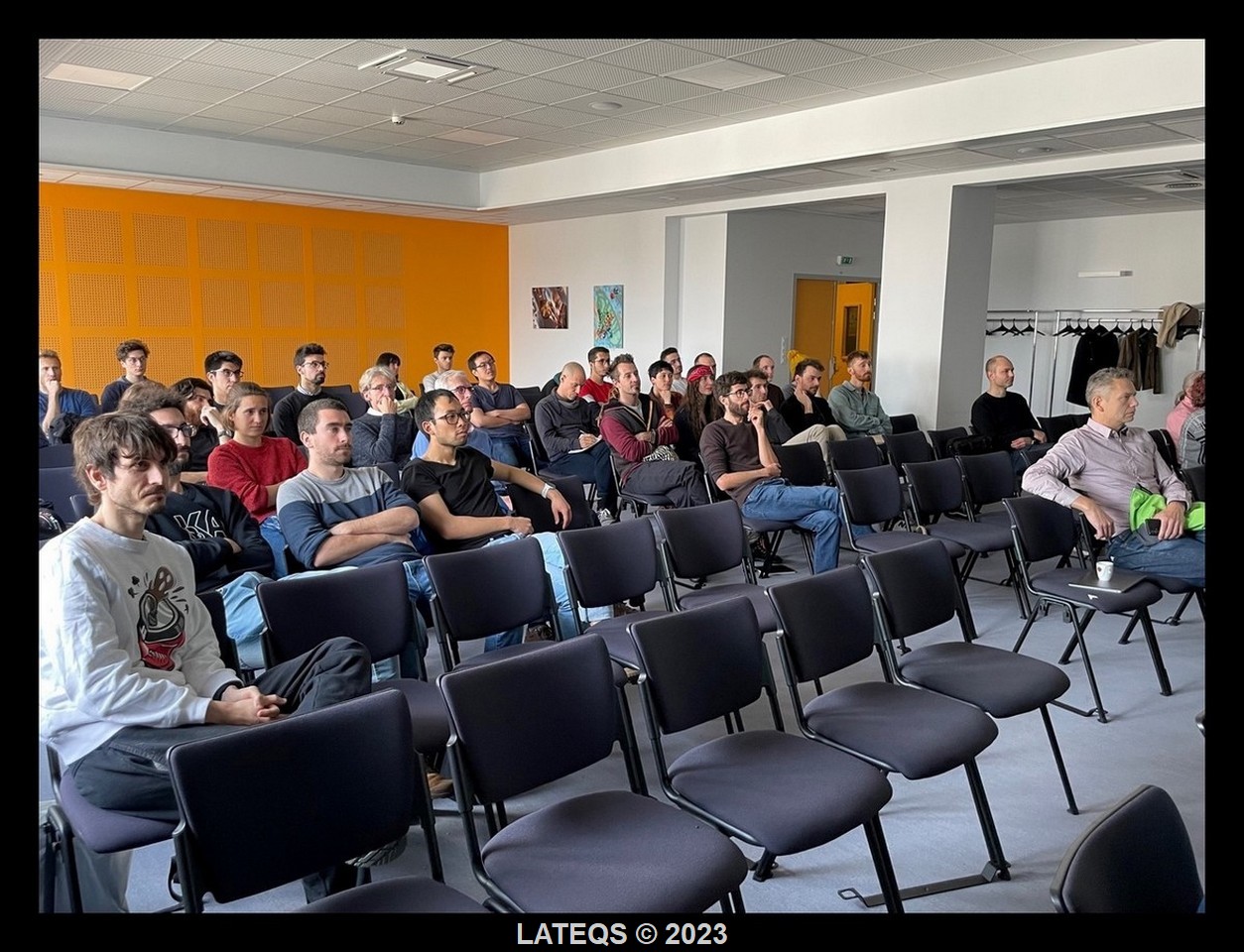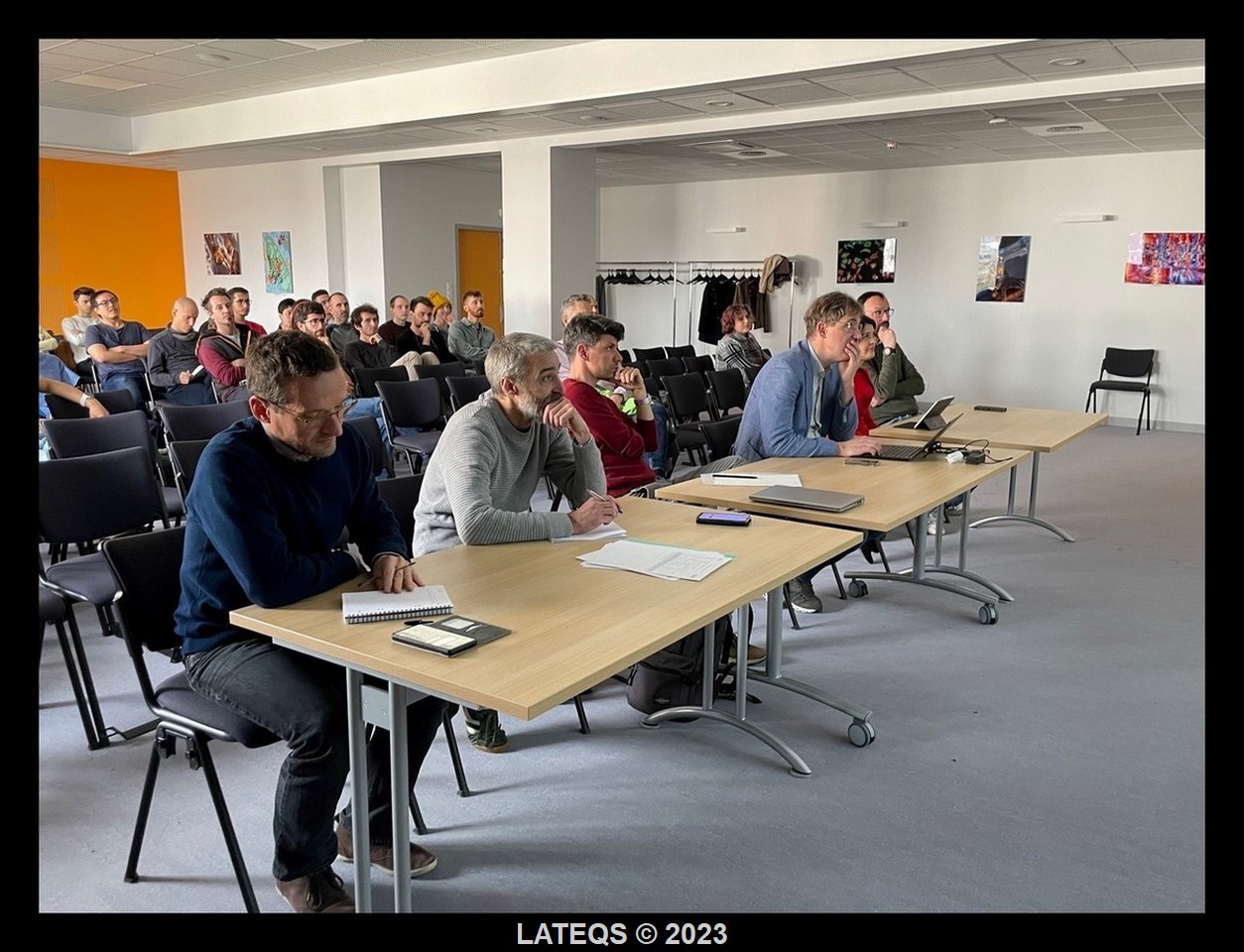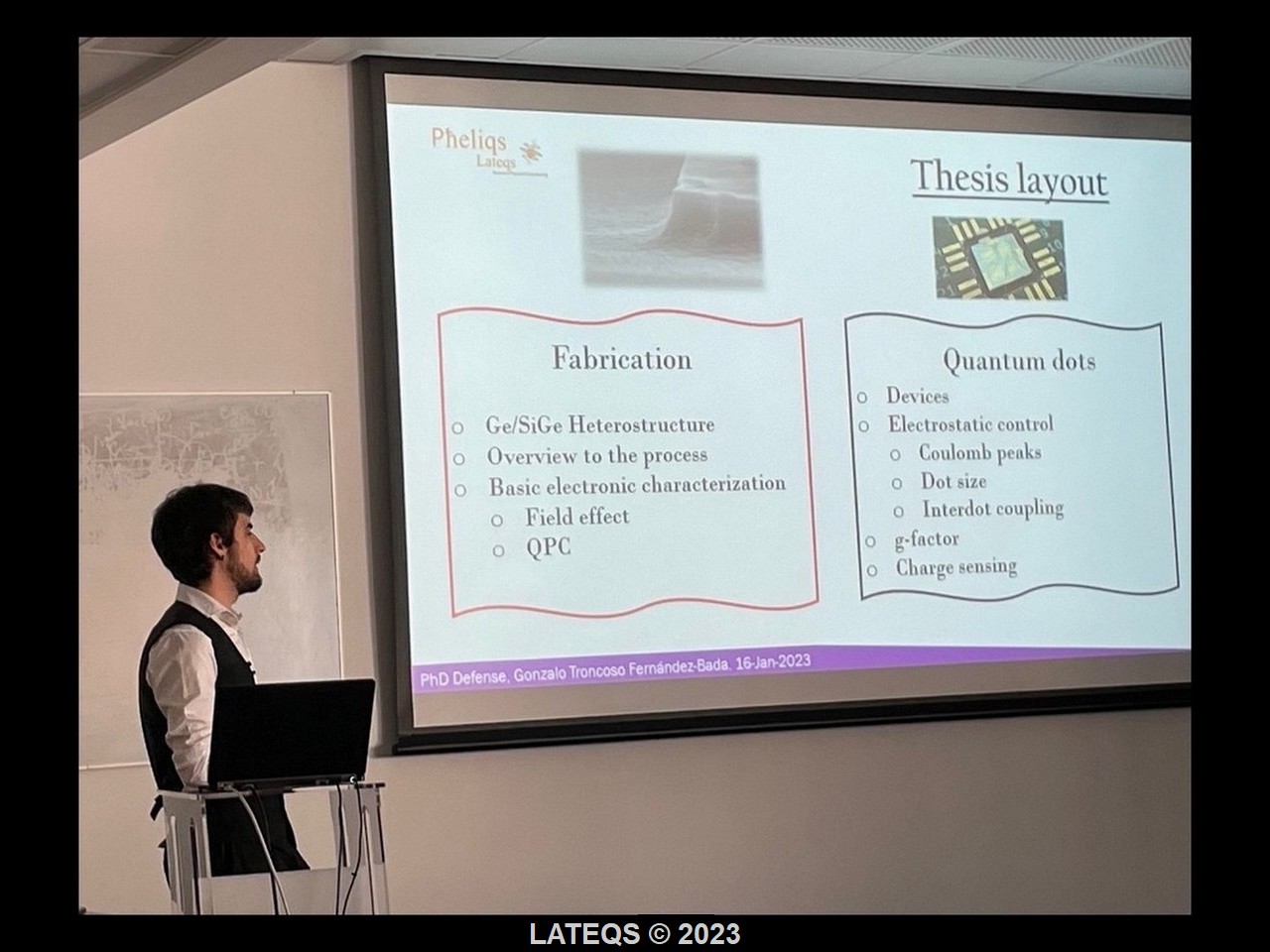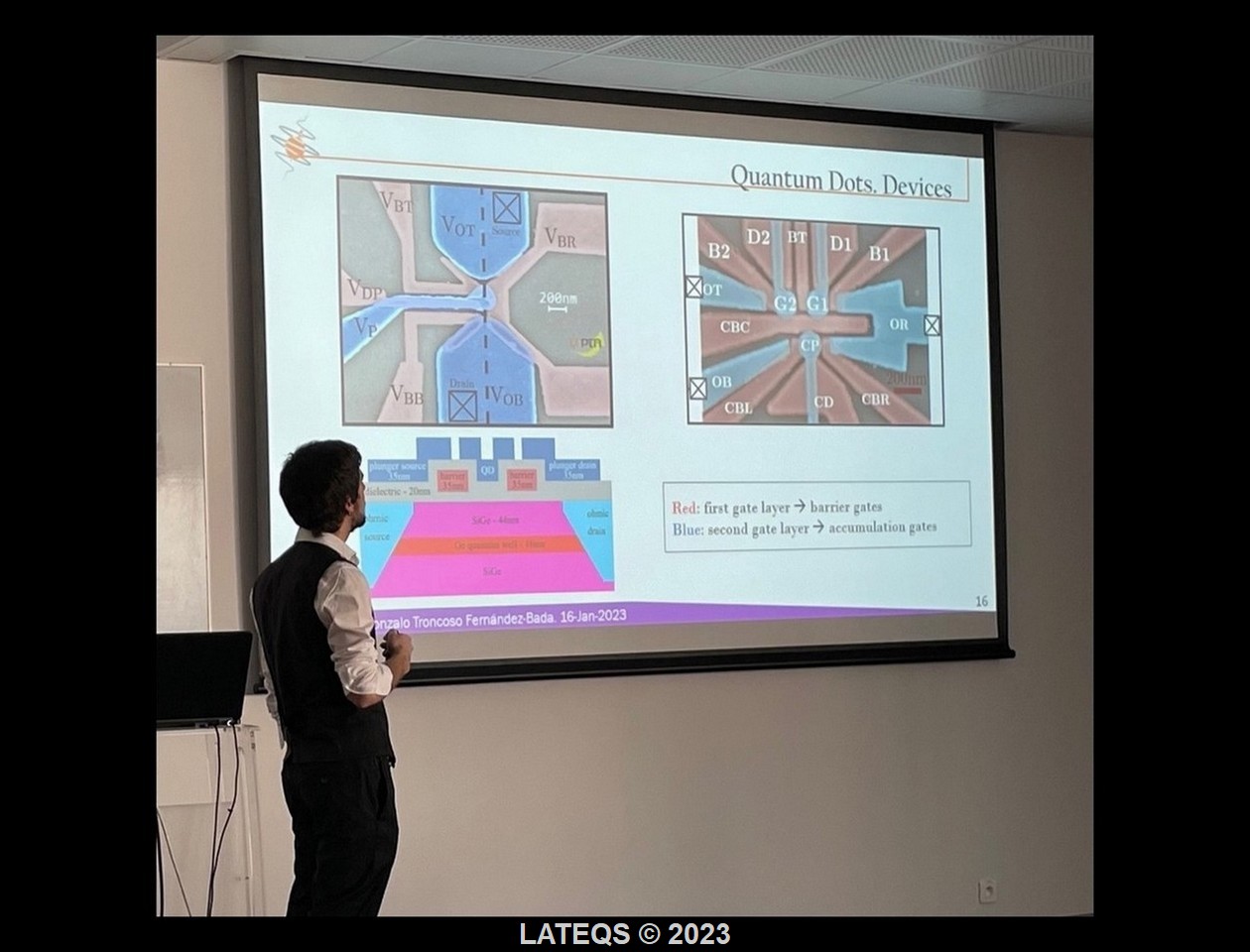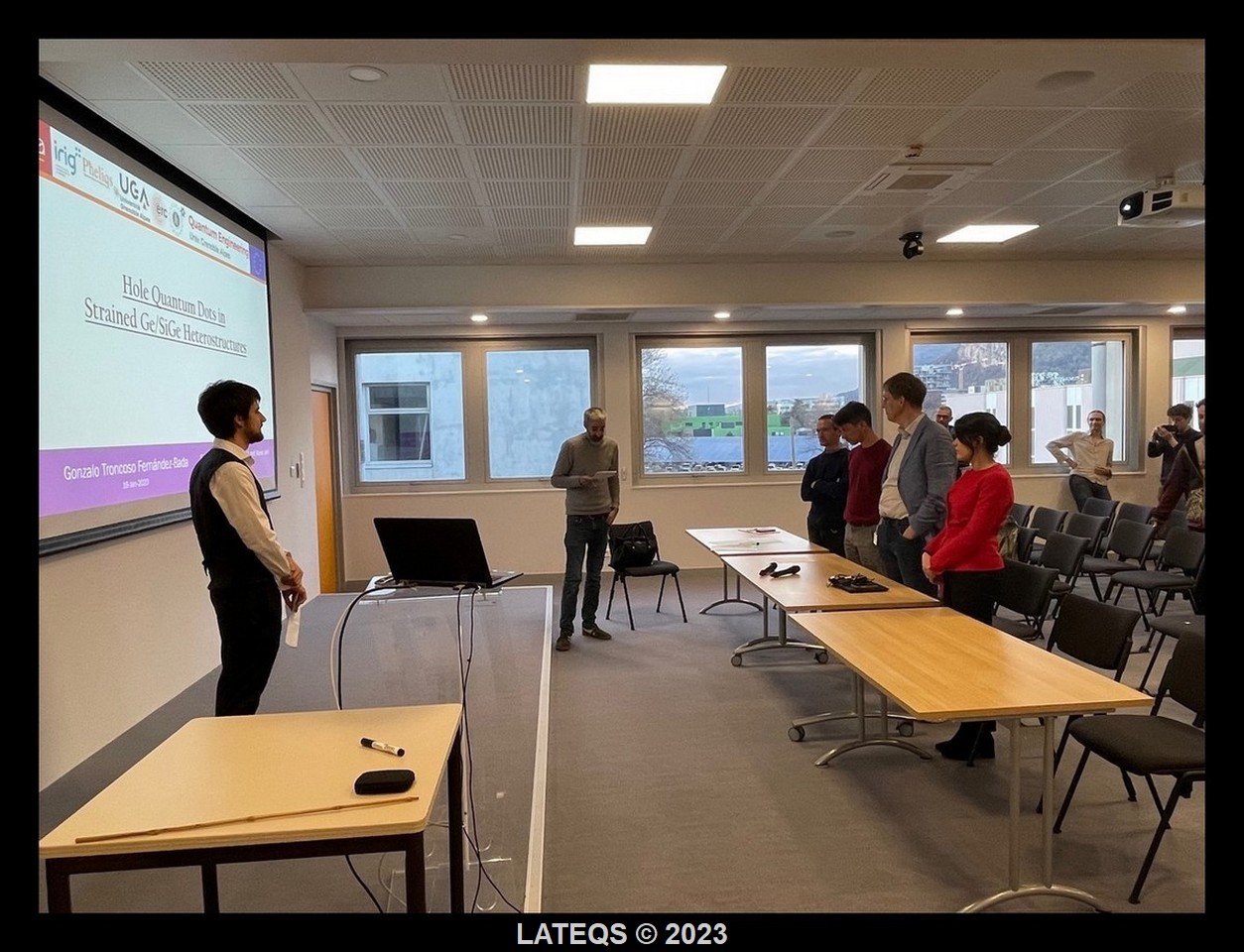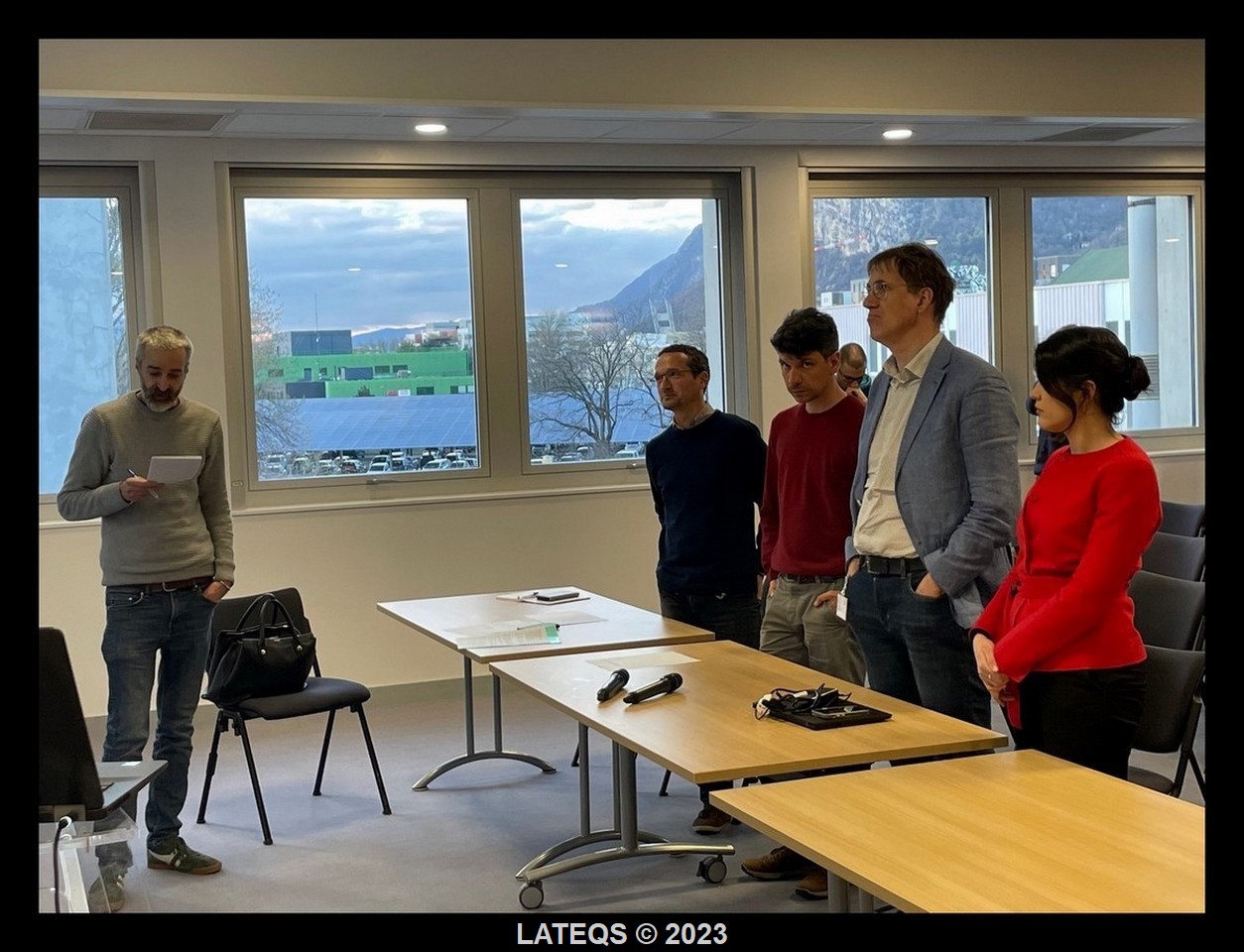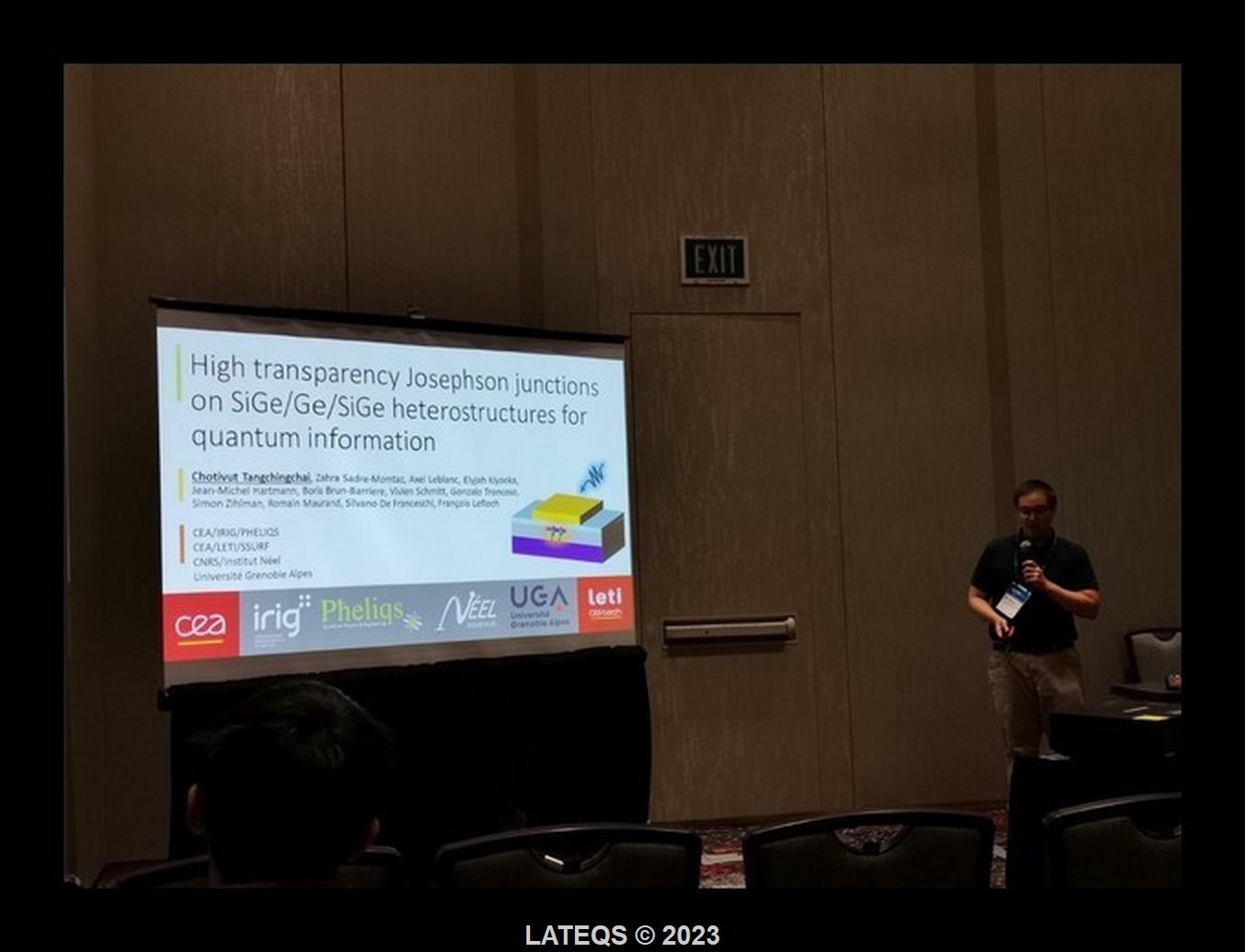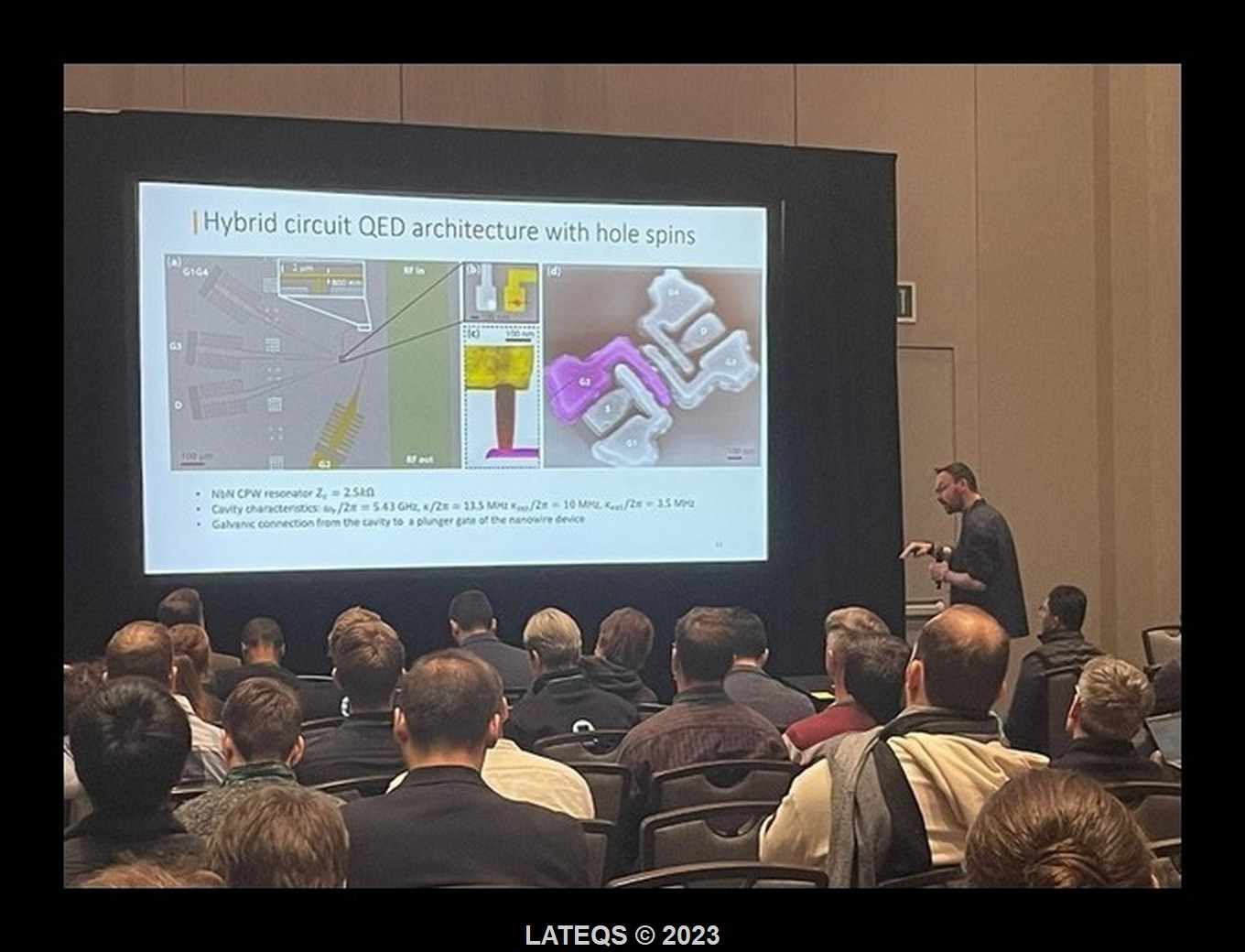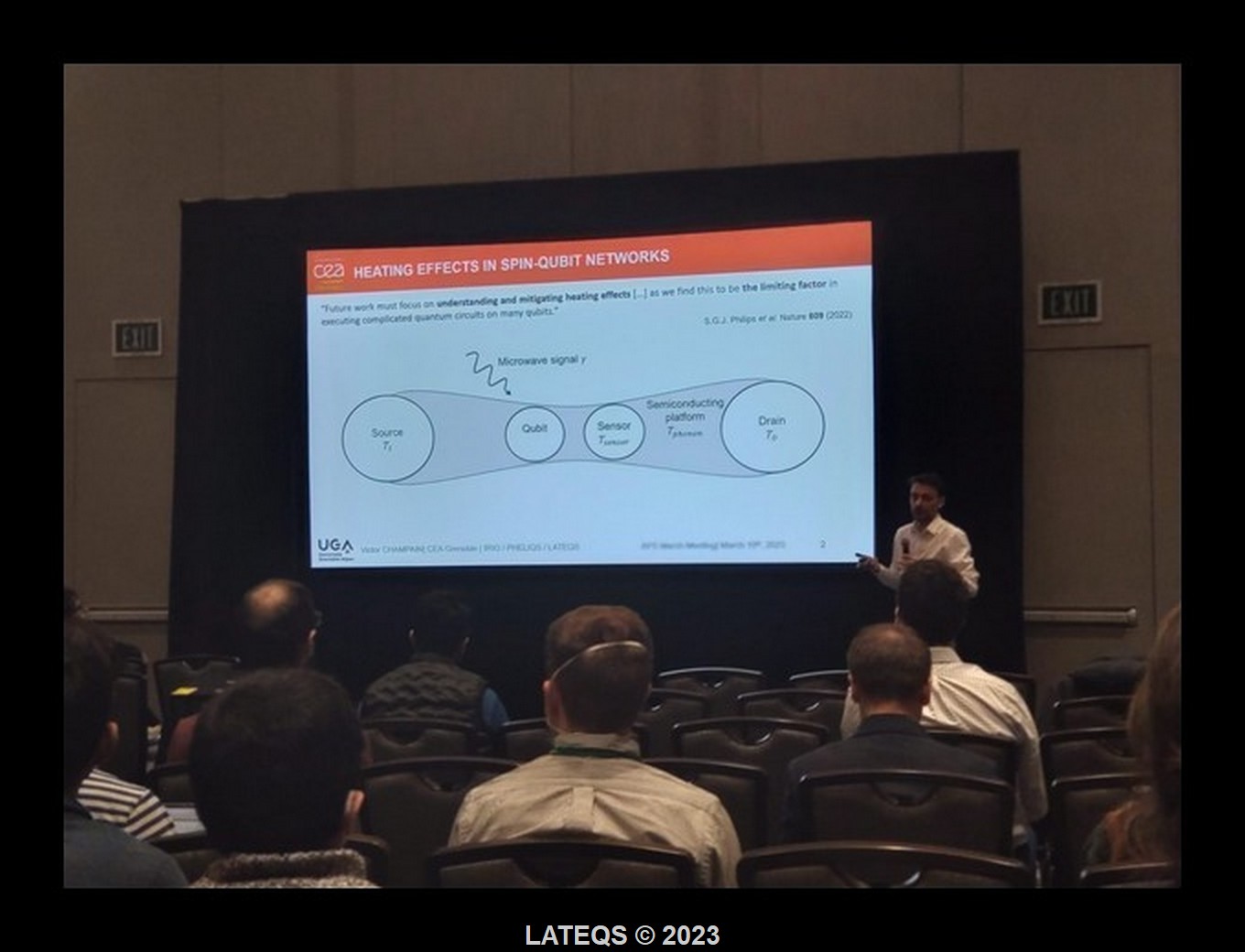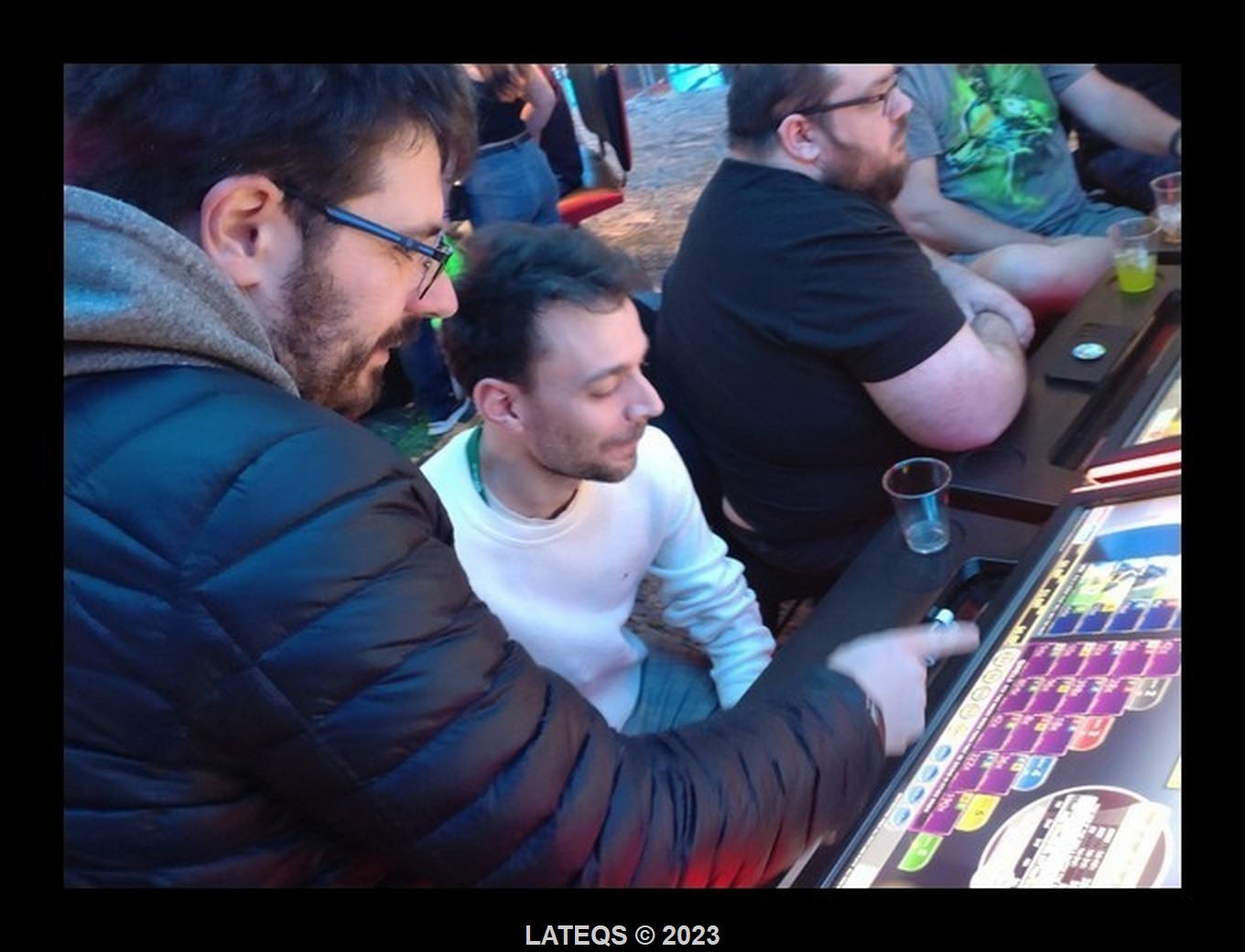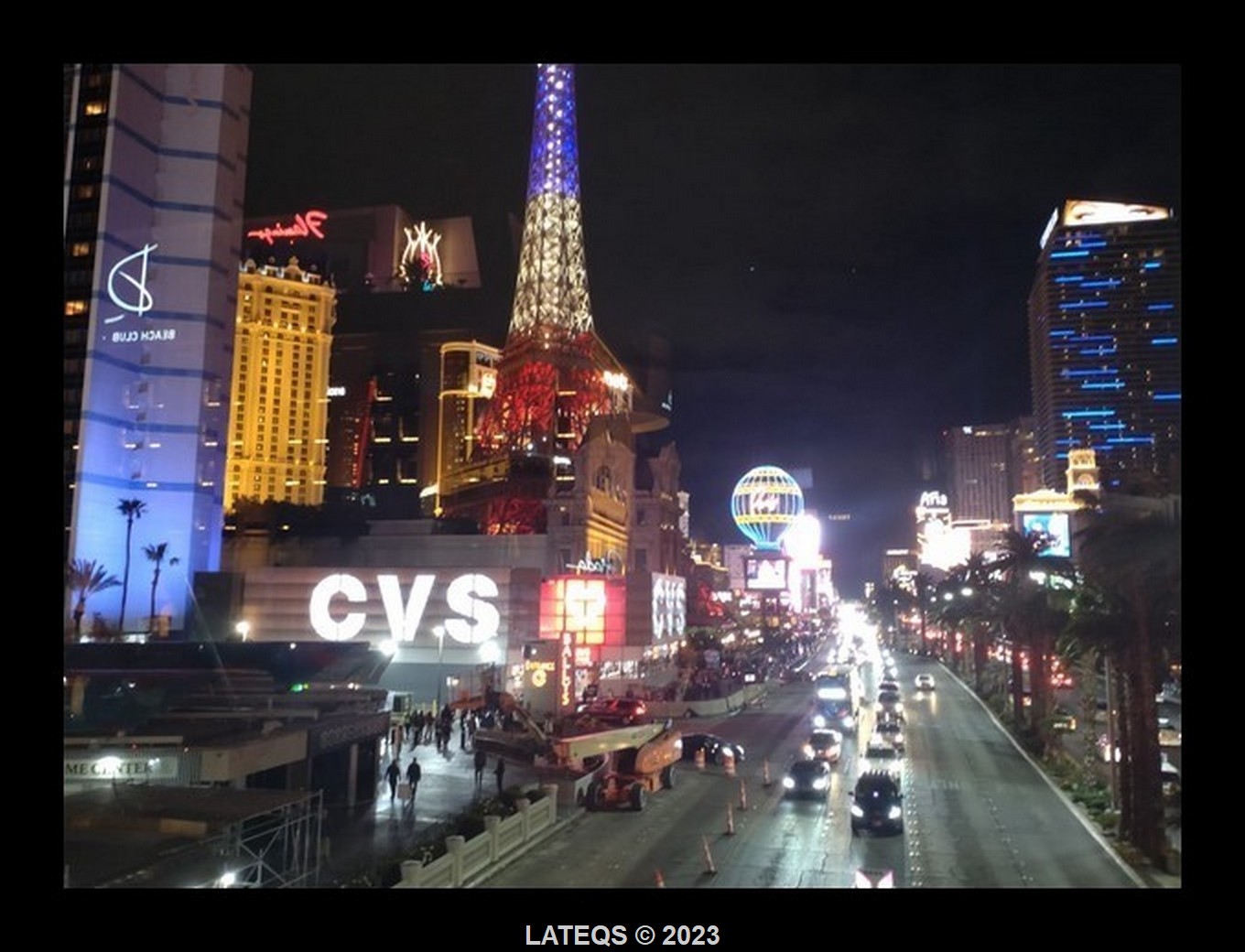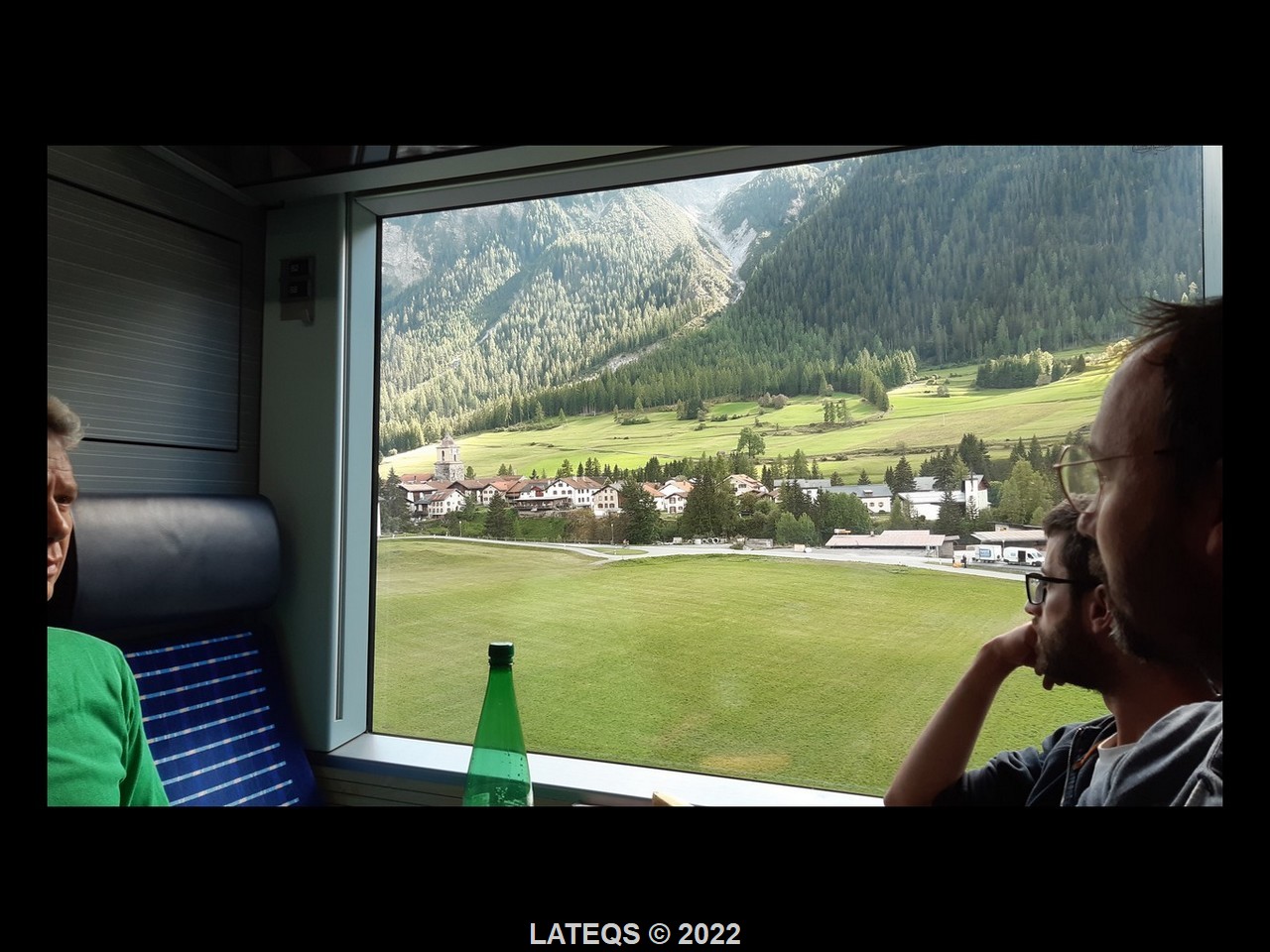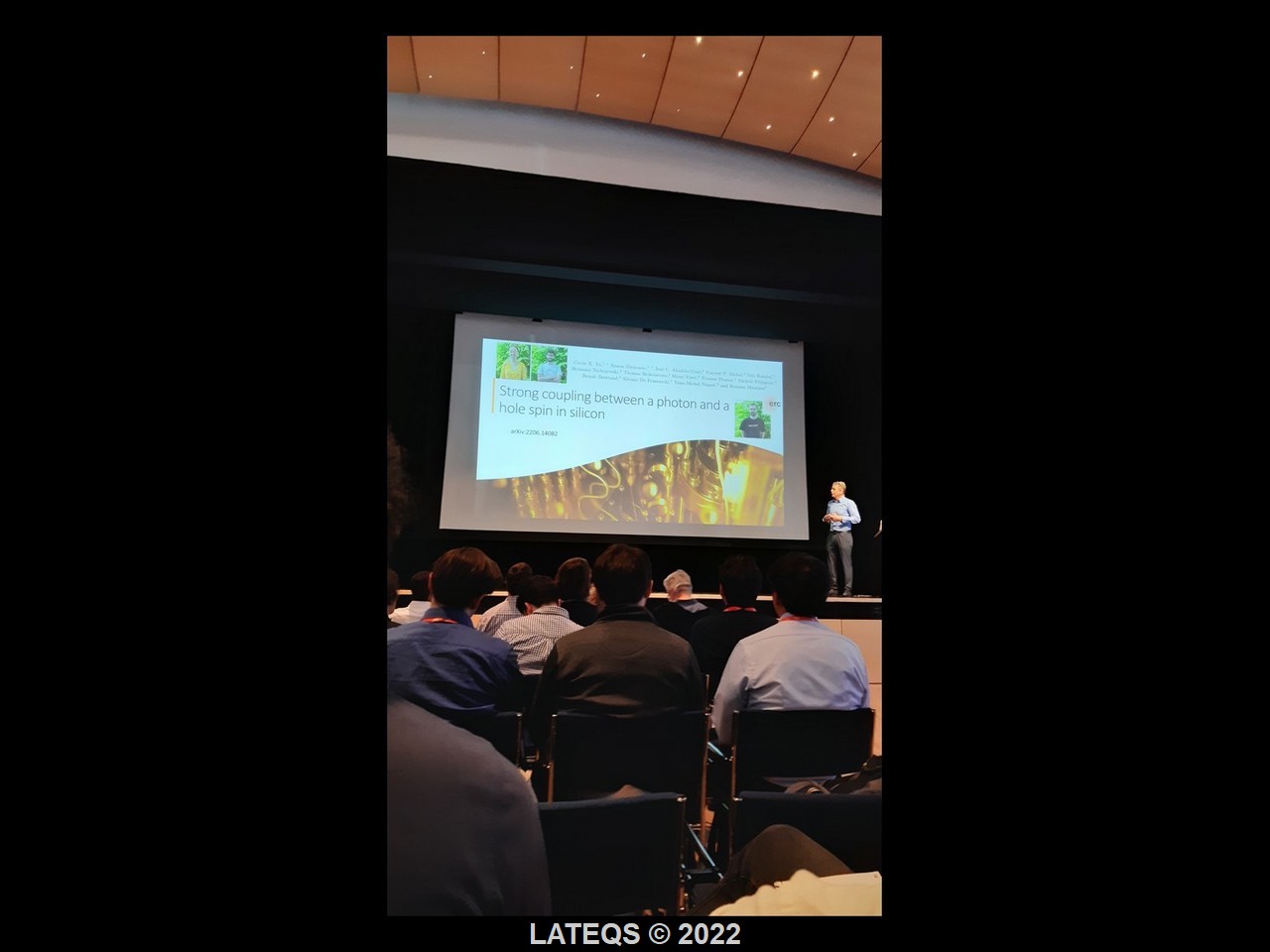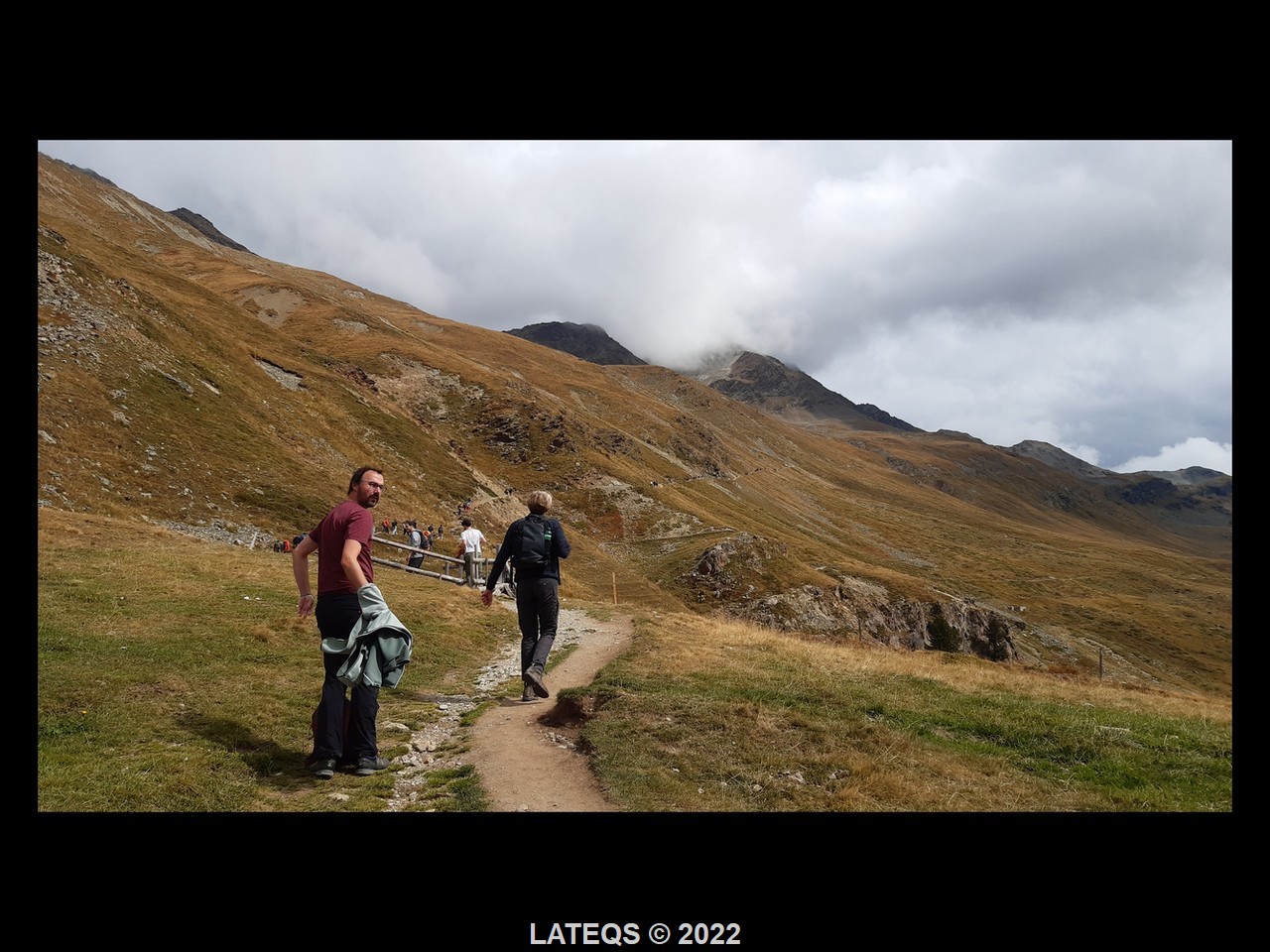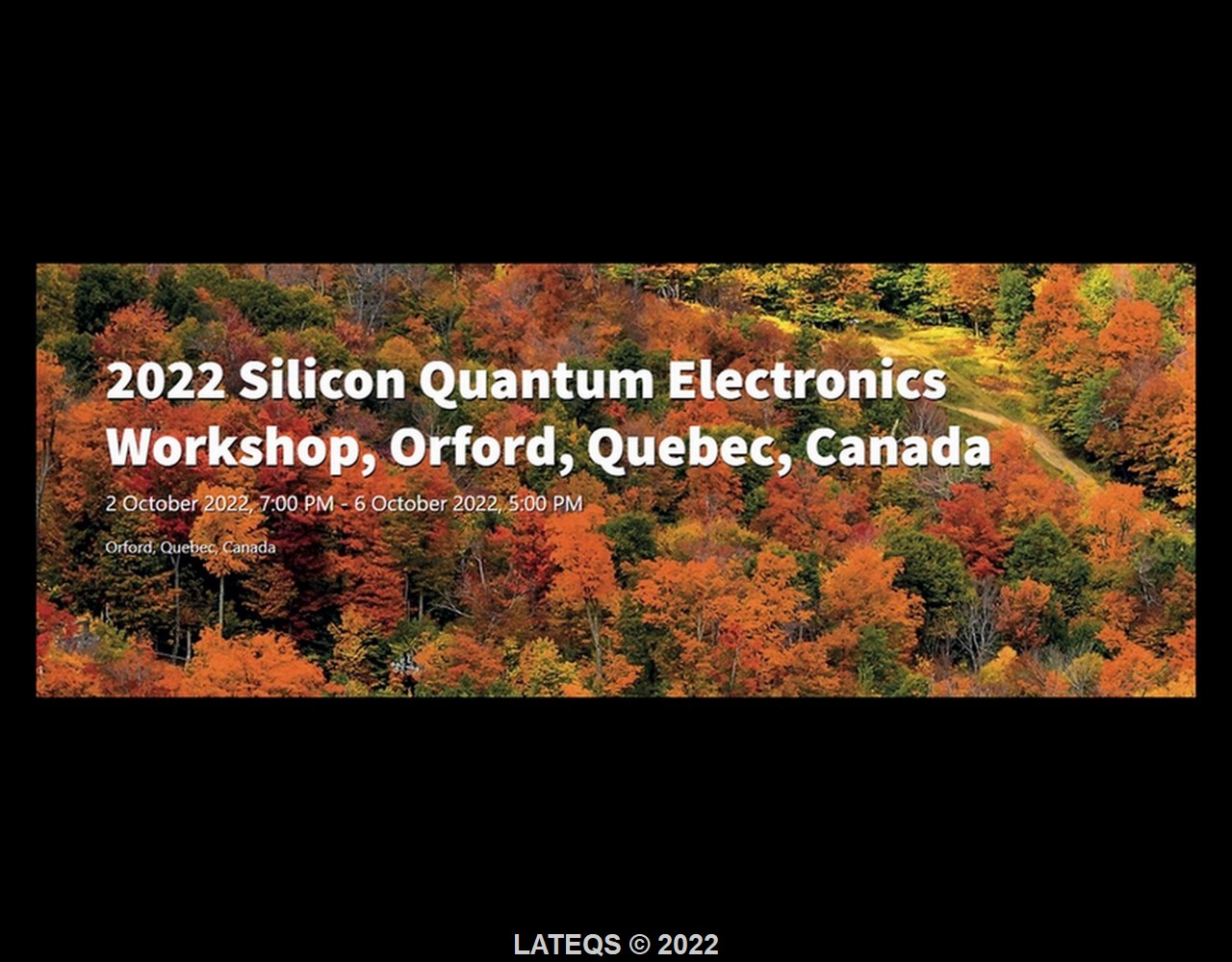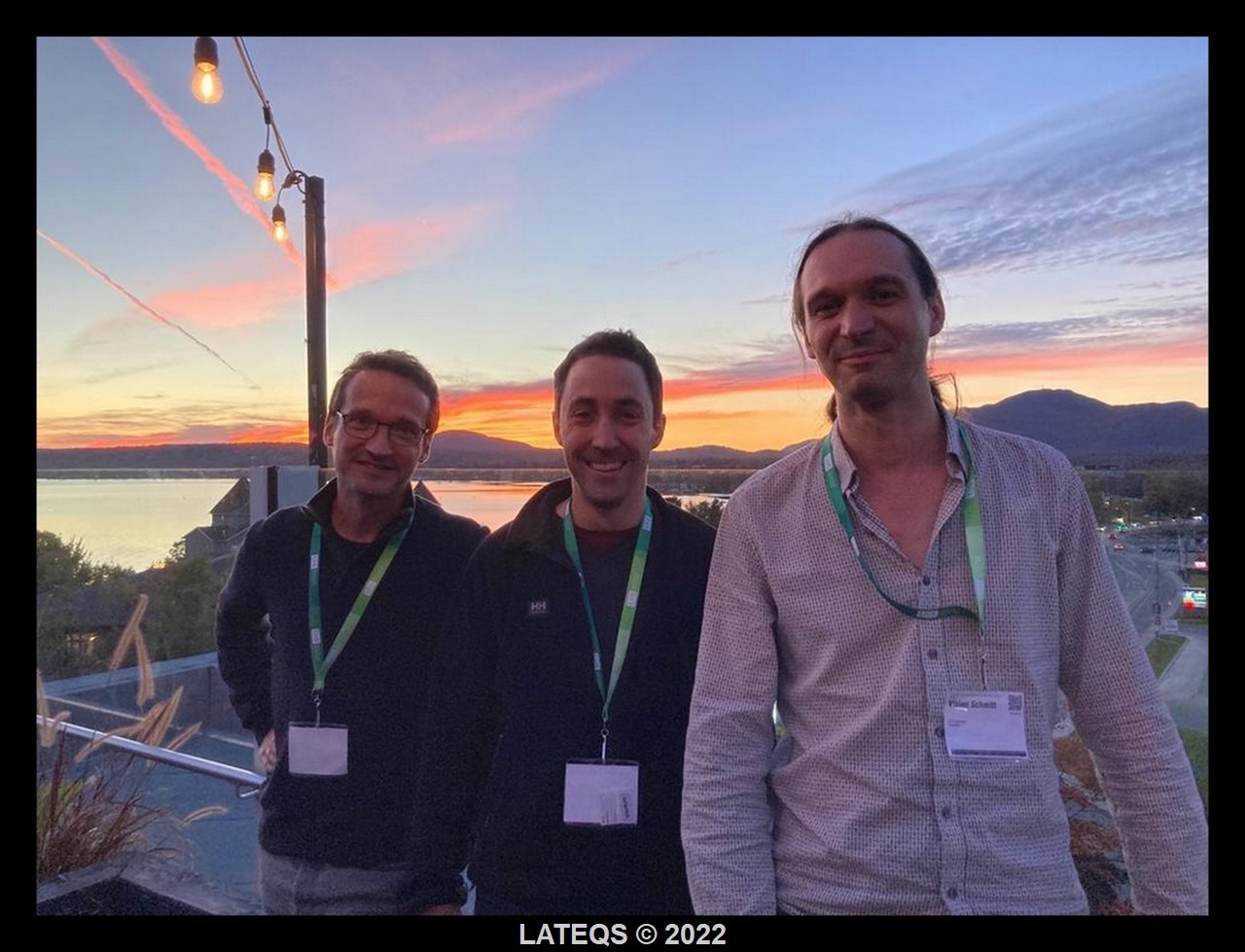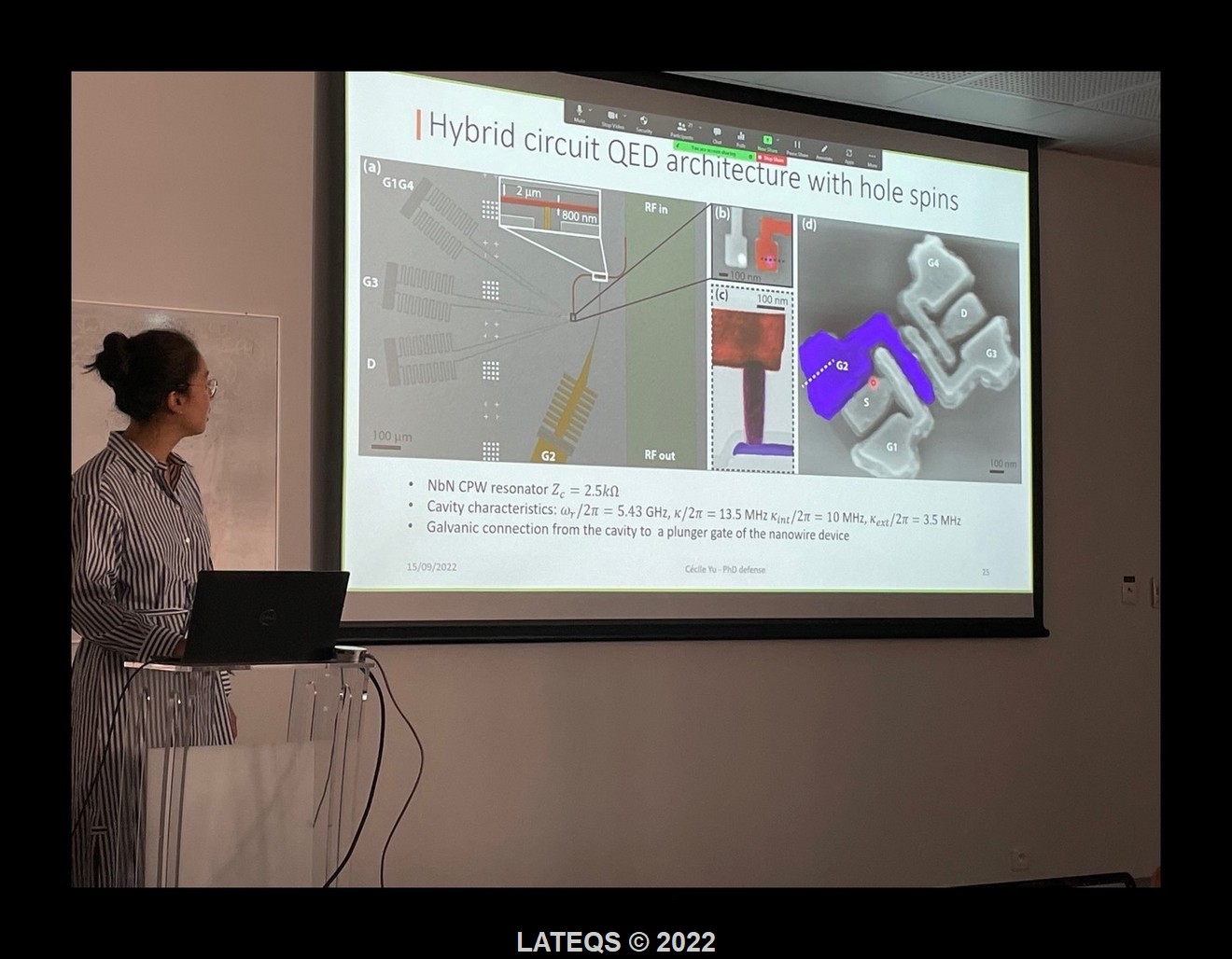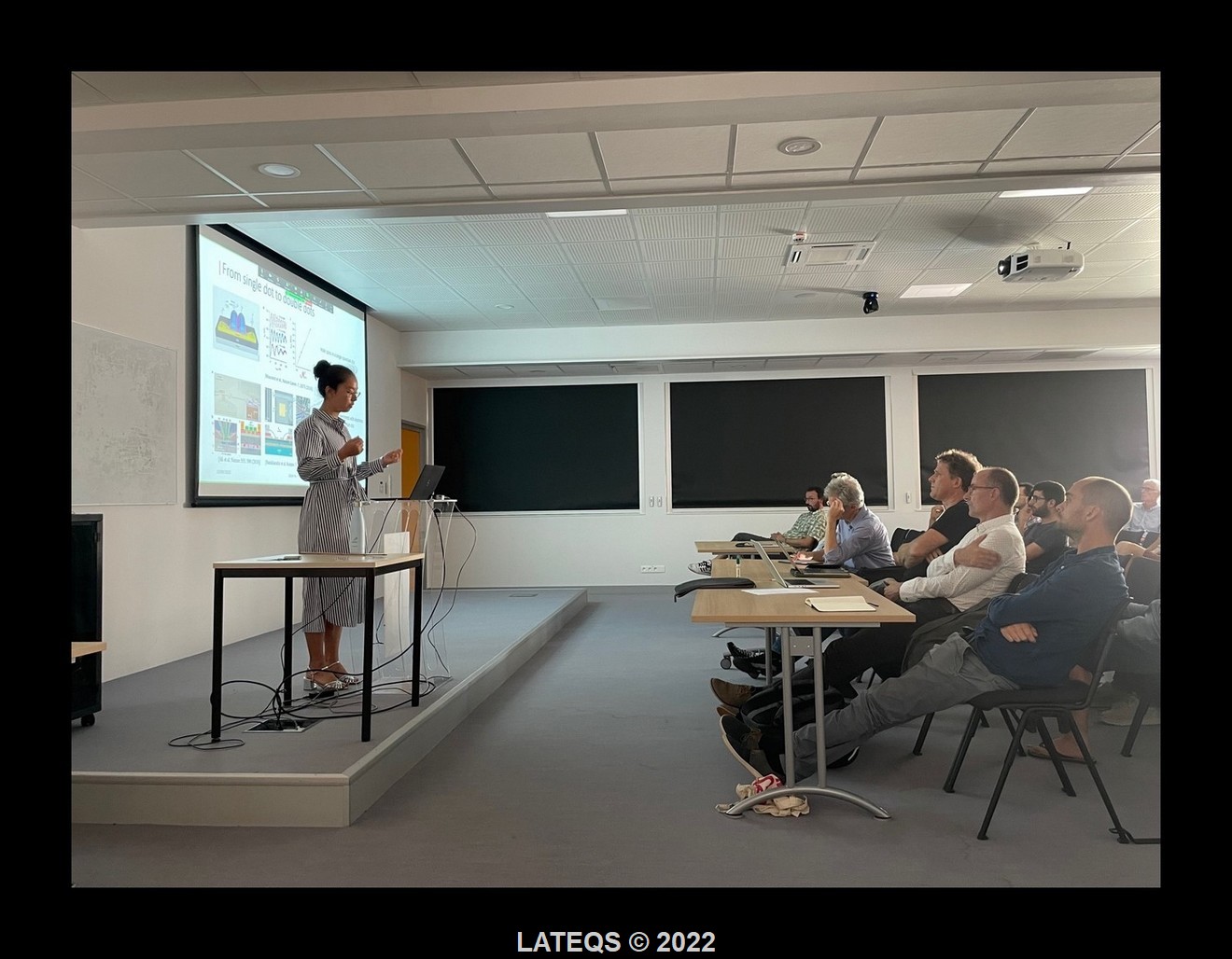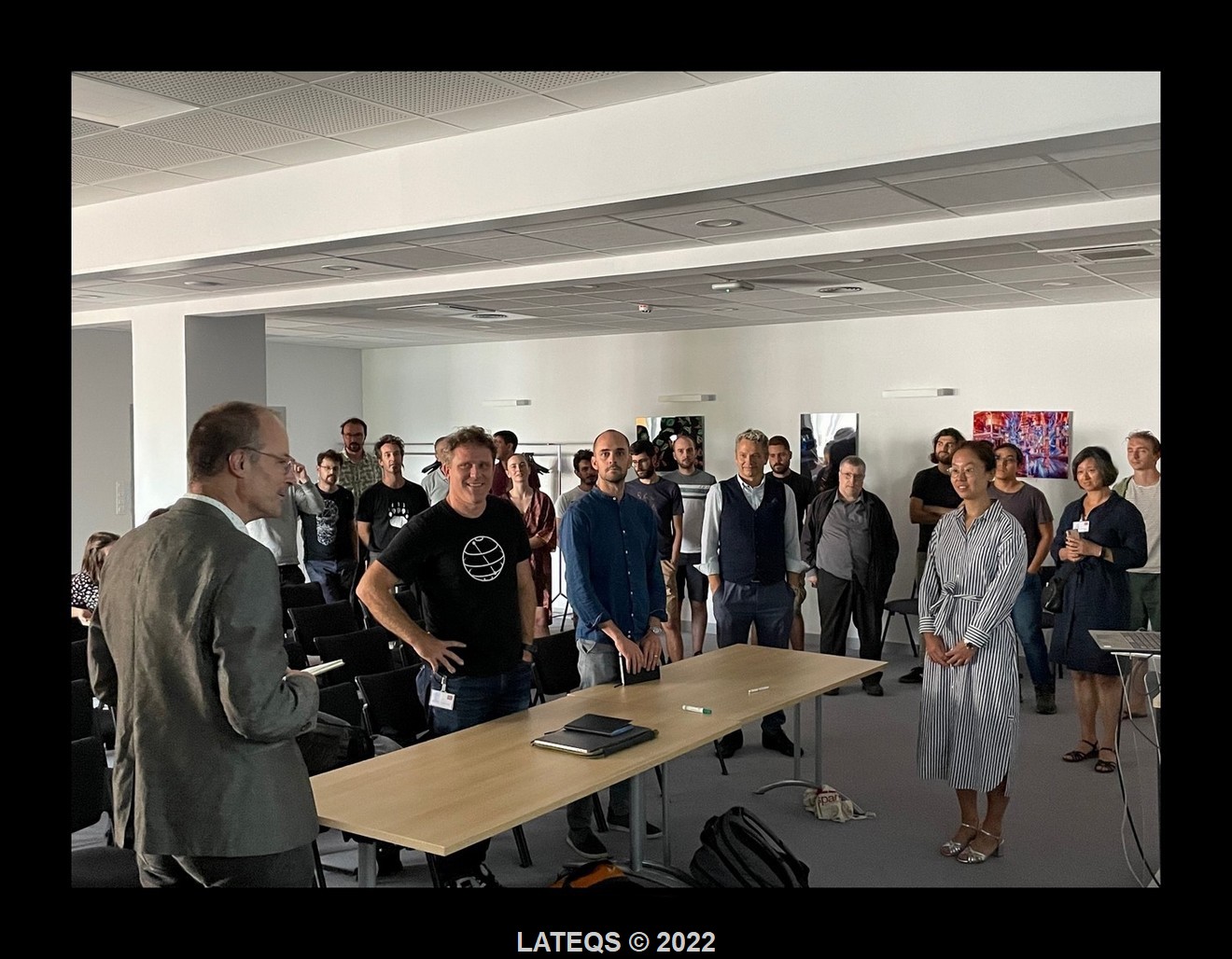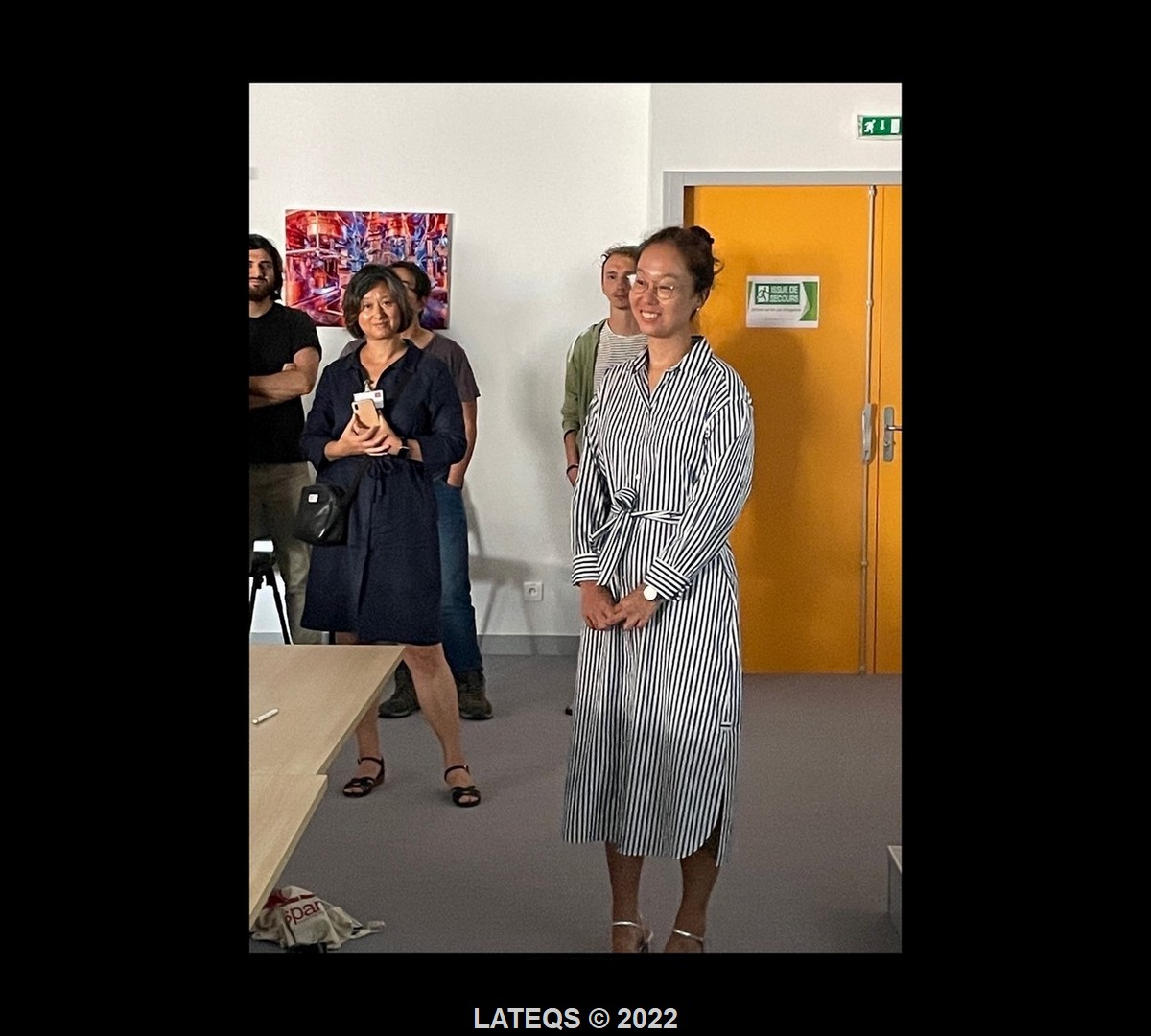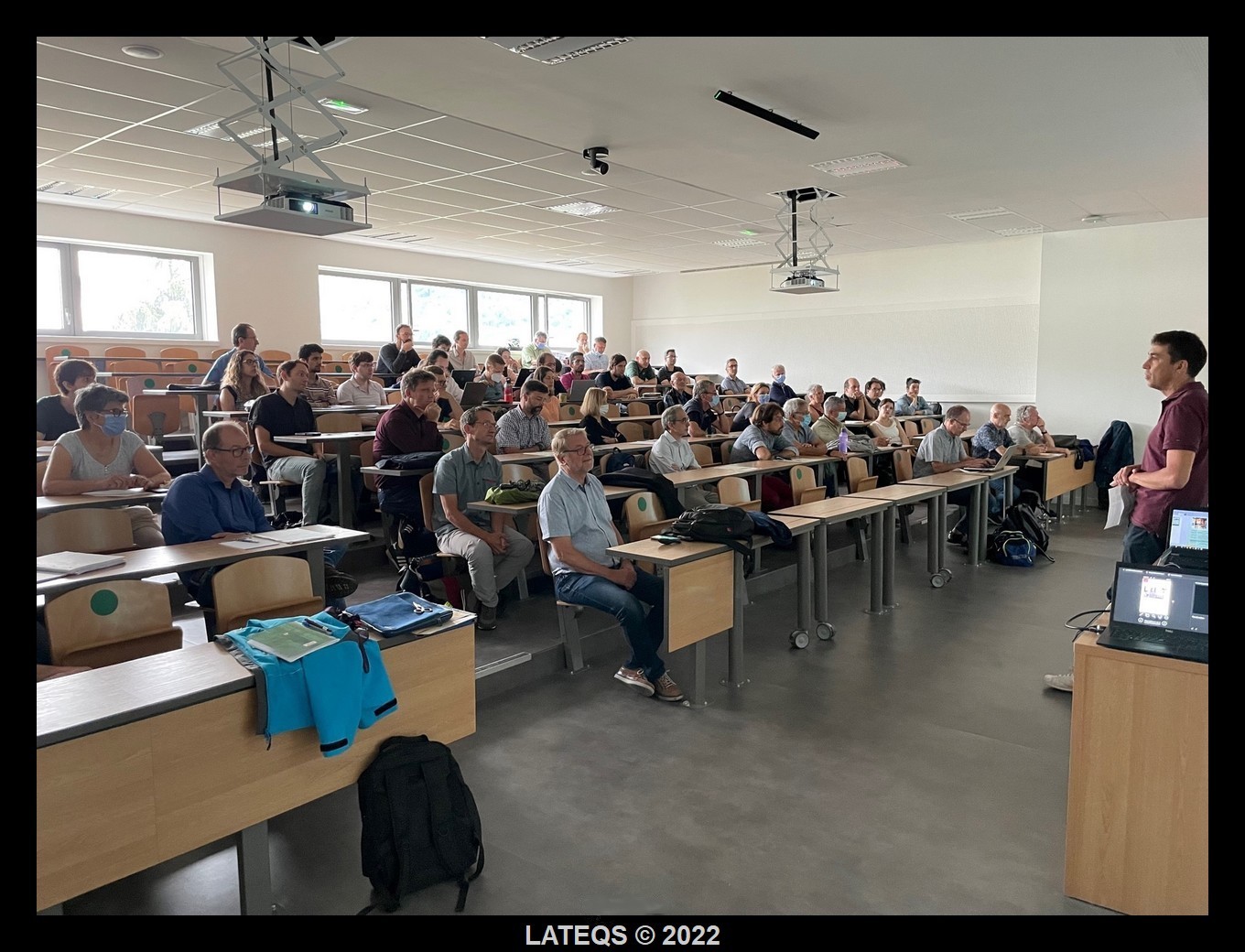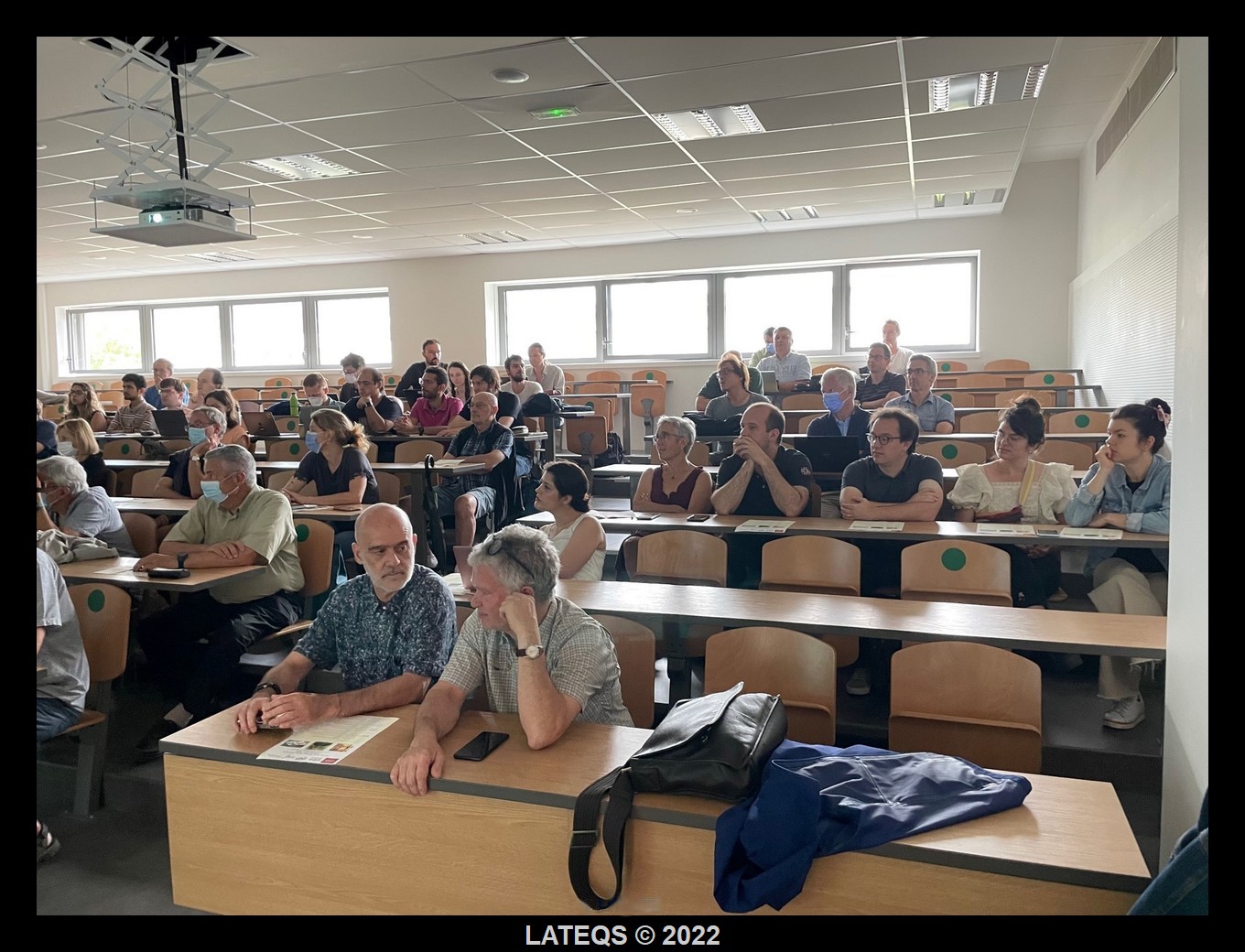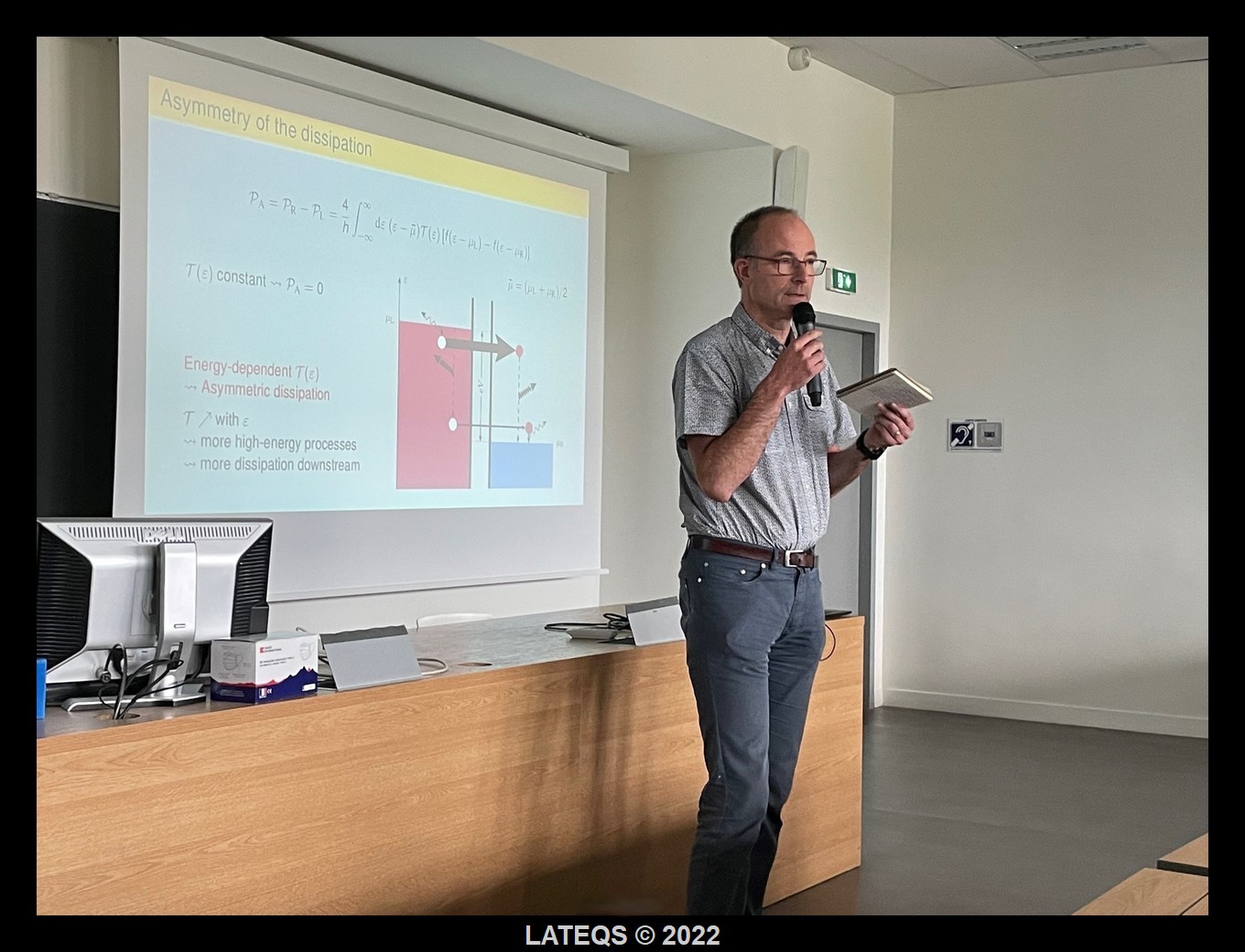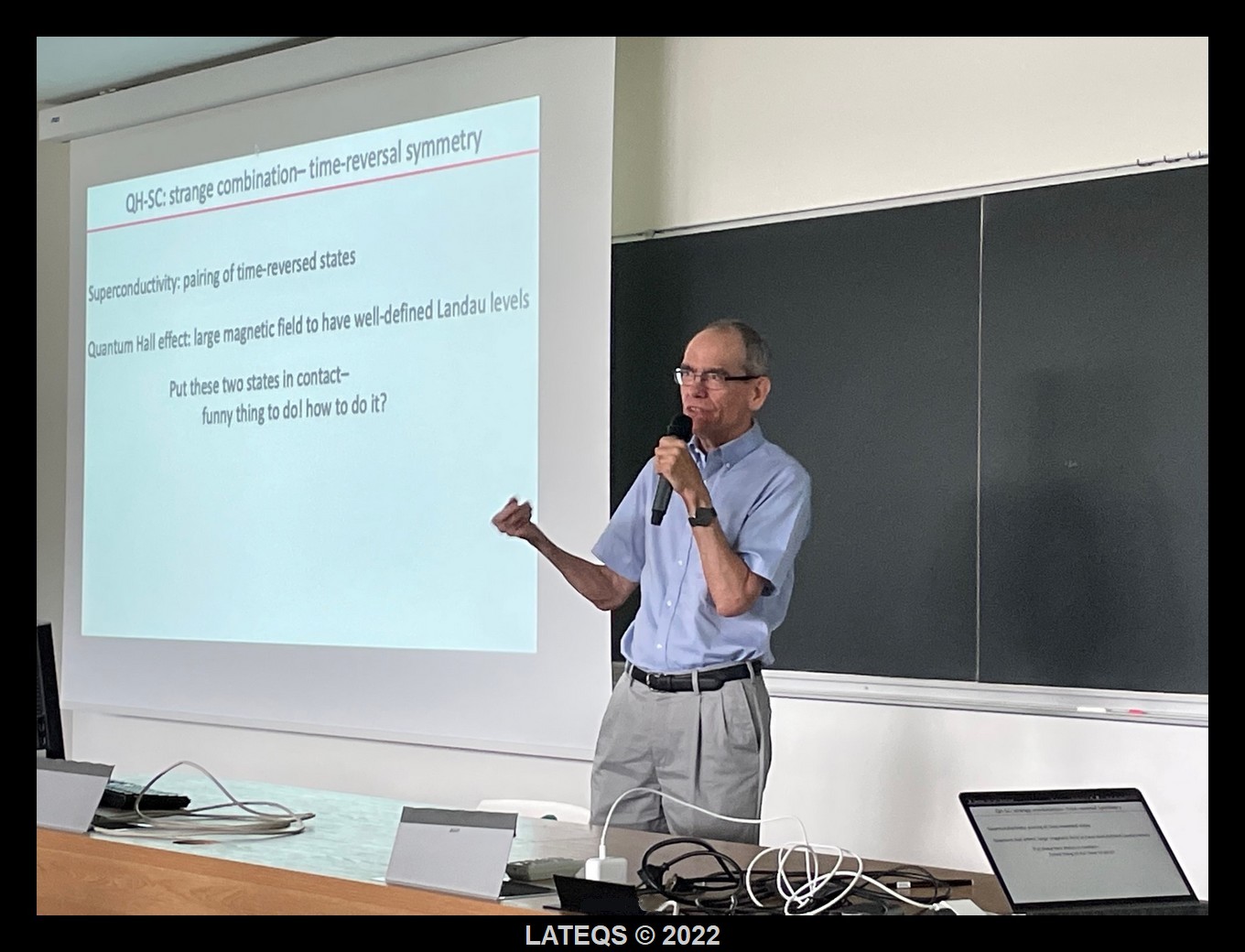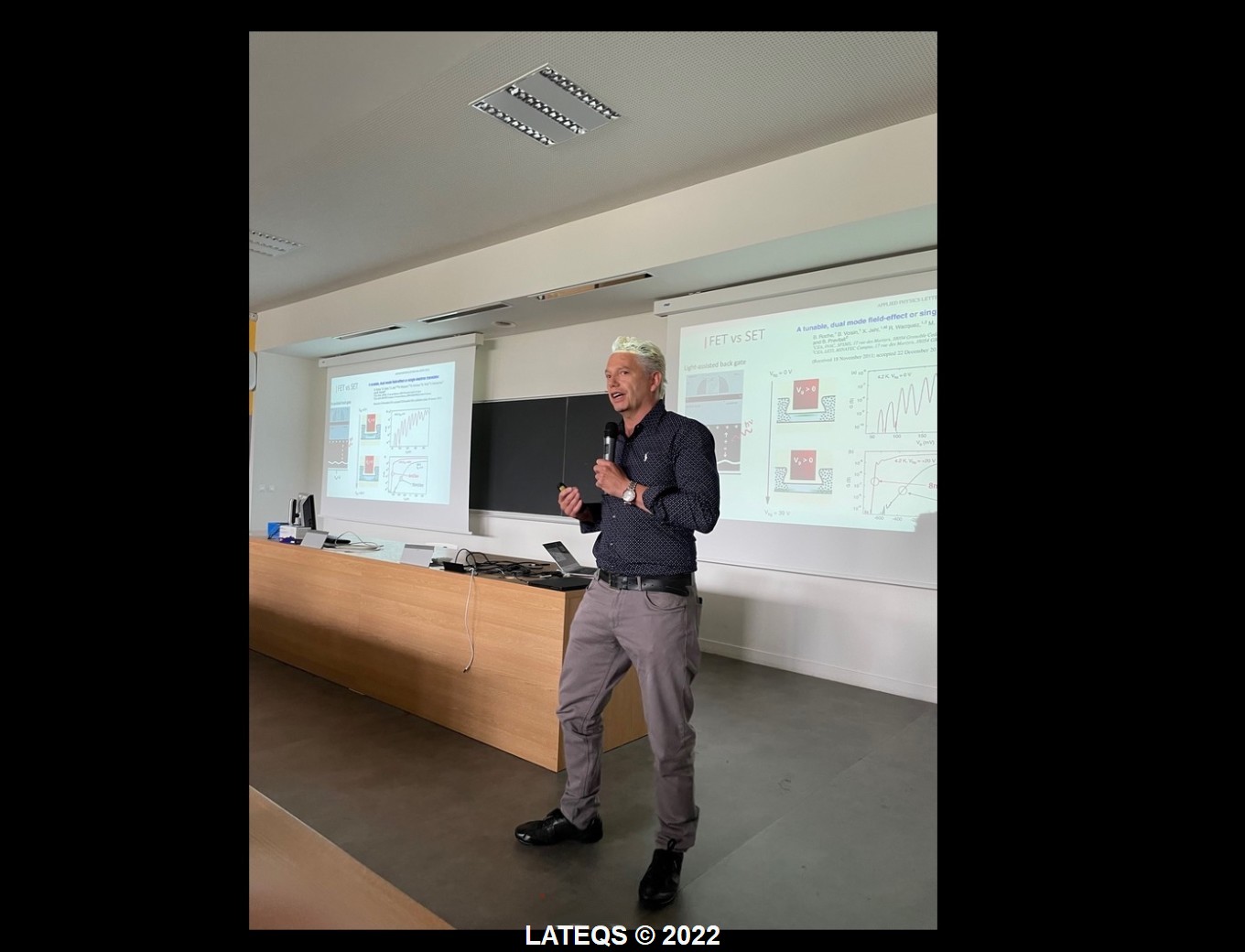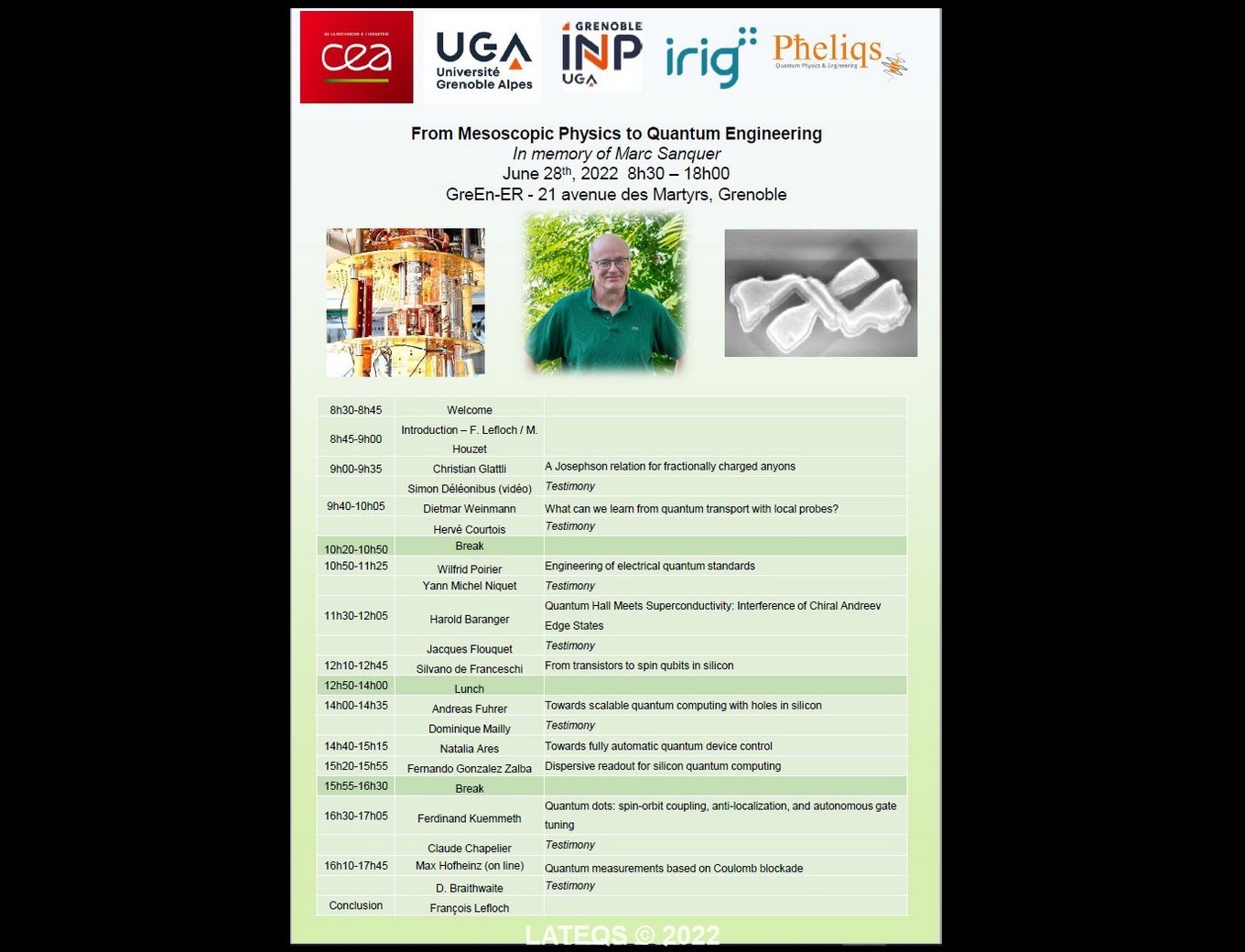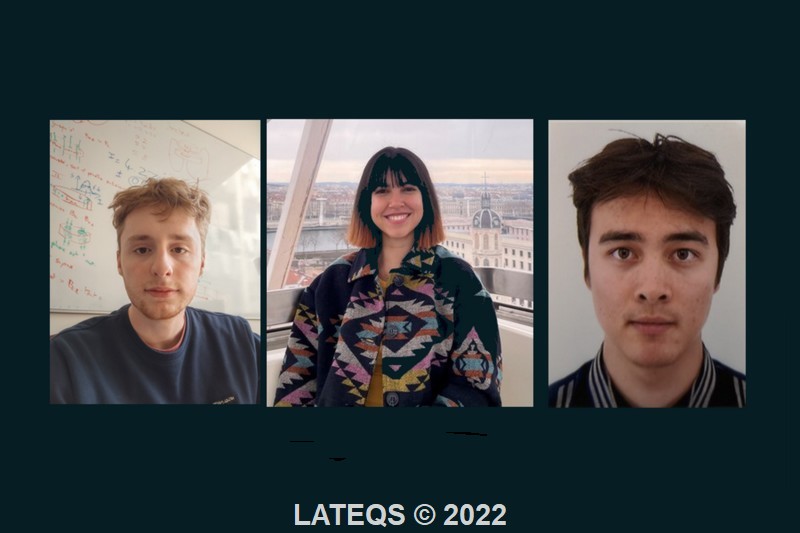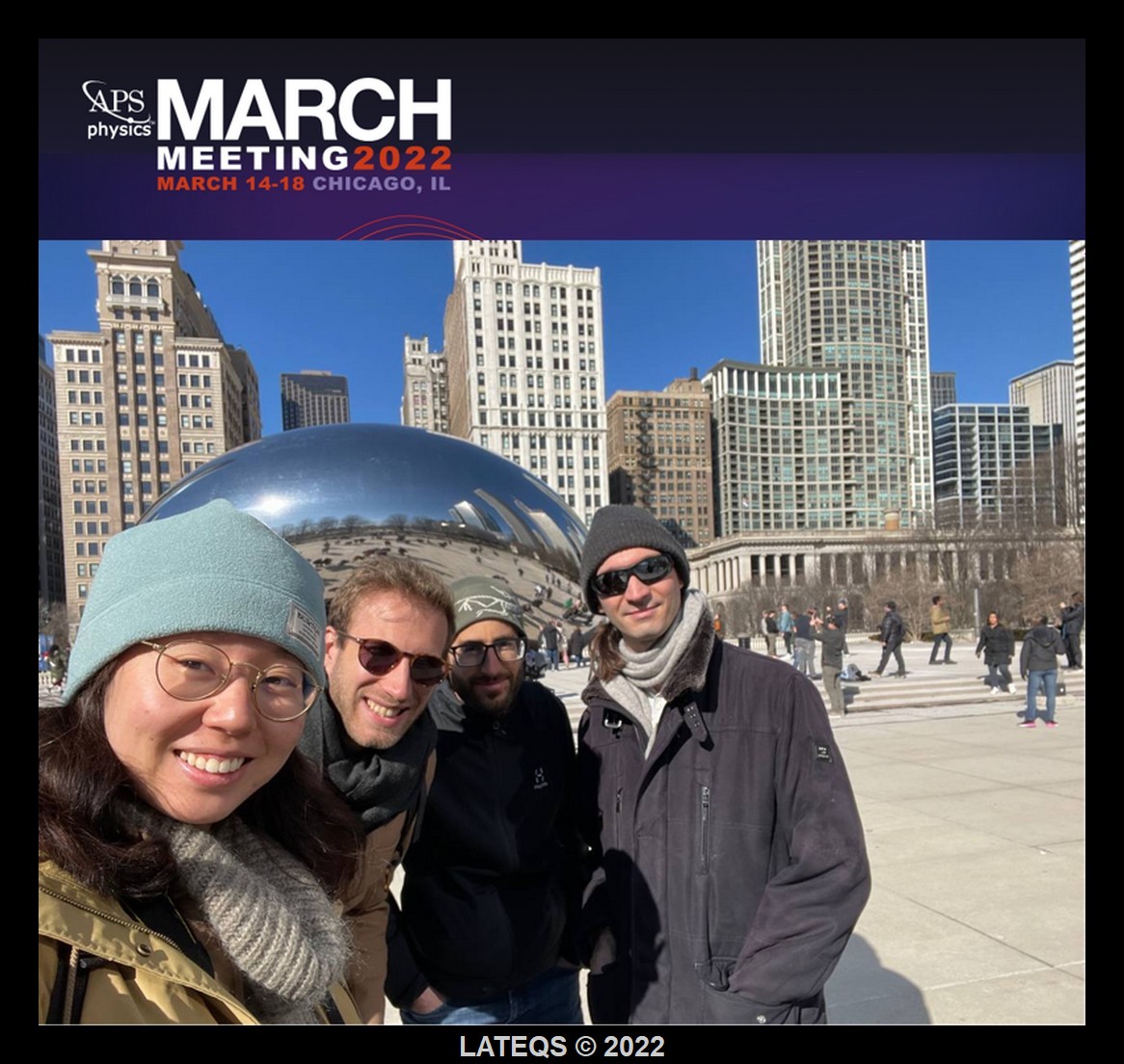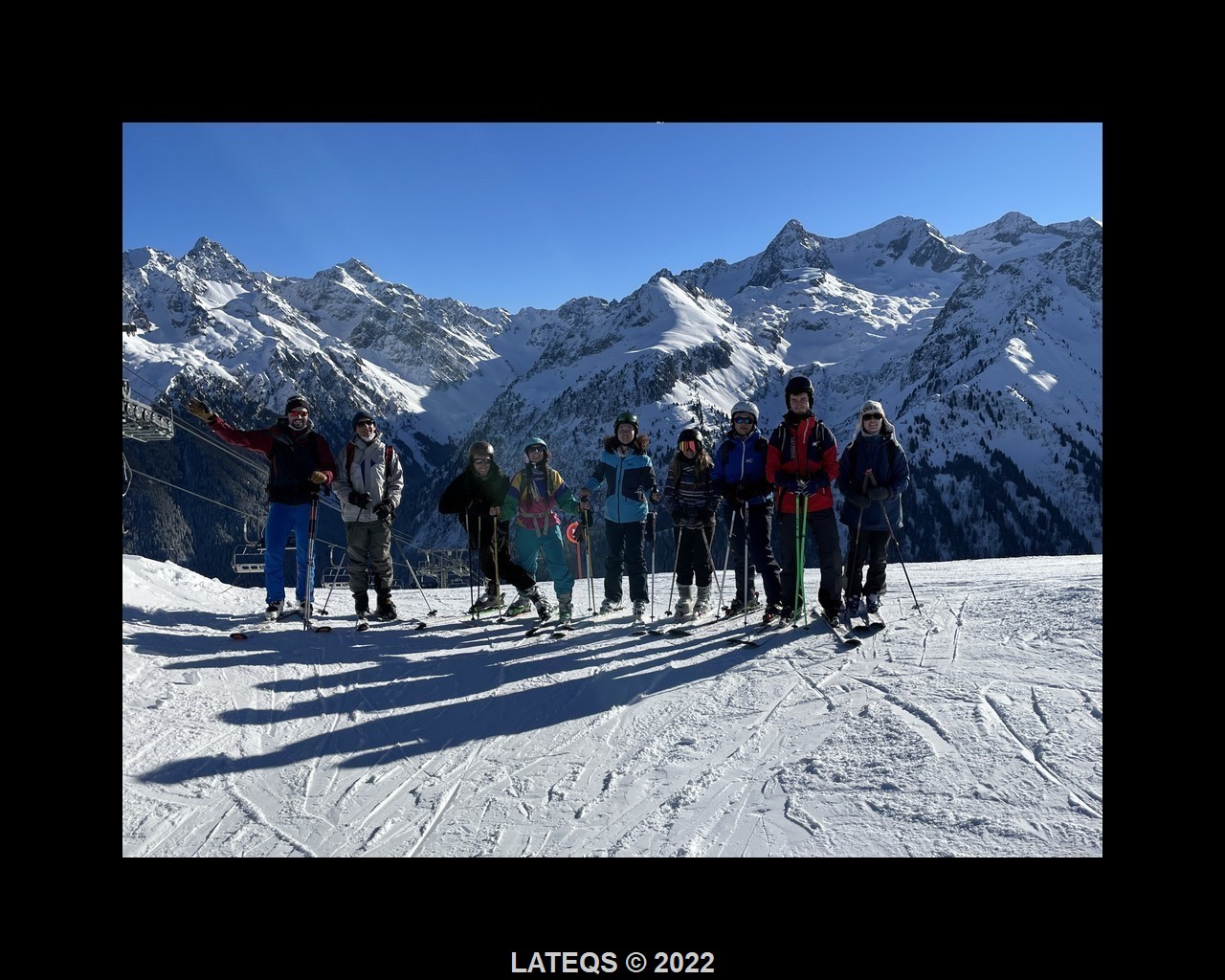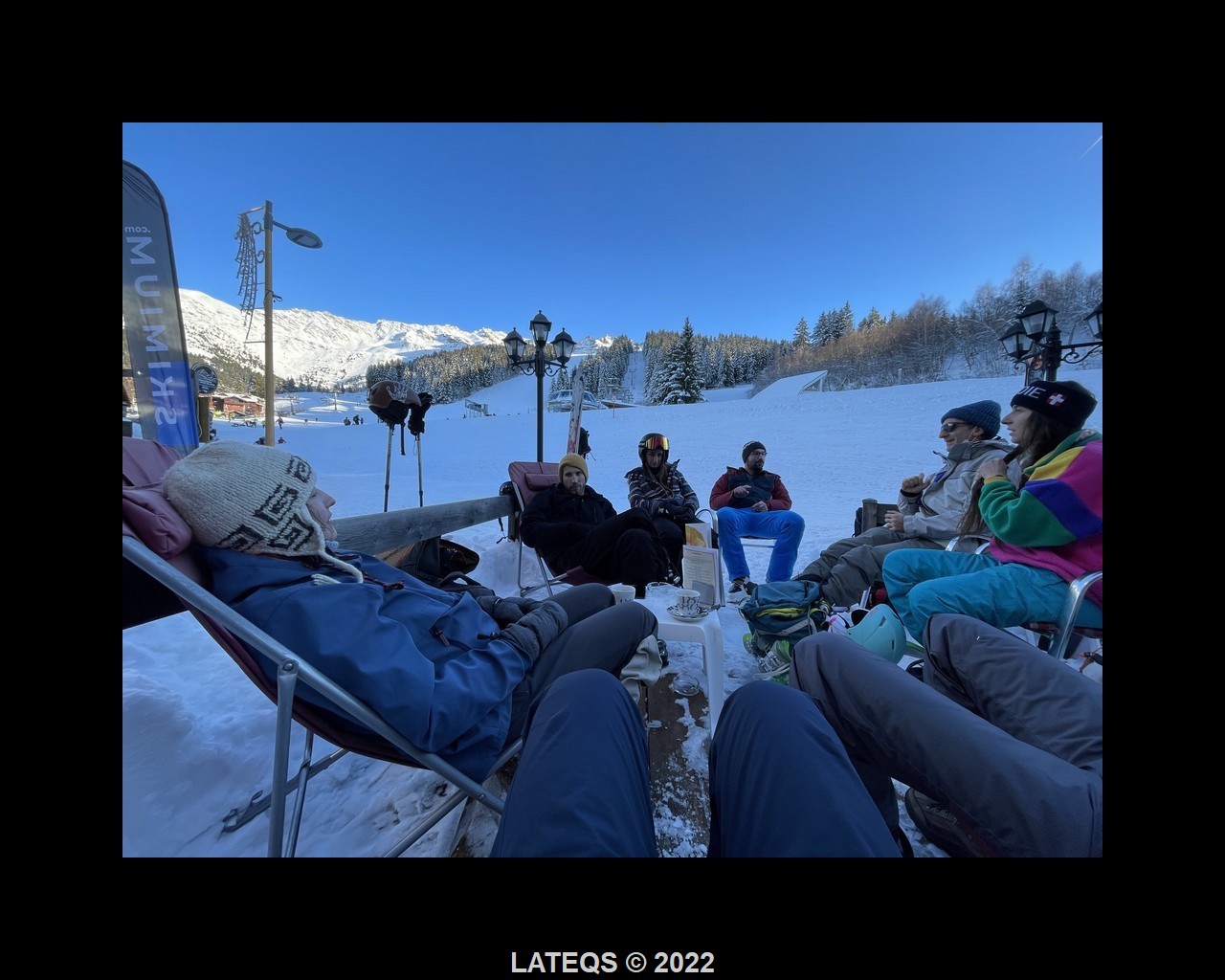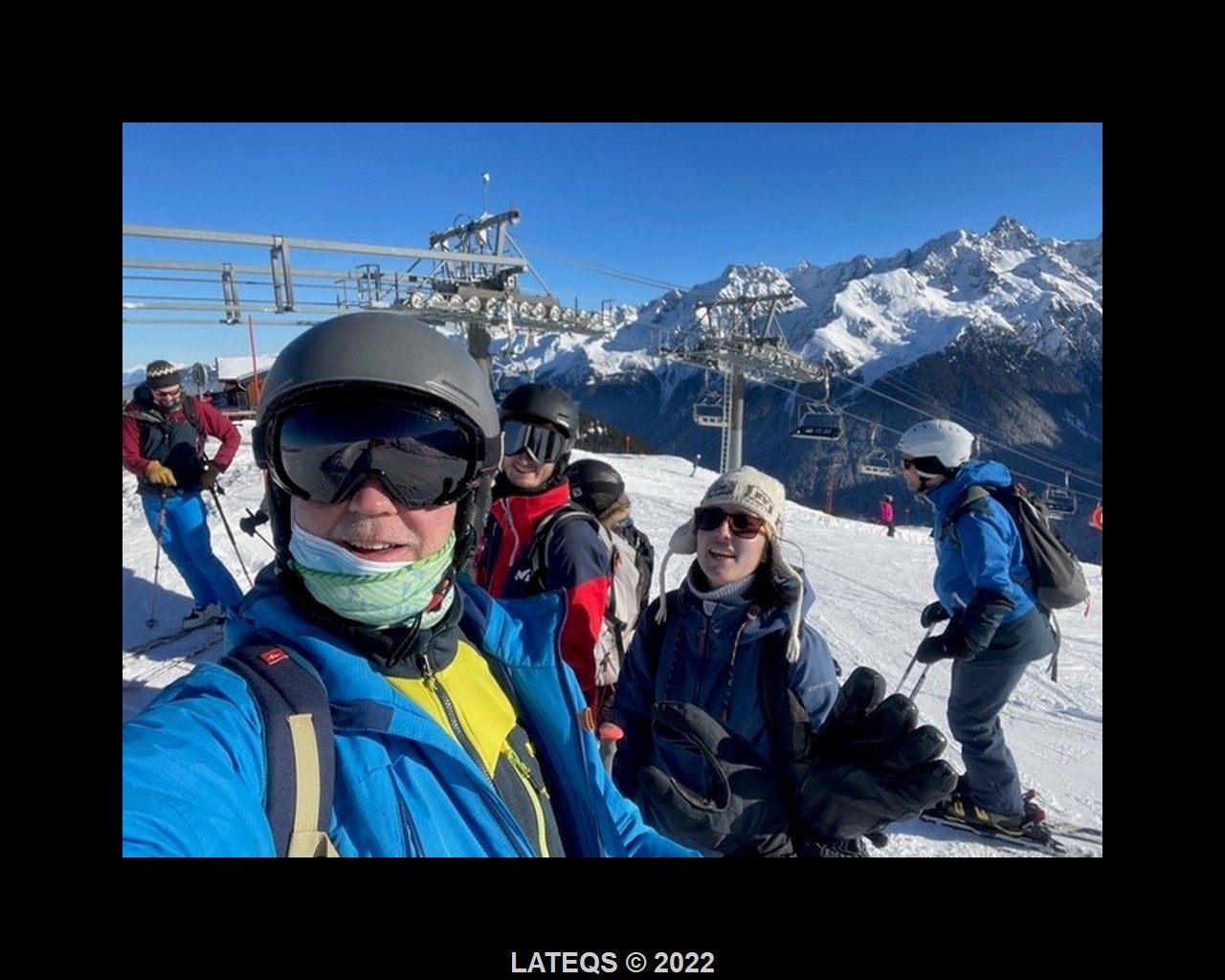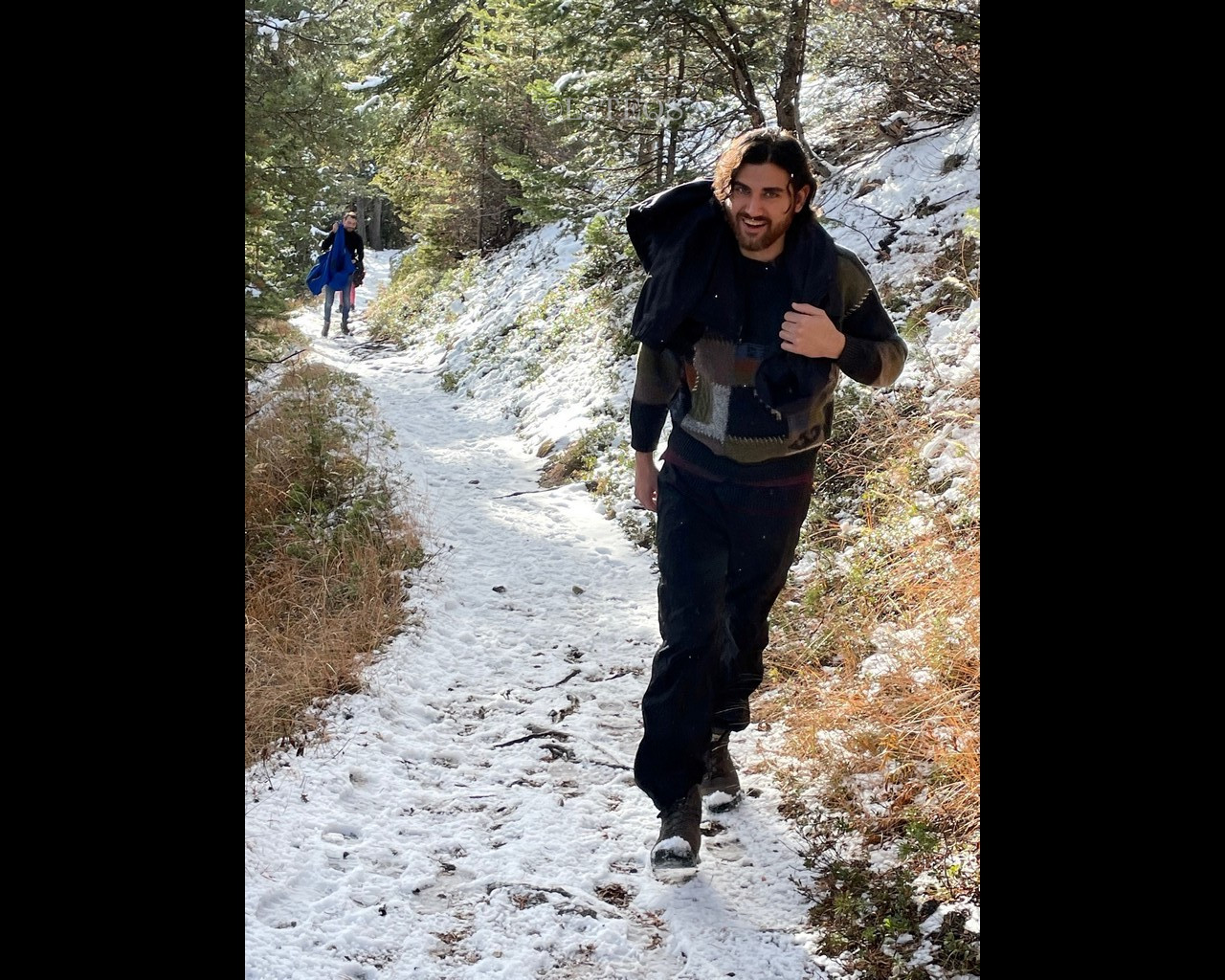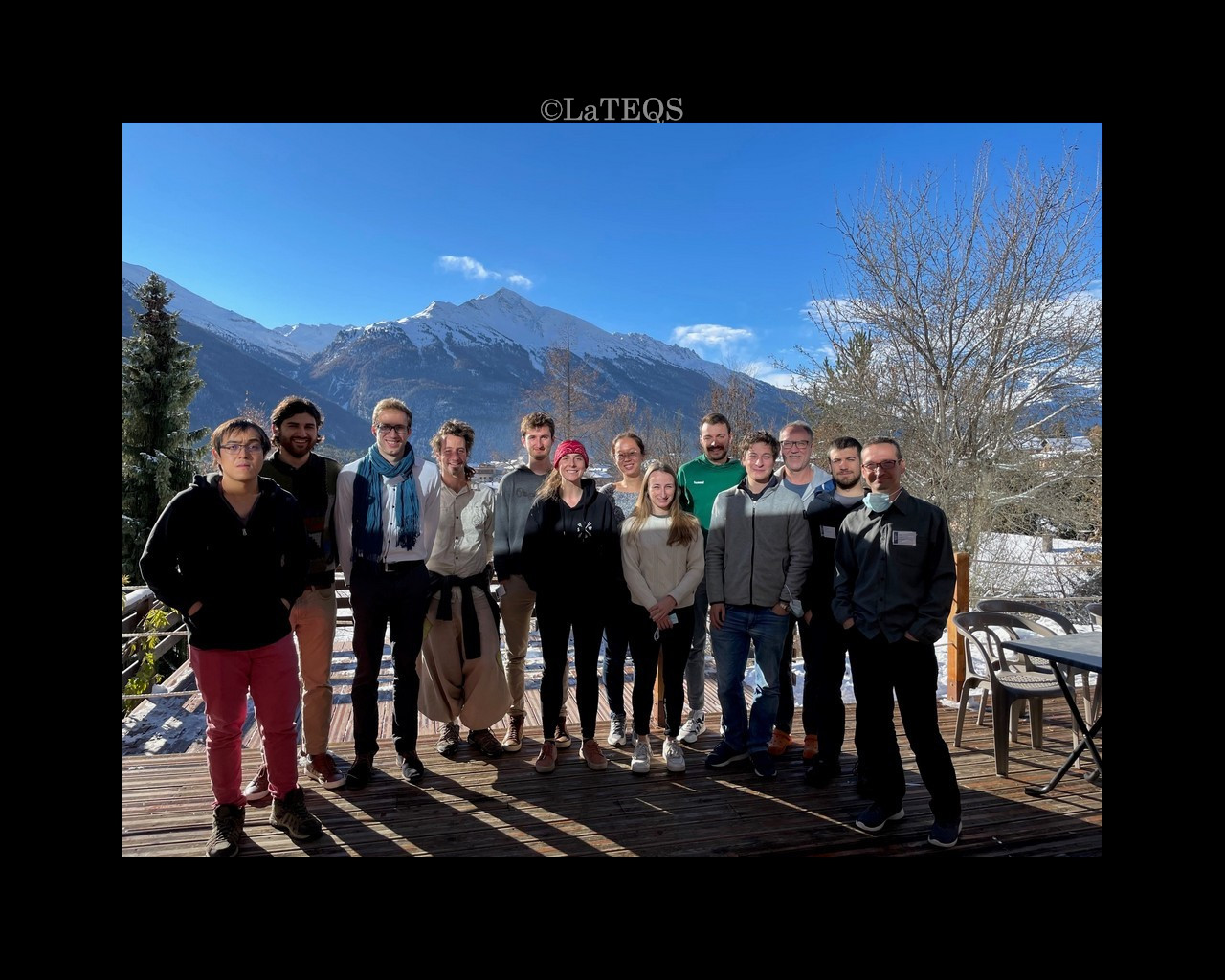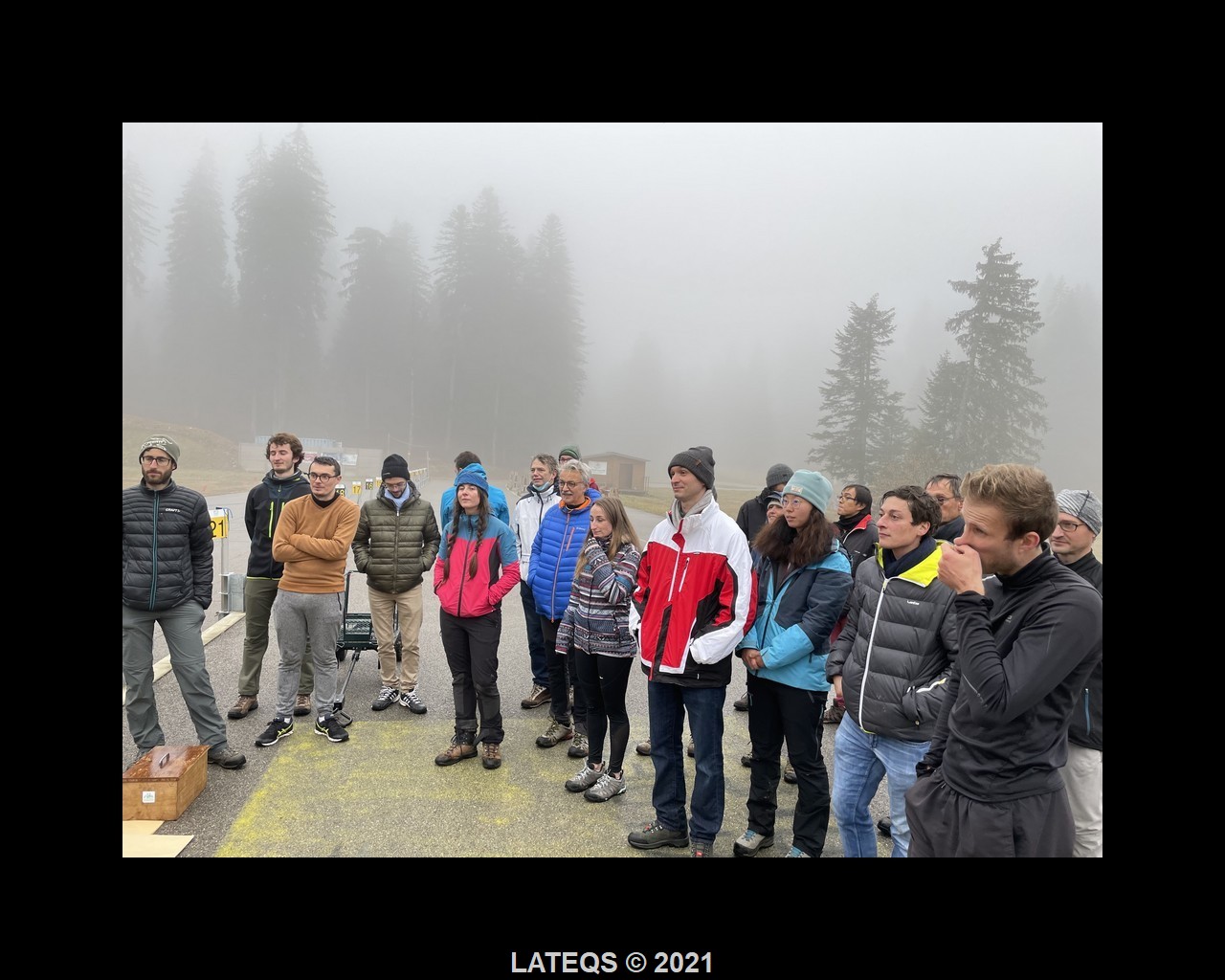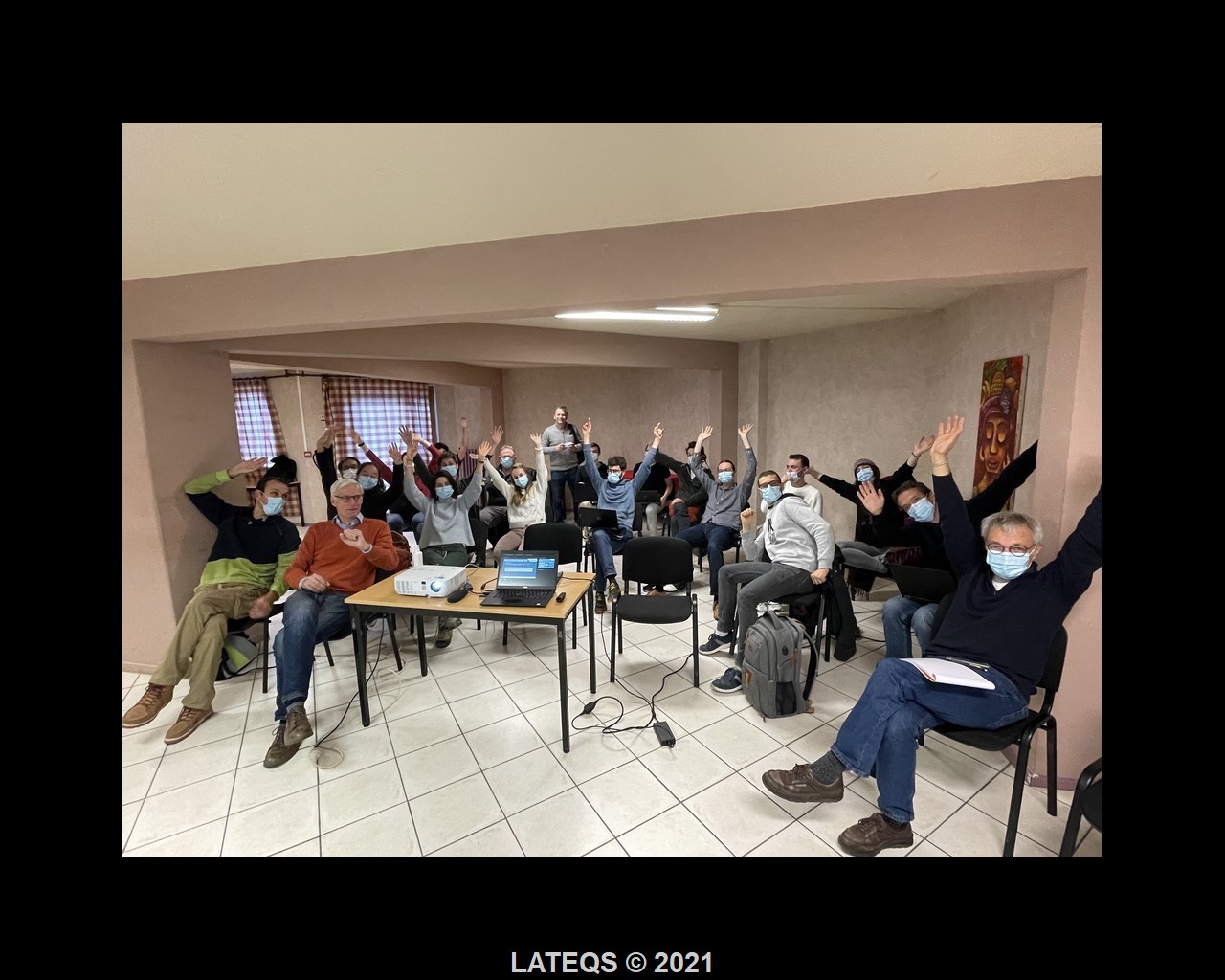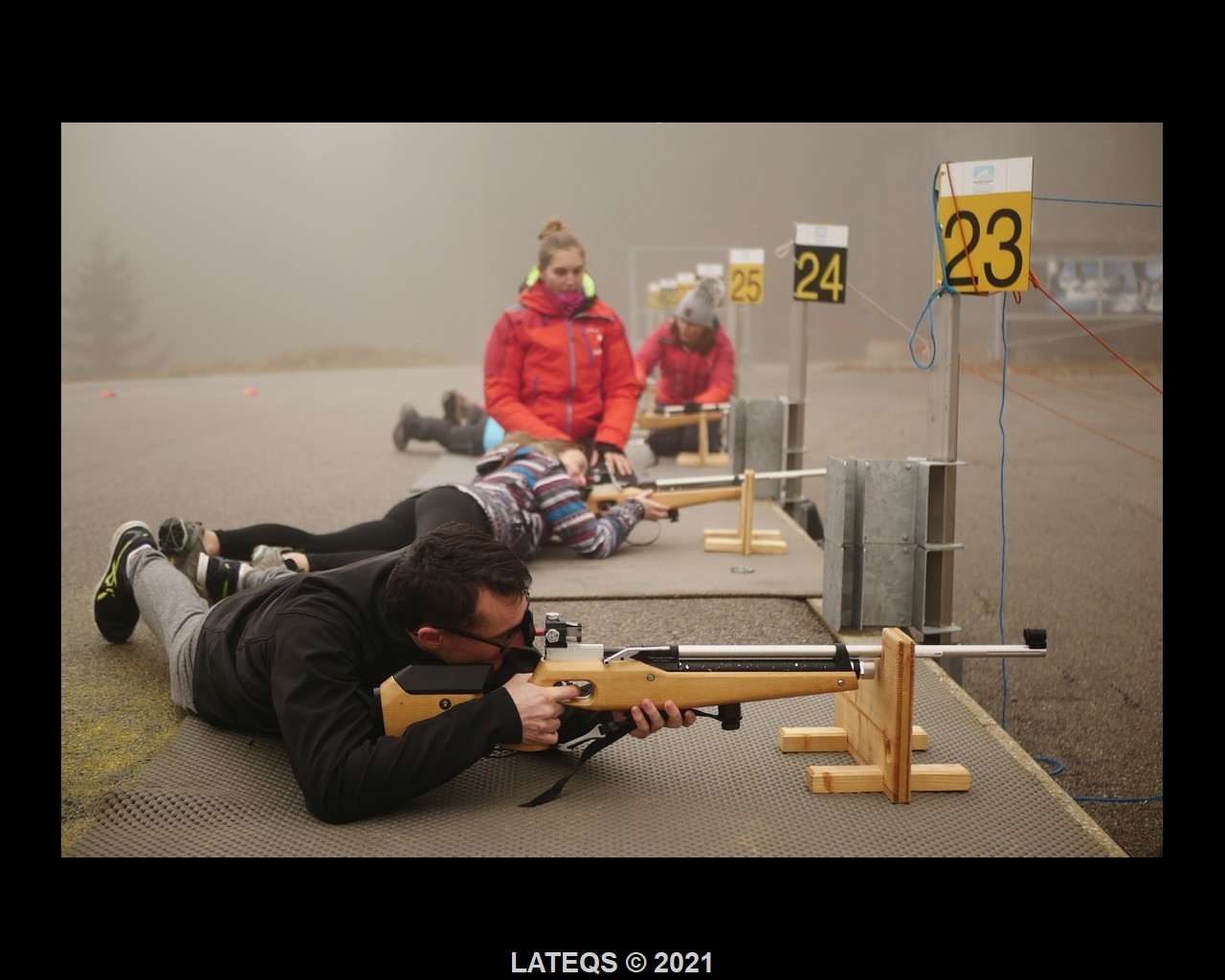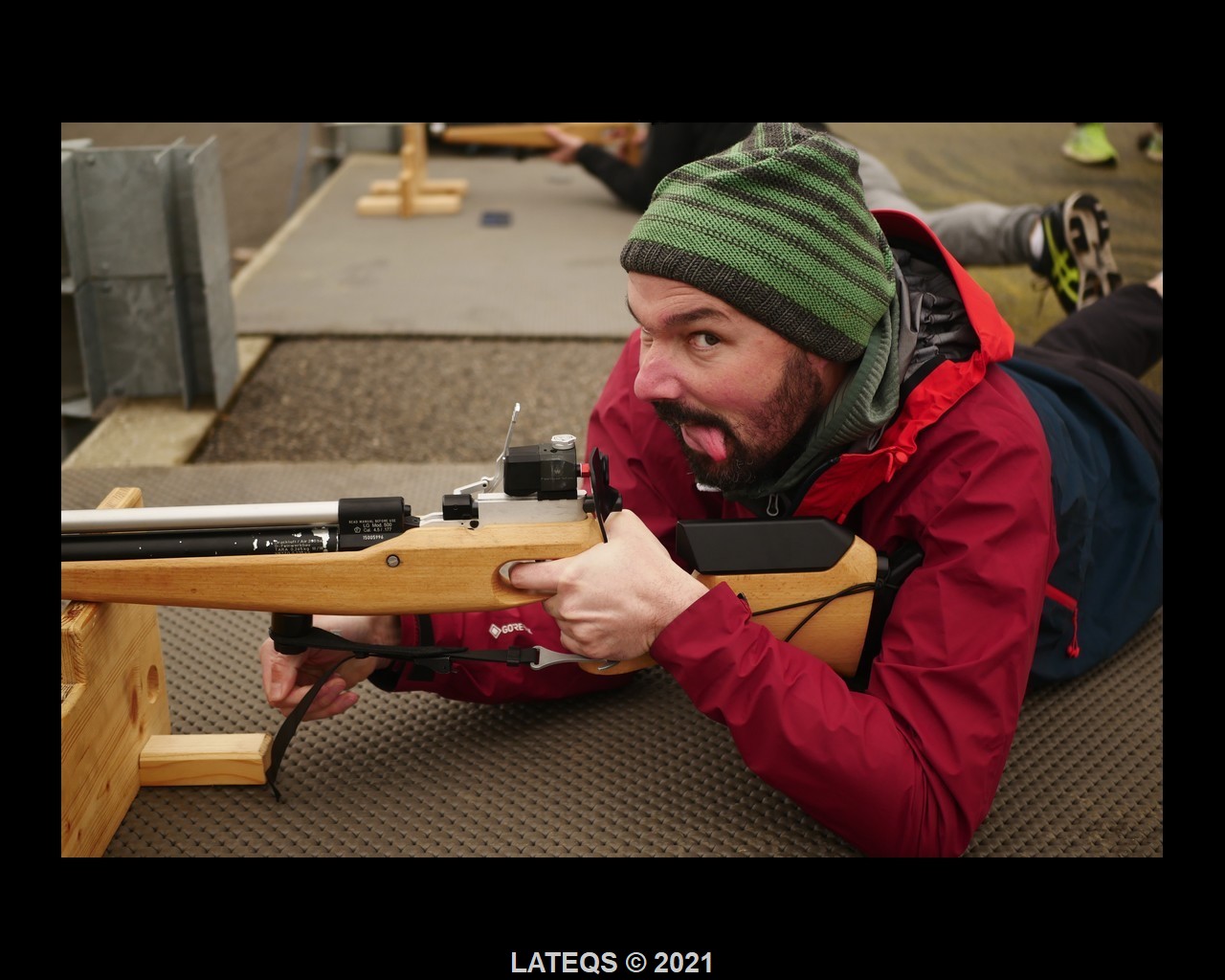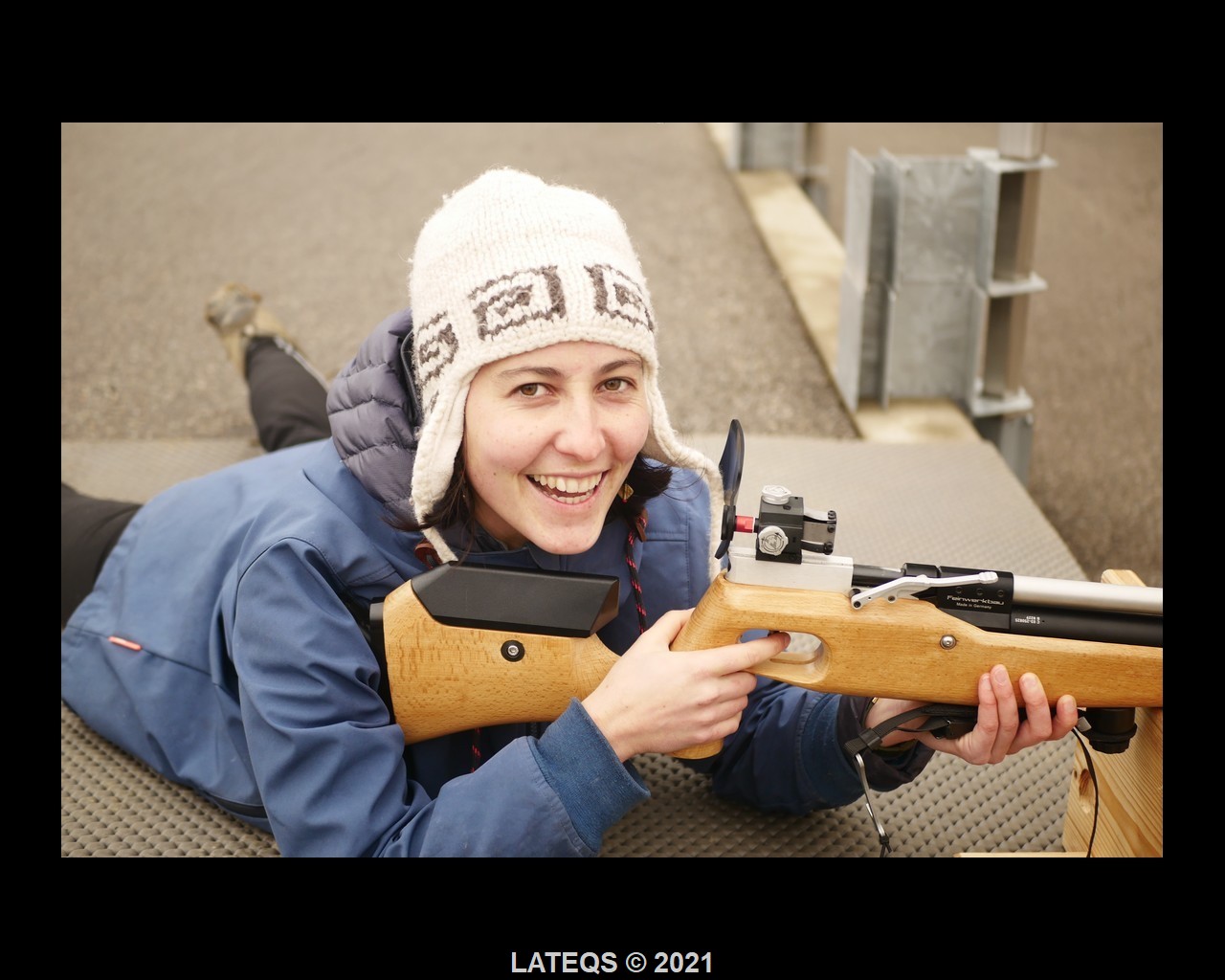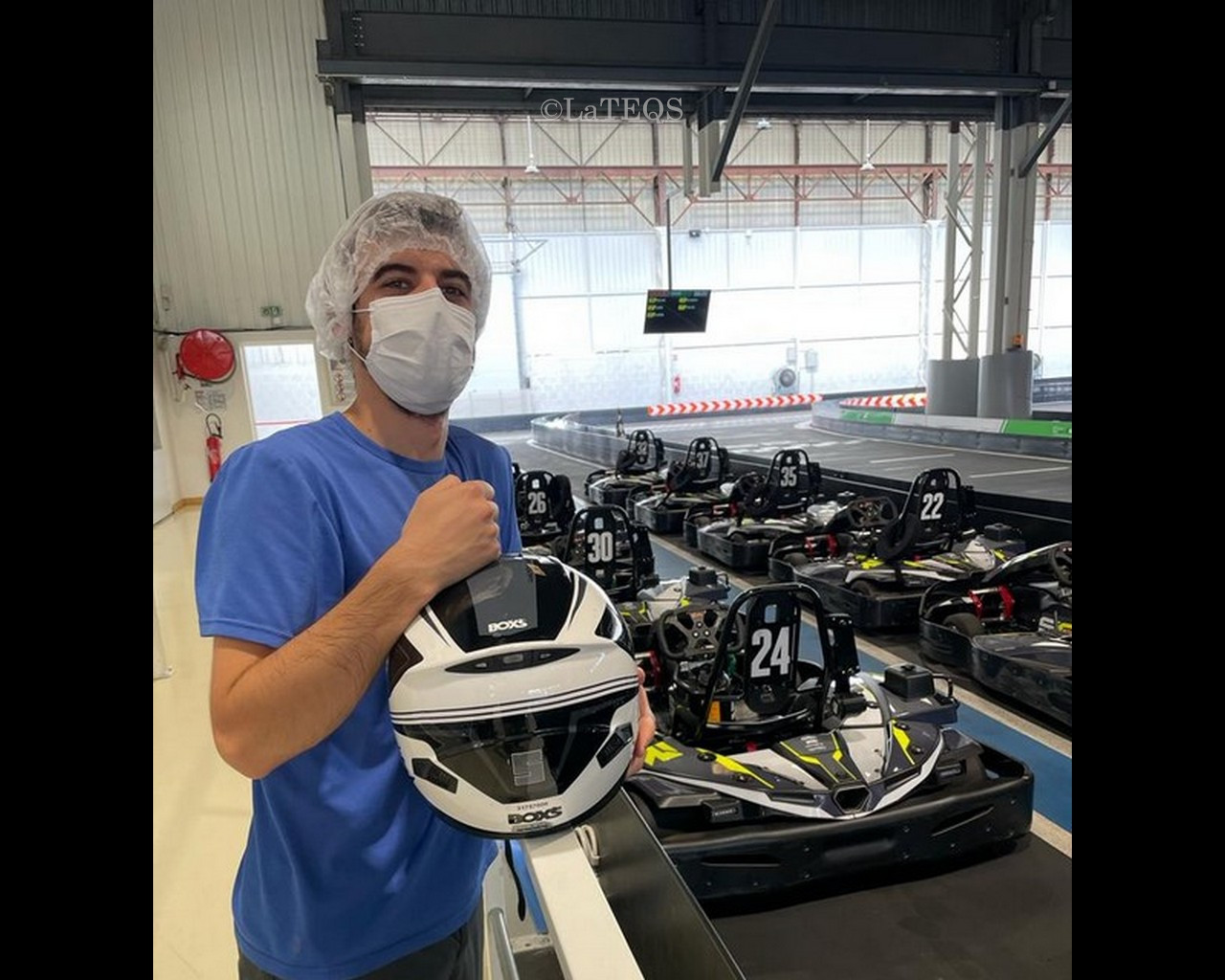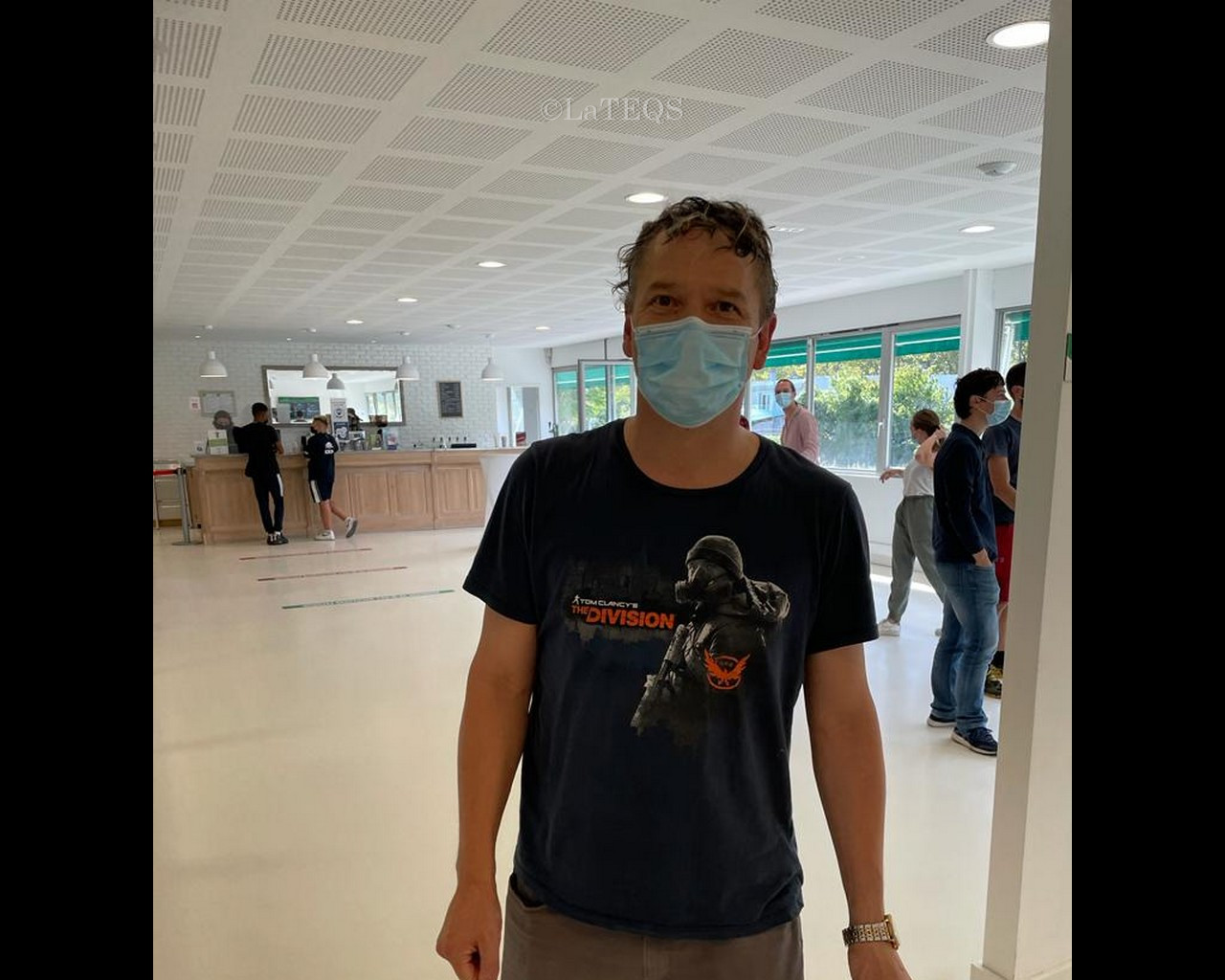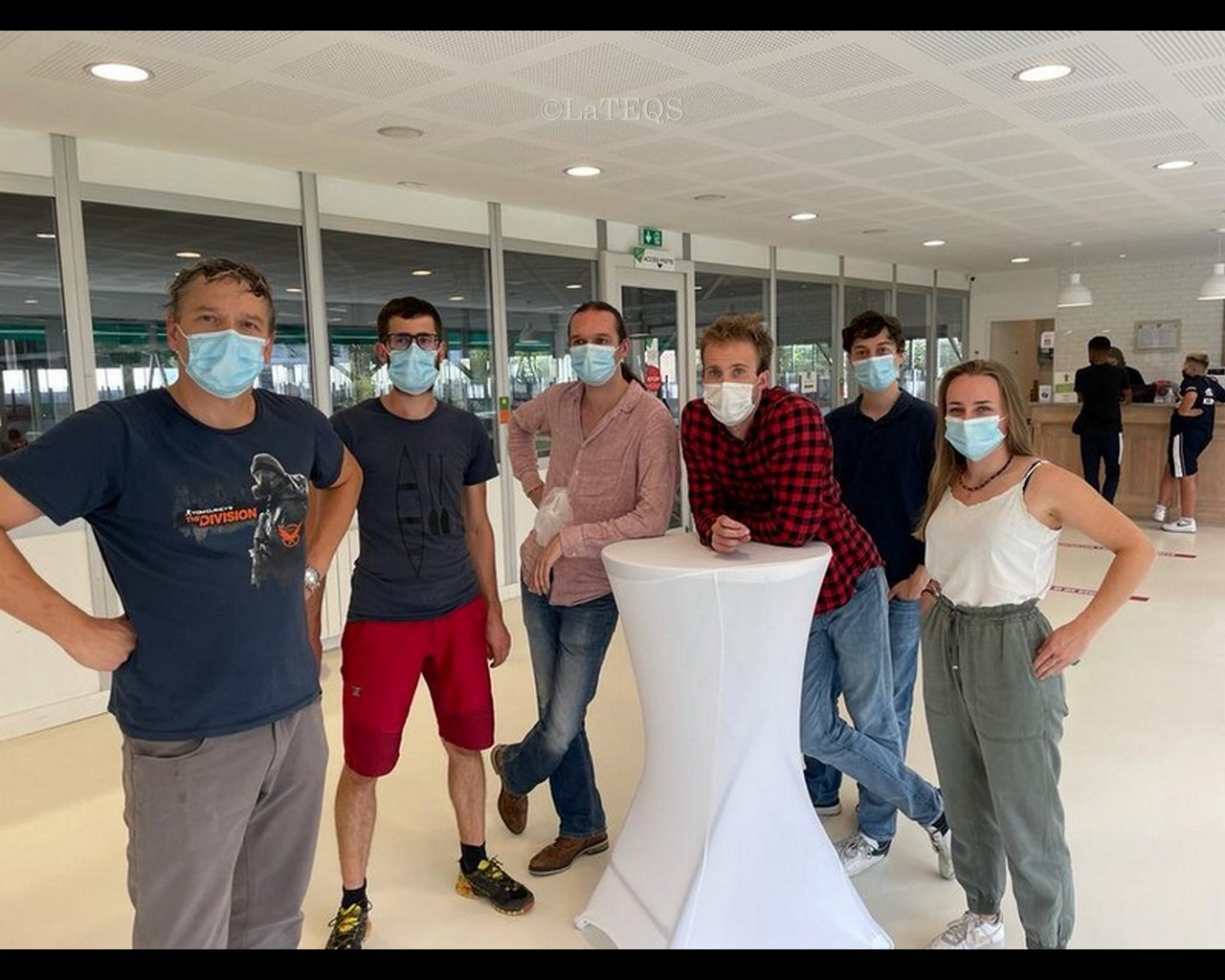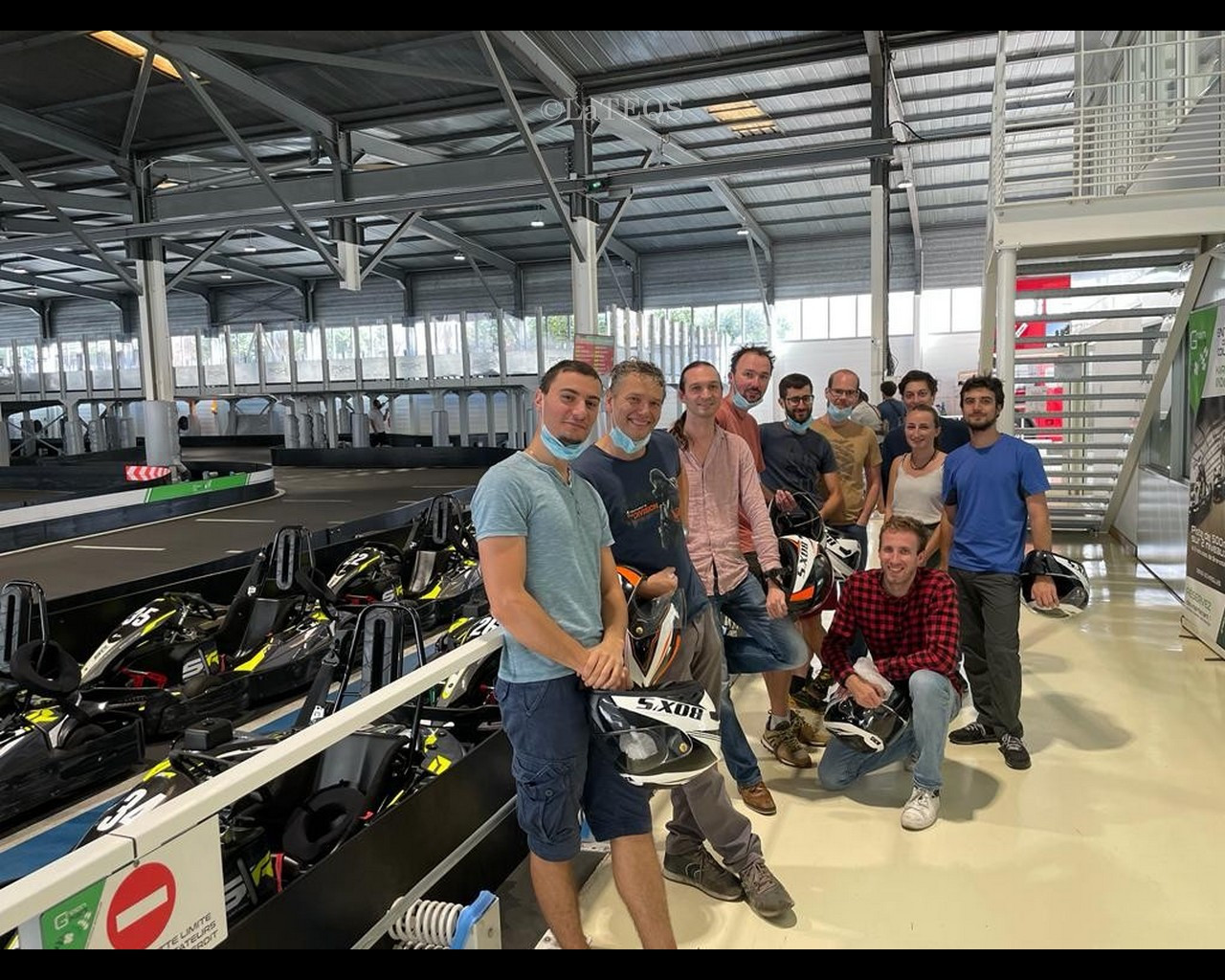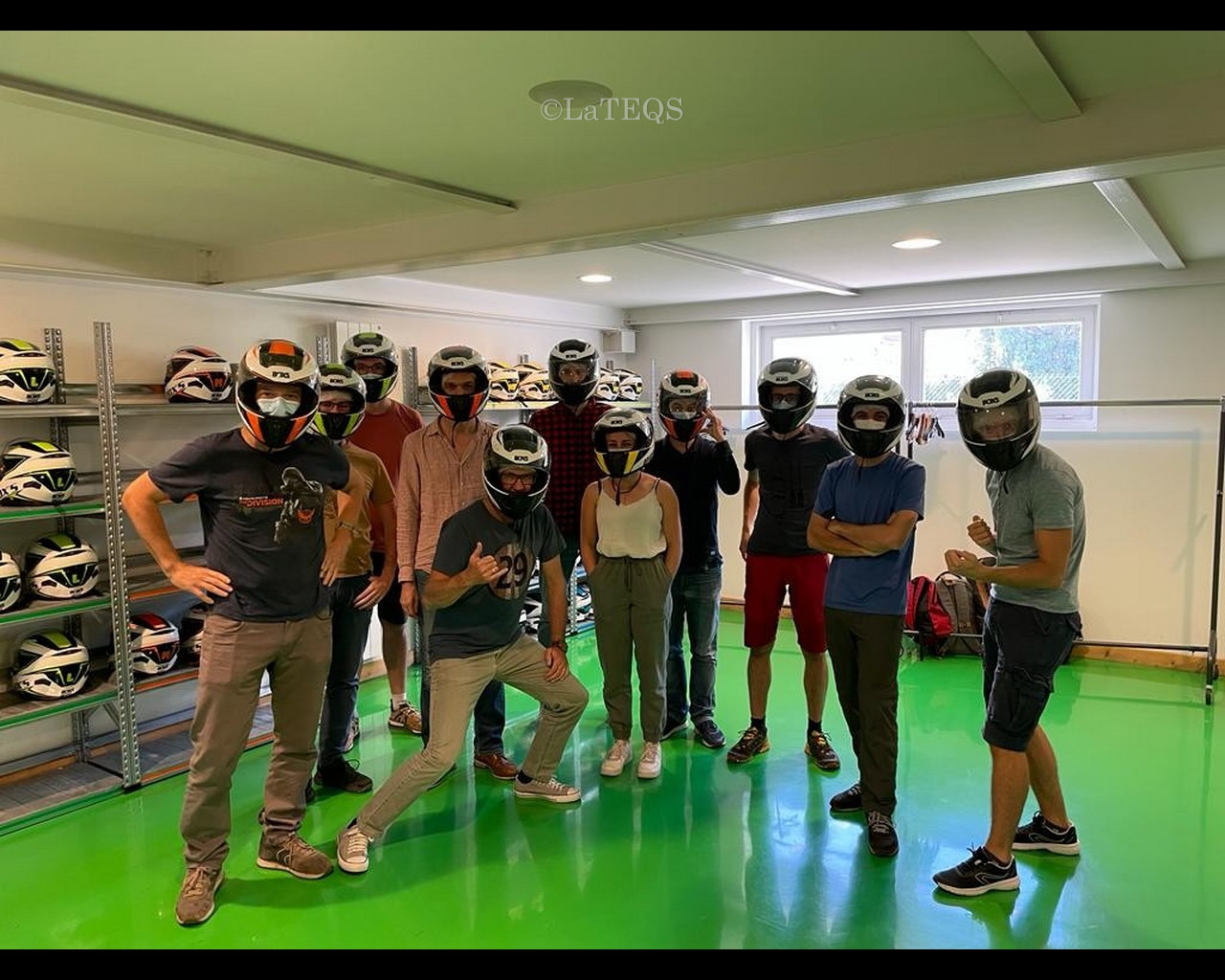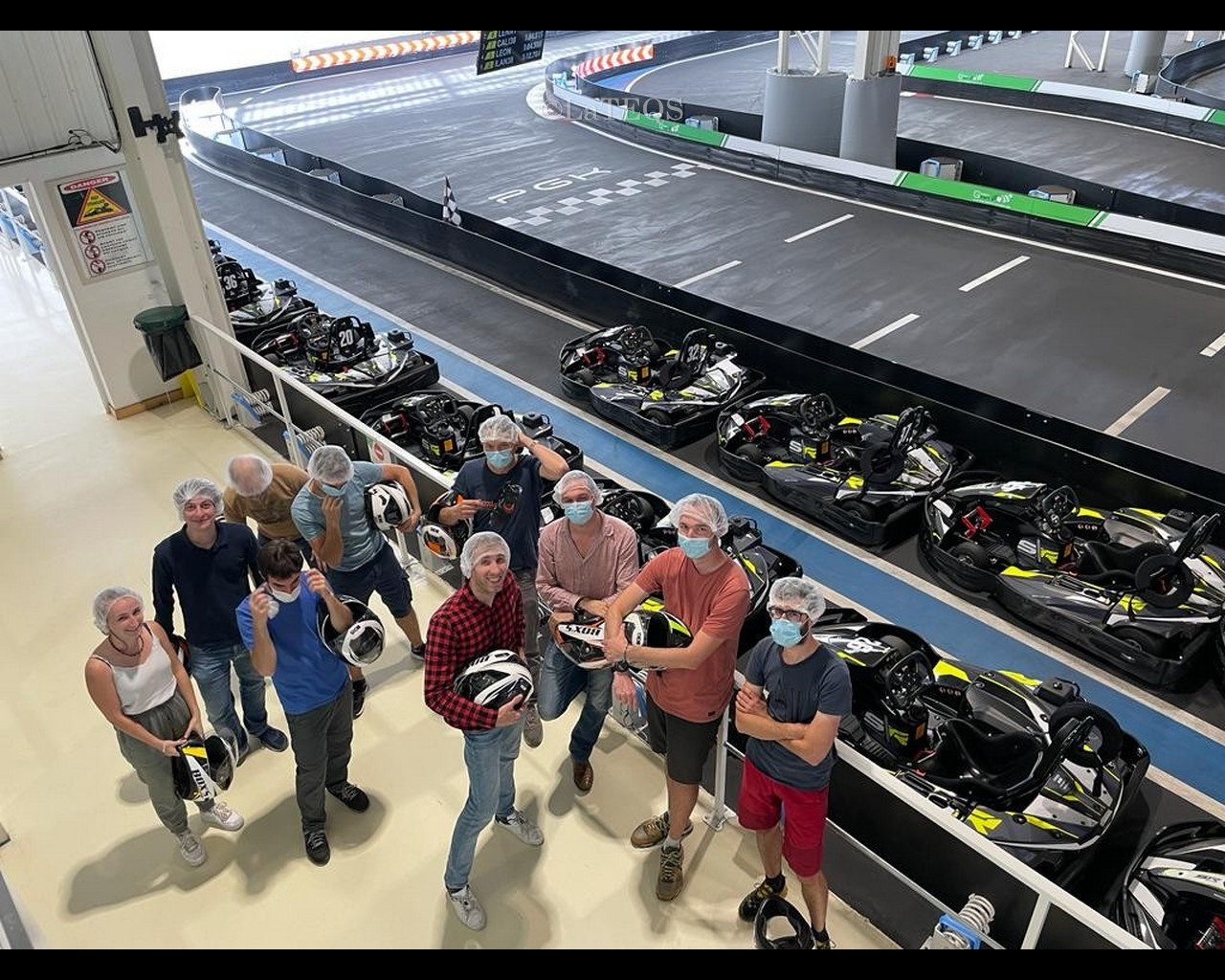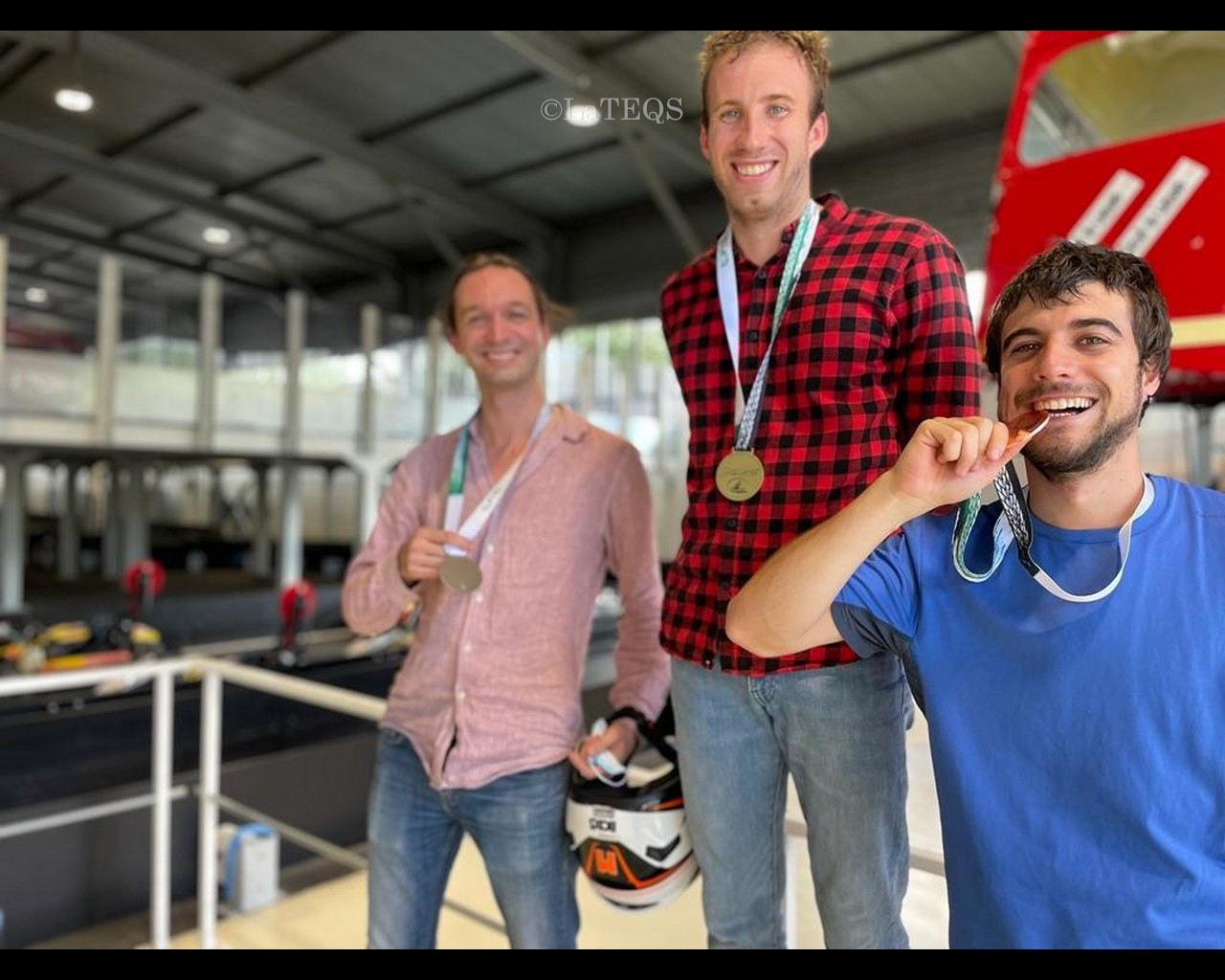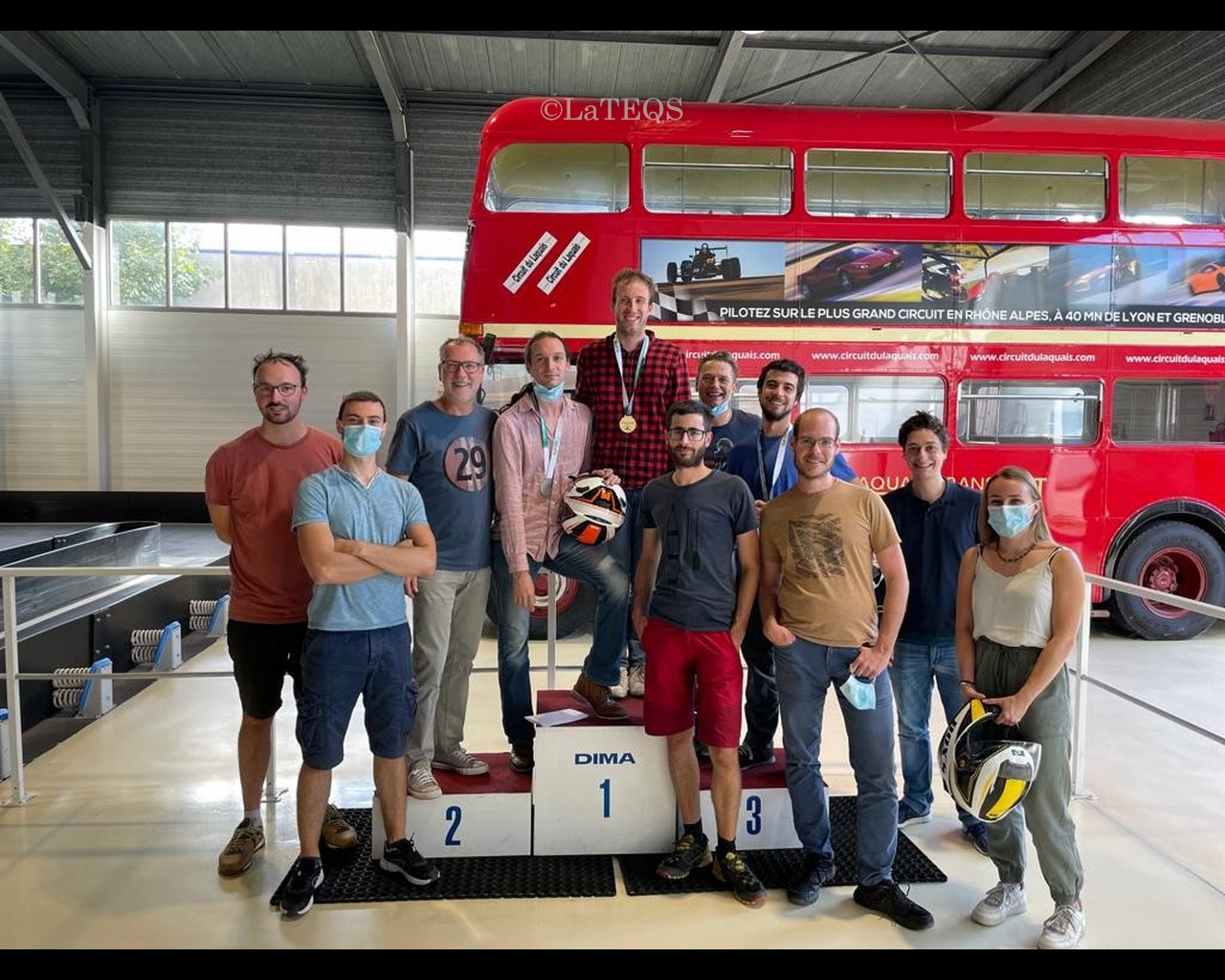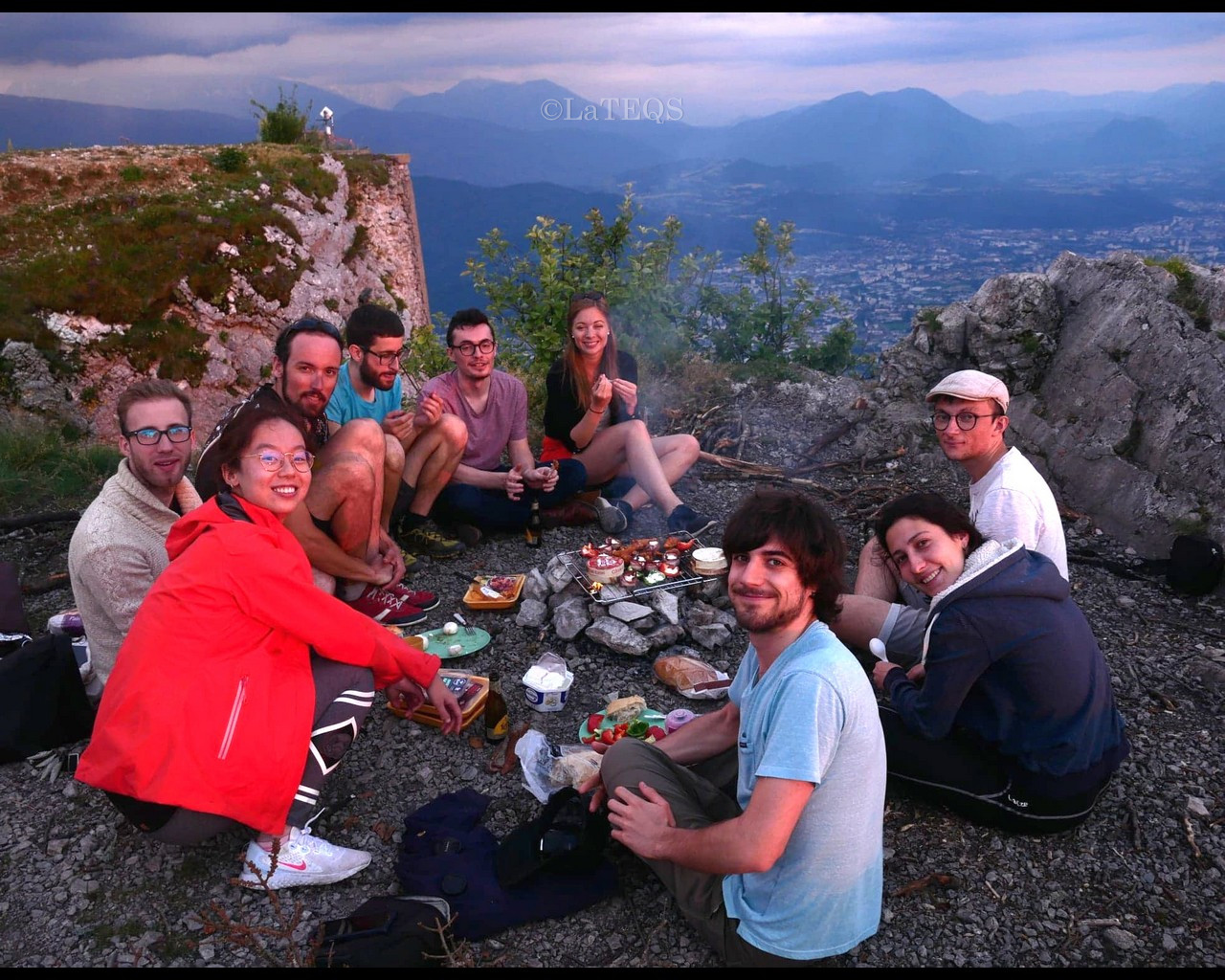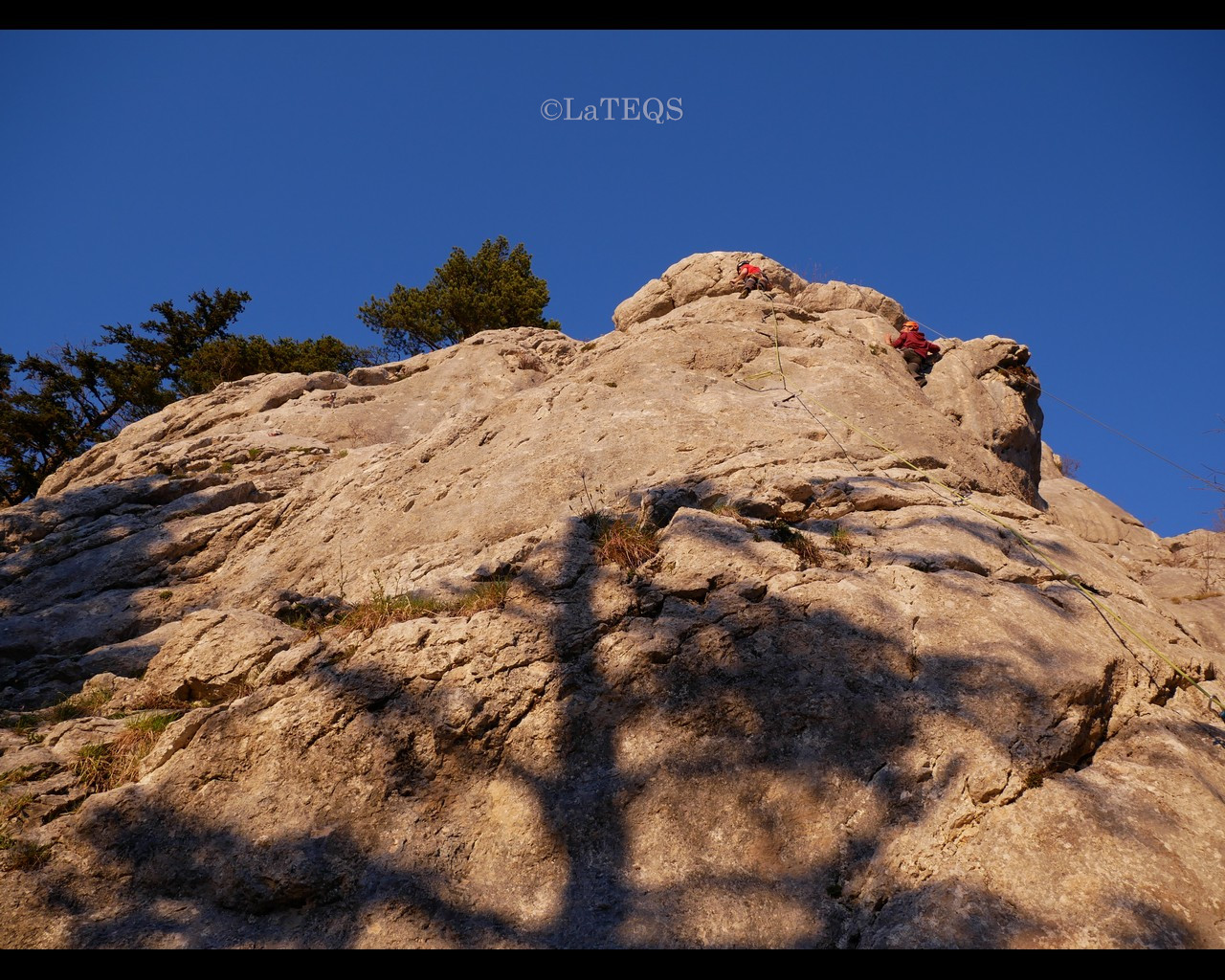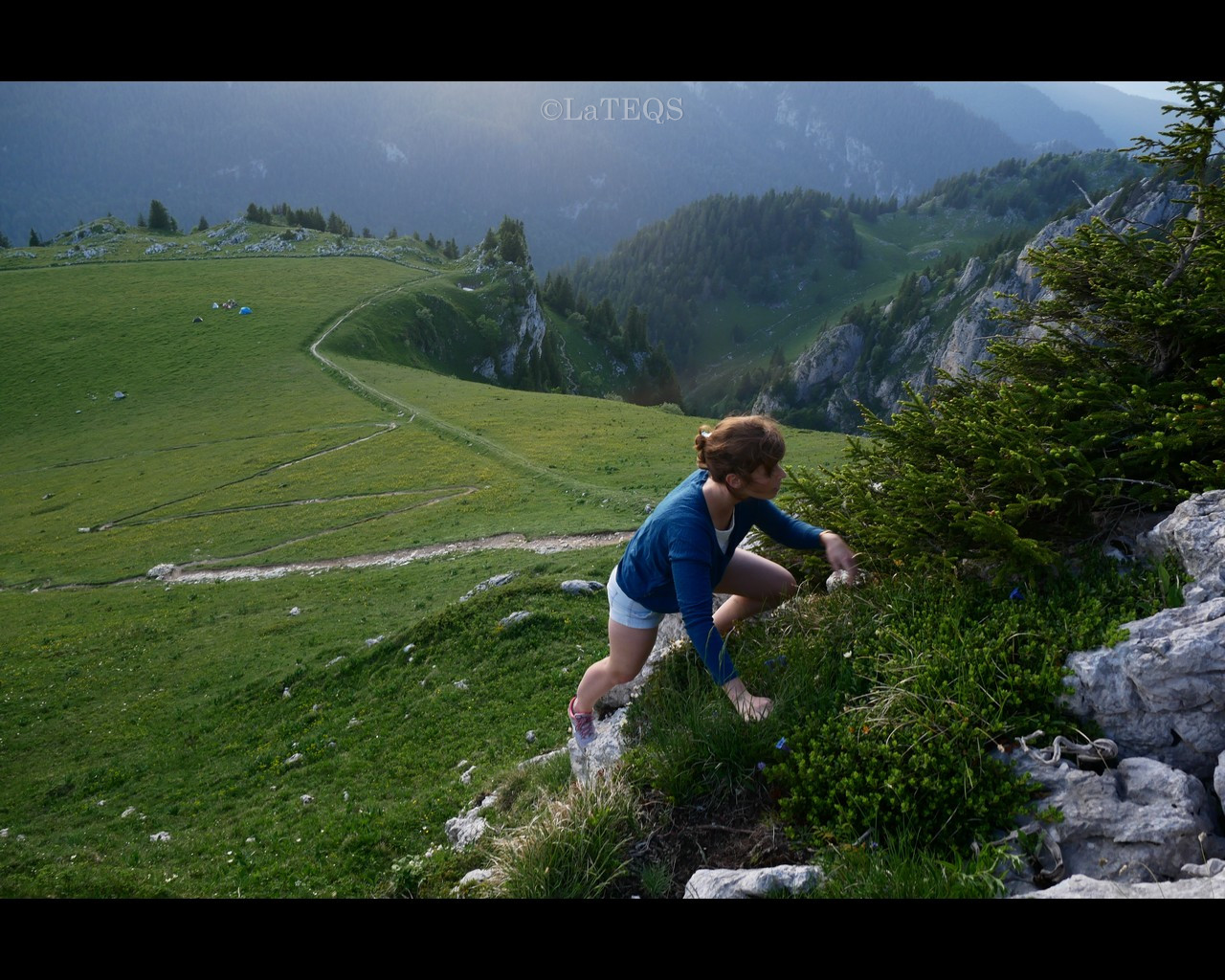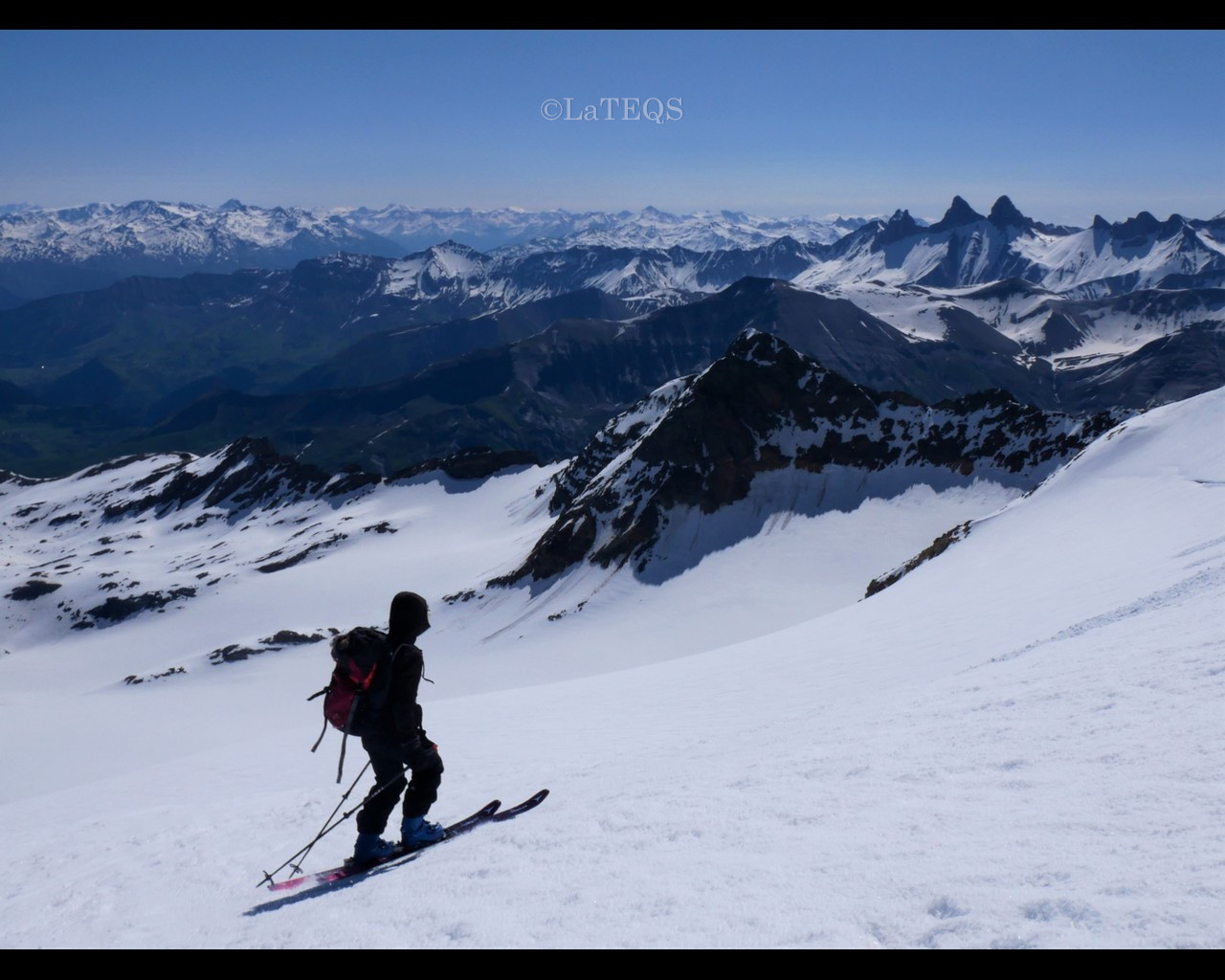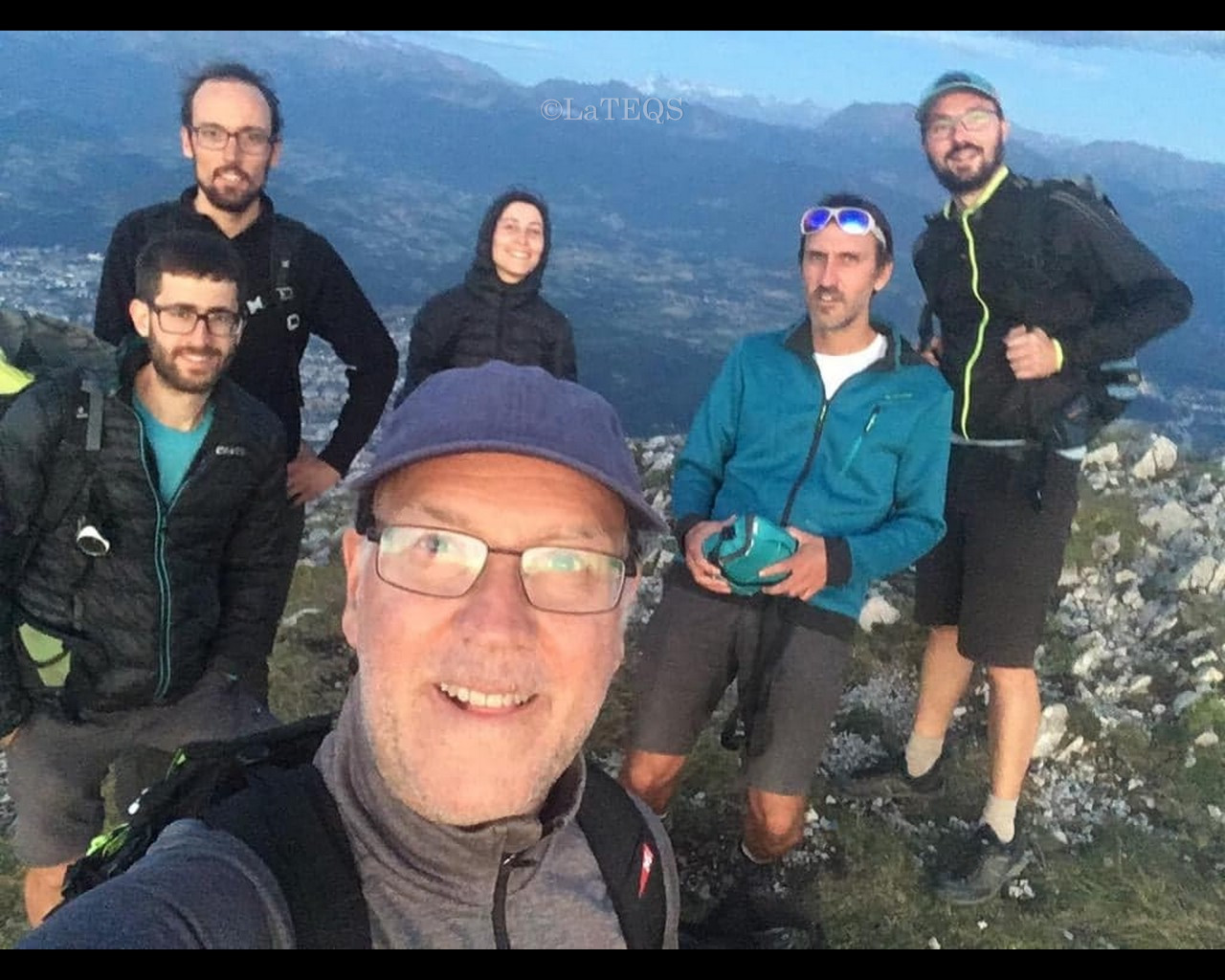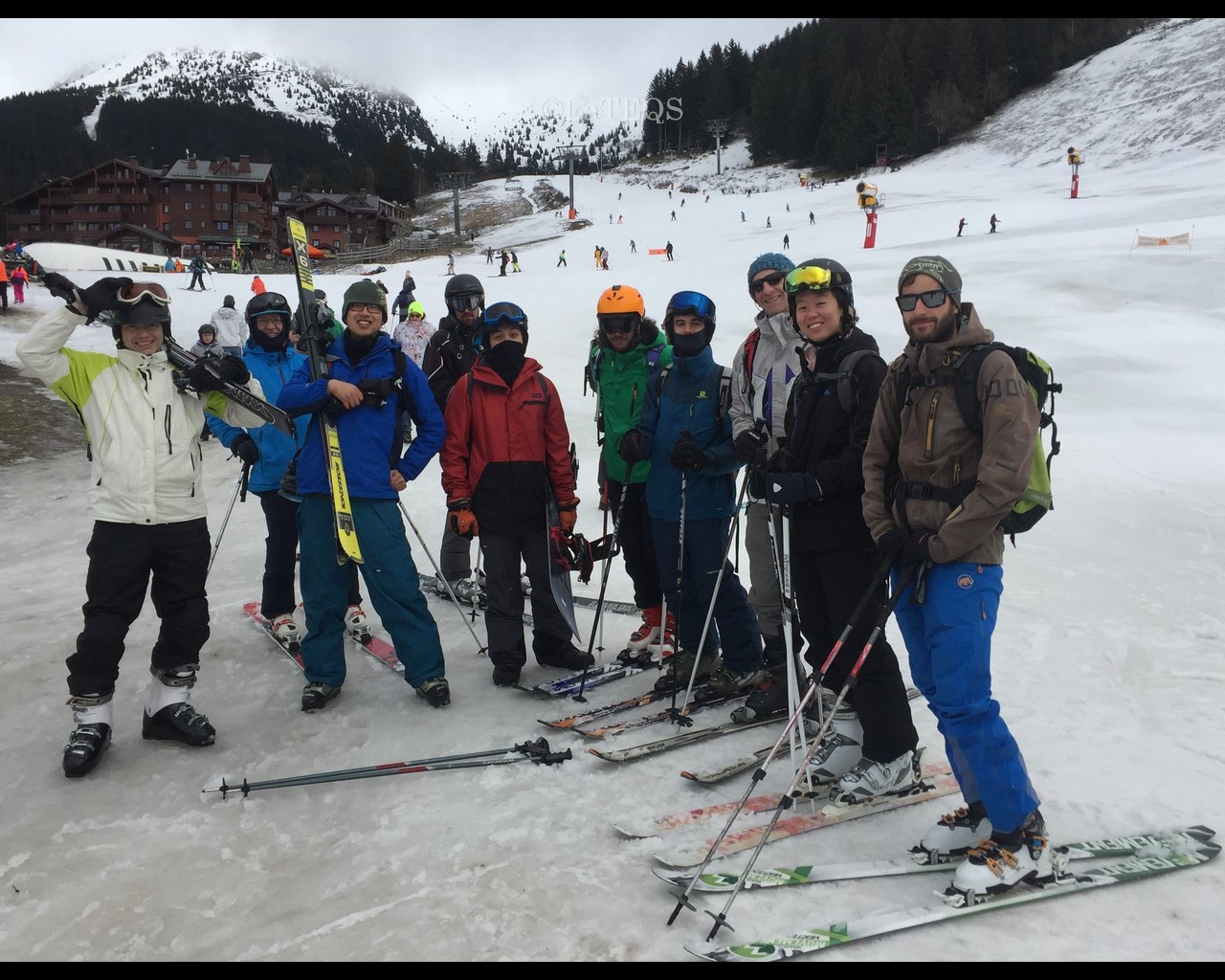FEDER and PEPR Quantique funding state of the art ALE/ALD nanofabrication equipment- Dec 2025
Quantum processors based on silicon–germanium alloys in particular have demonstrated their potential in recent years.These highly promising qubits require extremely fine and specialized nanofabrication.
Because of its versatility, it will become central to the fabrication of many quantum devices for the surrounding community, and it will undoubtedly serve as a focal point for building an ecosystem and a community of experts around this innovative platform.


Our professors were upgraded - September 2025
Clemens obtained prestigious IUF position and Vincent was promoted to professor . Contratulations to them !
2025 Slovak Academy of Science International Award for Dr. Christophe Marcenat- Sept 2025
LaTEQS days- Jul 2025
Gatemon Qubit on a Germanium Quantum-Well Heterostructure
Gatemons are superconducting qubits resembling transmons, with a gate-tunable semiconducting weak link as the Josephson element. Here, we report a gatemon device featuring an aluminum microwave circuit on a Ge/SiGe heterostructure embedding a Ge quantum well. Owing to the superconducting proximity effect, the high-mobility two-dimensional hole gas confined in this well provides a gate-tunable superconducting weak link between two Al contacts.We perform Rabi oscillation and Ramsey interference measurements, demonstrate the gate-voltage dependence of the qubit frequency and measure the qubit anharmonicity.
We find relaxation times T1 up to 119 ns, and Ramsey coherence times T2* up to 70 ns, and a qubit frequency gate-tunable over 3.5 GHz. The reported proof-of-concept reproduces the results of a very recent work [Sagi et al. Nat. Commun. 2024, 15, 6400] using similar Ge/SiGe heterostructures, thereby validating a novel platform for the development of gatemons and parity-protected cos(2ϕ) qubits.
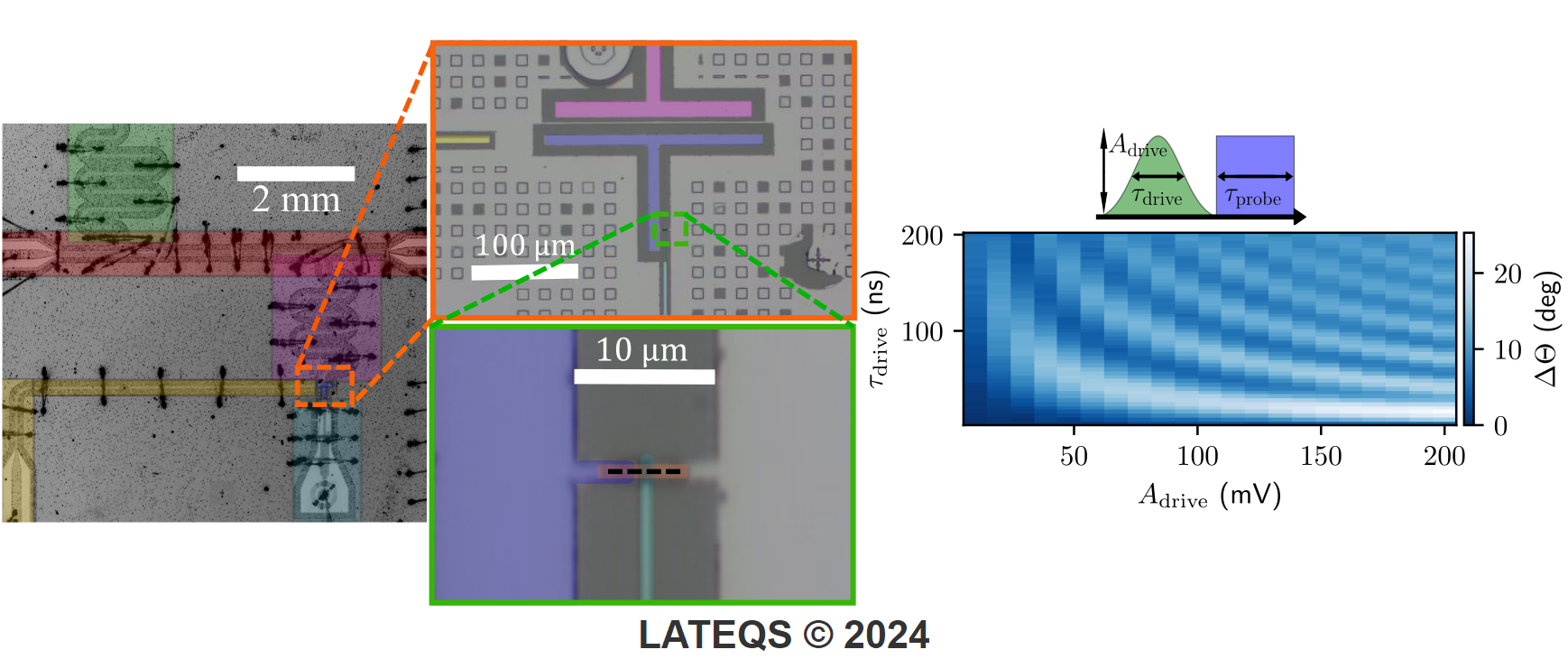
Gatemon Qubit on a Germanium Quantum-Well Heterostructure.
From nonreciprocal to charge-4e supercurrent in Ge-based
Josephson devices with tunable harmonic content 2024
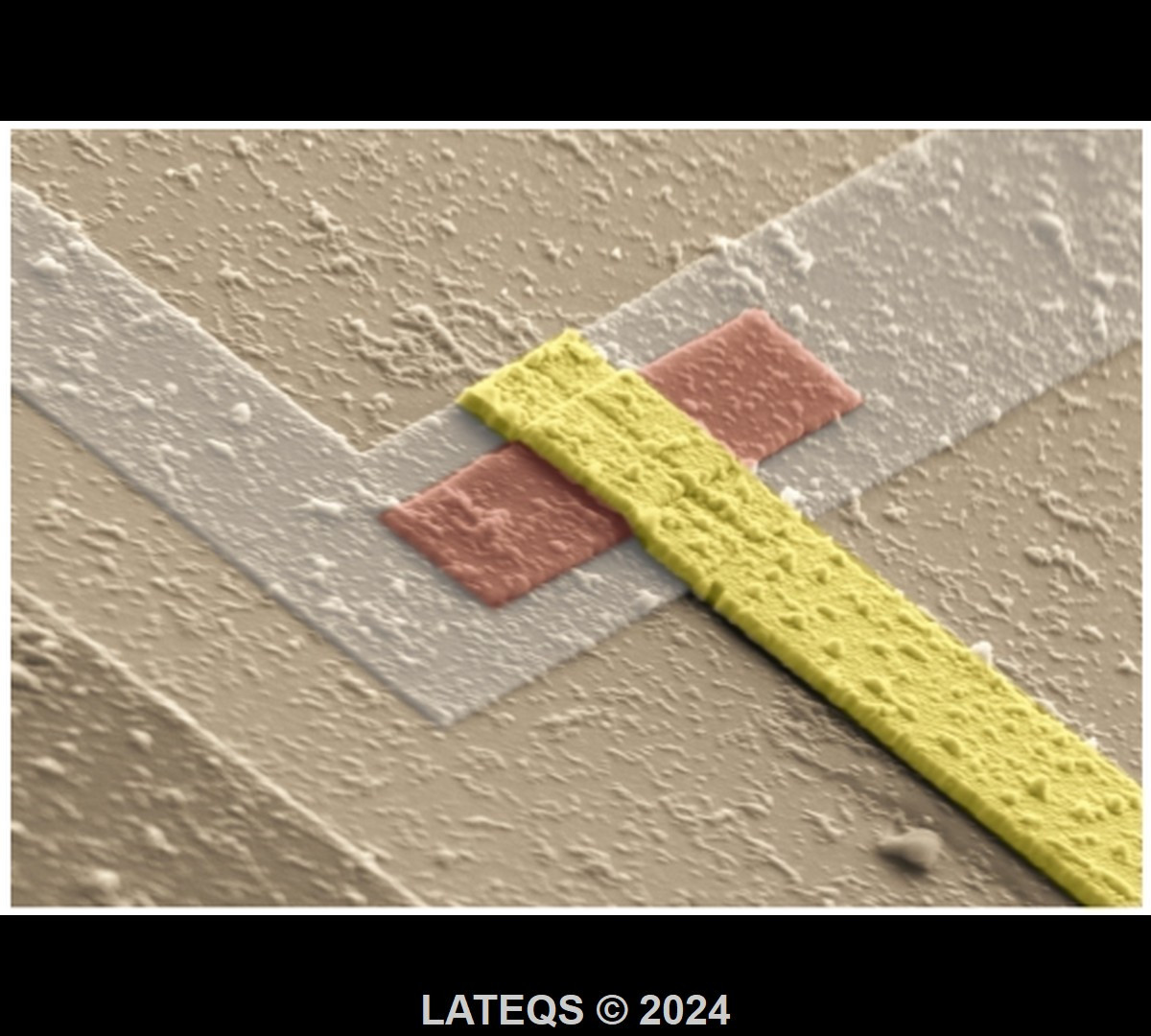
Ge-based hybrid devices as versatile and scalable building blocks of superconducting quantum circuits.
We report an experimental study of superconducting quantum-interference devices (SQUIDs) embedding Josephson field-effect transistors fabricated from a SiGe/Ge/SiGe heterostructure grown on a 200-mm silicon wafer. The single-junction CPR shows up to three harmonics with gate-tunable amplitude. In the presence of microwave irradiation, the ratio of the first two dominant harmonics, corresponding to single and double Cooper-pair transport processes, is consistently reflected in relative weight of integer and half-integer Shapiro steps. A combination of magnetic-flux and gate-voltage control enables tuning the SQUID functionality from a nonreciprocal Josephson-diode regime with 27% asymmetry to a π-periodic Josephson regime suitable for the implementation of parity-protected superconducting qubits. These results illustrate the potential of Ge-based hybrid devices as versatile and scalable building blocks of superconducting quantum circuits.
Reference: Leblanc et al., Physical Review Research 6.3 (Sept. 2024), p. 033281
Lateqs’ lab members went to Davos for Siqew 2024
We enjoyed the great talks of all teams present at the conference, and the fascinating discussions!
And of course the great environment in Davos
RF-SOC on Qubit experiments - May 2024
Last week, our LATEQS team had the pleasure of hosting Benjamin Criton and Xavier de la Broise, from CEA IRAMIS.They set up an RF-SoC FPGA card to drive and read our qubits, providing baseband modulation and demodulation up to at least 8 GHz.
With the help of the QICK open-source codes, this setup is remarkably user-friendly. We're excited about the advancements this brings to our research and development !
Students from various graduate schools of Grenoble-INP have visited our laboratory - February 2024
Students from various graduate schools of Grenoble-INP have visited our laboratory.It is a great opportunity for young people of very different horizons to discover the world of research.
Louis Jansen farewell celebration
Congratulations Louis for your wonderful carrier and thank you very much for you work at PHELIQS.
Chotivut Tangchingchai PhD defense
On January 24th, Chotivut Tangchingchai had defended his PhD in front of the jury composed of G. Scappucci (Uni. Delft),C. Csonka (Uni. Budapest), J. Nygaard (Uni. Copenhagen), S. Guéron (CNRS & Uni. Paris-Saclay) and J. Meyer (CEA & Uni. Grenoble Alpes). Congratulations to him.
Superconductor / Semiconductor hybrid nanostructures based on Germanium for quantum information
Superconducting qubit based on superconducting circuits consists of a superconducting capacitor and a Josephson junction and with the transmon geometry is extensively used in advanced quantum processors,pursuing scalable quantum computing. The tuning of the qubit frequency of the transmon relies on magnetic flux dependent interference between the supercurrents of two superconductor-insulator-superconductor (S-I-S) Josephson junctions in a superconducting loop. Josephson junction based on superconductor-semiconductor-superconductor (S-Sm-S) materials opens up a possibility to the gate-tunable transmon, referred to as the "gatemon", in which the qubit frequency can be tuned by electrostatic mean. Recent realizations of gatemons on III-V material platforms show impressive development on the alternative to the transmon, yet still leave a big question on the scalability. The silicon-germanium (SiGe) heterostructure is one of the potential platforms to host hybrid devices due to its high hole mobility and the low Schottky barrier at the Ge-metal interface. Additionally, the compatibility with the silicon-based semiconductor industry is a capable advantage for the scaling-up qubit platform. In this thesis, I developed gatemons based on the Al-Ge-Al Josephson junction in a SiGe heterostructure.Firstly, the robust fabrication recipe, found on a top down approach, for Josephson Field Effect Transistors (JoFETs) is established. I performed measurements to study and characterize their properties as a function of the gate voltage, temperature, and magnetic field. Second, I developed the fabrication process to integrate Al-Ge-Al junctions shunted with capacitors and coupled to superconducting resonators. I demonstrated the first anticrossing features in one of the fabricated Ge gatemons. The resonant frequency of the gatemon is mapped using the two-tone spectroscopy technique and is found to be gate-tunable.
Mini-workshop on superconducting Hybrids
Download Mini-worshop Program here !
François is on TV
GDR Aussois - November 2023
Plenary session GDR Quantum Mesoscopic Physics Aussois 2023Some LaTEQS members were at Aussois for the plenary session of the GDR Quantum Mesoscopic physics
, November 27th to 30th Congratulations to Étienne Dumur and Axel Leblanc (LaTEQS) for delivering two compelling oral presentations.
2023 LaTEQS days- Nov 2023
Team building activities were organized with painting and cooking.
Everyone had the chance to share unknown and unexpected skills with the team !
That was a lot of fun

Estelle defended her PhD thesis entitled “Radiofrequency readout of hole spins confined in semiconductor quantum dots”,On November 8th.
Holes in the valence band of group-IV semiconductors benefits from natural spin-orbit interaction. Consequently, holes spins can be manipulated with electric field offering perspectives for quantum information processing. Among the different semiconducting materials, Silicon and Germanium stand out for the fabrication of quantum dot devices. On one hand, isotopically purified Silicon offers a clean magnetic environment together with very mature fabrication process. On the other hand, Germanium shows high mobilities and low effective masses in Ge/SiGe quantum well heterostructures, offering a large freedom in device design. In this manuscript, we explore the spin physics of holes confined in semiconductor quantum dots focusing on readout techniques allowing for spin states detection. We first explore the dispersive readout of holes in Silicon-on-Insulator nanowires. For these purpose, we design and fabricate Nobium Nitride superconducting microwave resonator, and implement a gate-reflectometry setup working at a few gigahertz. Second, we focus on the charge sensing of double quantum dots (DQDs) in Ge/SiGe heterostructures. We implement a radiofrequency setup on a charge sensor made of a single quantum dot allowing for the assessement of the DQD charge states in less than a microsecond. Associated with a measured charge noise around 0.2μeV/√Hz, this setup allows to reach the last hole regime of the DQD. Eventually we demonstrate the detection of Pauli Spin Blockade. Using this spin-to-charge conversion mechanism, we access the spin states of the DQD and report on their energy relaxation rates.
Silicon Quantum Electronics Workshop 2023 in Japan
Marion and Simon attended the Silicon Quantum Electronics Workshop in Kyoto, Japan.
Giant Atomic Swirl in Graphene Bilayers with Biaxial Heterostrain
We report a new type of moiré superlattice in bilayer graphene. The superlattice does not originate from twist between the layers but from biaxial heterostrain. Here one layer is strained with respect to the other. In our experimental implementation biaxial heterostrain is small (~0.1%) and the superlattice is huge ~250 nm in period so that the system relaxes to a more favourable configuration where strain is confined in narrow spiraling 1D regions hosting topological electronic states. Graphene bilayers with biaxial heterostrain therefore offers a new playground for moiré physics in graphene.Référence : Advanced Materials
The spin-photon paper made it to the cover of the July issue of Nature Nanotechnology
The paper describing in great detail the coherent spin-photon interface between a hole spin in silicon and a microwave photon the paper can be found HereJuly edition of Nature Nanotechnology
Nicolas defended his PhD thesis entitled “A Qubit insensitive to noise”,On April 18th.
On tuesday, 18th 2023, Nicolas Piot defended his PhD work with a very nice oral presentation. The jury was composed of Mairbek Chshiev (UGA), Andrea Hofmann (Basel Uni.), Frederico Martins (HCL), John Morton (UCL), Christophe Stampfer(RWTH Aachen University) together with his two supervisors, X. Jehl and R. Maurand.
Welcome to Clemens Winkelmann as Associate Professor !
Clemens is Associate Professor at Grenoble INP - Phelma . His research focus is on thermal/thermodynamic aspects of quantum transport, as well as mesoscopic superconductivity, which he investigates using low-temperature scanning tunneling microscopy. He has recently moved from Institut Néel CNRS to PHELIQS , and he comes to reinforce our Electronic Transport and Superconductivity Team
Welcome to Maria D’Antuono as a new post-doc !
Maria D’Antuono recently reached the team.She will be working on Ge based superconductor/semiconductor hybrid devices in the framework of the RobustSuperQ project .
Maria graduated at the University of Naples she did her PhD entitled “Quantum Technologies with 2D-Oxide materials” under the supervision of Pr. F. Tafuri
Moriond Conference at La Thuile (It) - March 2023
Axel, Boris, Elijah, Jesper and François were at the Moriond Conference at La Thuile.Boris gave a talk on hole spin qubits in Silicon, Axel and Elyjah had posters.
More photos here ...
Strong coupling between a photon and a hole spin in silicon, on March 2023.
A new article published in Nature Nanotechnology !We demonstrate strong coupling between a microwave photon in a superconducting resonator and a hole spin in a silicon-based double quantum dot issued from a foundry-compatible metal–oxide–semiconductor fabrication process. By leveraging the strong spin–orbit interaction intrinsically present in the valence band of silicon, we achieve a spin–photon coupling rate as high as 330 MHz, largely exceeding the combined spin–photon decoherence rate. This result, together with the recently demonstrated long coherence of hole spins in silicon, opens a new realistic pathway to the development of circuit quantum electrodynamics with spins in semiconductor quantum dots.
Read More: Here
Gonzalo defended his PhD thesis entitled “Hole Quantum Dots inStrained Ge/SiGe Heterostructures”,On March 20th.
On Monday, 20th 2023, Gonzalo Troncoso defended his PhD work with a very nice oral presentation. The jury was composed of F. Balestro (UGA), N. Ares (Oxford Uni.), D. Zumbühl (Basel Uni.), D. Mailly (C2N) together with his two supervisors, X. Jehl and R. Maurand.
March Meeting 2023 @ Las Vegas
In March 2023, Romain, Victor and Chotivut were at Las Vegas to give a talk at the 2023 March Meeting
Spin Qubit 5
In September 2022, Romain, Silvano, Simon and Victor M. were in Switzerland to attempt the Spin Qubit 5 conference.
Silicon Quantum Electronic Workshop 2022
Xavier And Vivien (on the picture with B. Voisin from UNSW) were at the Silicon Quantum Electronic Workshop organized this year in Canada
Cécile Yu defended her PhD thesis entitled “hybrid circuit quantum electrodynamics with a hole spin in silicon”,On September 15th.
On September 15th, Cécile Yu defended her PhD thesis entitled “hybrid circuit quantum electrodynamics with a hole spin in silicon”.Congratulations Cécile and have a good time at Delft for your new project.
Workshop Marc Sanquer - June 2022
On June 28th, the LaTEQS has organized a workshop in the memory of Marc Sanquer, our colleague who passed away last year. Up to 90 people attempted the workshop during which moving memories together with latest scientific results in selected topics of mesoscopic physics and quantum silicon engineering were addressed
March Meeting 2022 in Chicago.
Nicolas Piot, Vivien Schmitt, Cécile Yu and Simon Zihlmann were present at the APS March Meeting 2022 in Chicago !
GDR Aussois - dec 2021
Planary session 2021 of the quantum mesoscopic physics GDR (GDR 2426) in Aussois (France) from 29th november to 2 december 2021
Mario Kart Lab Day - Sept 2021
Our last Lab day was dedicated to Kart racing. We went a full afternoon at a Kart Cicuit to determine who is the best driver.At the end lots of CRASHES AND FUN

